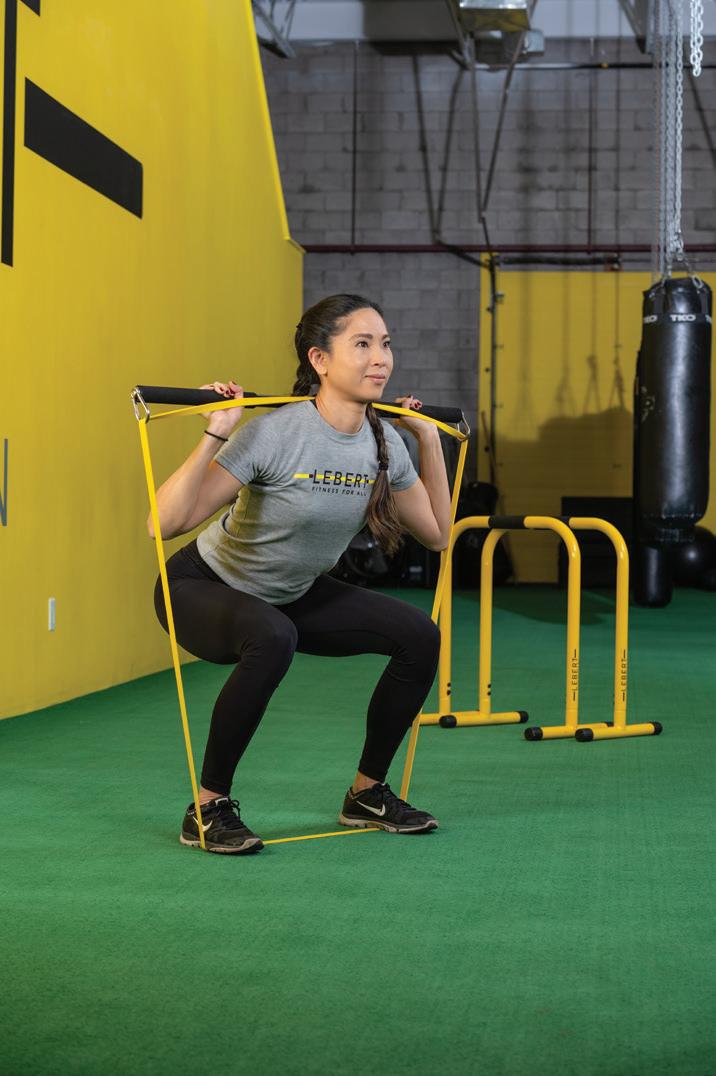
COFFEE NAPS: CAN THEY BOOST ALERTNESS?
EMOTIONAL VAMPIRES
DON'T LET THEM DRAIN YOUR POWER




OLDER FASTER STRONGER



FUELING THE DREAM MACHINE
ARE YOU LIVING WITH CRACKED PILLARS?
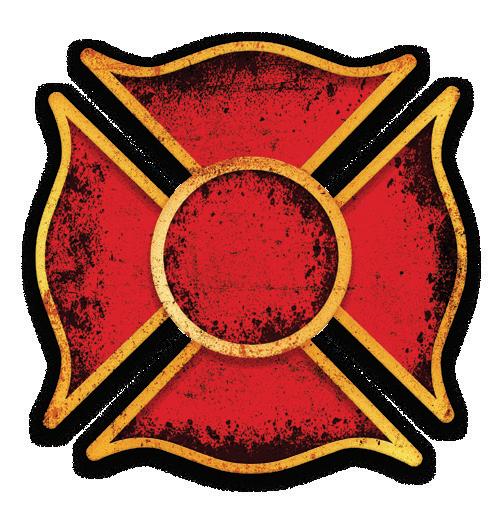



COFFEE NAPS: CAN THEY BOOST ALERTNESS?
DON'T LET THEM DRAIN YOUR POWER




OLDER FASTER STRONGER



FUELING THE DREAM MACHINE
ARE YOU LIVING WITH CRACKED PILLARS?



CRUSH YOUR DEBT ON THE CASH-ONLY DIET
MORE THAN SKIN DEEP TATTOOS:



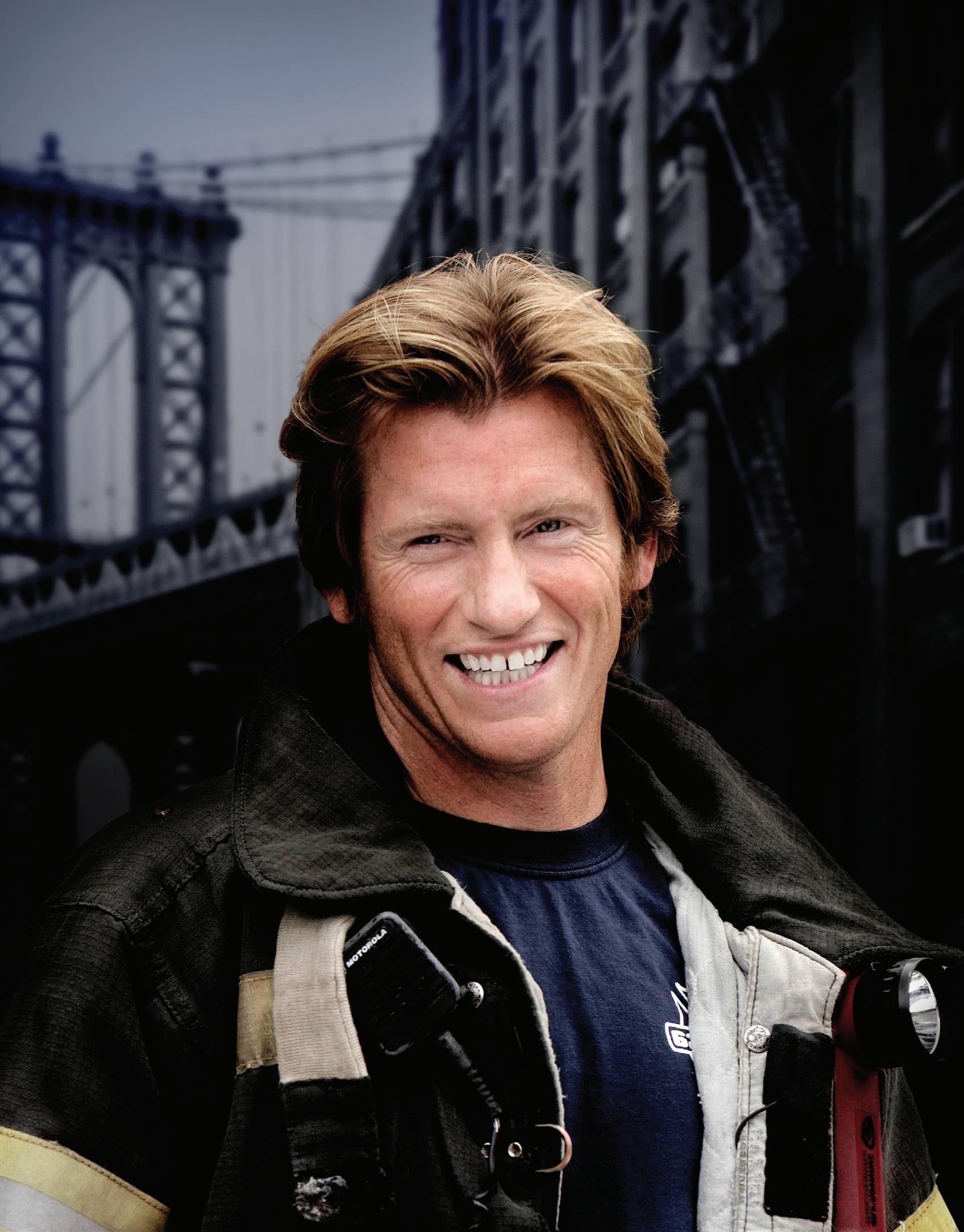

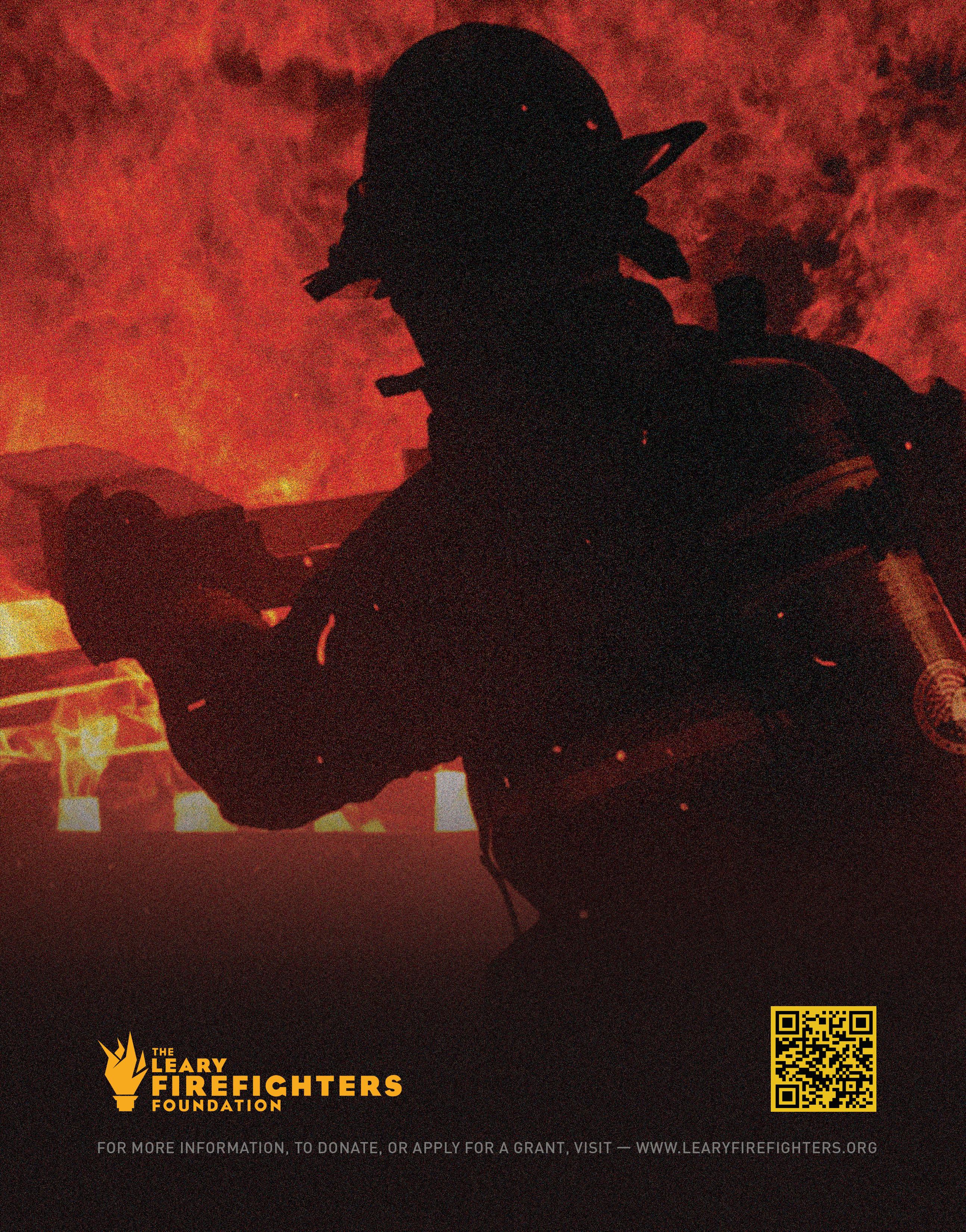

More than 10,000 firefighters have already joined the National Firefighter Registry (NFR) for Cancer. Whether you’re an active or retired firefighter, wildland or structural, with or without cancer, joining the NFR is one thing you can do to help researchers understand cancer risk among firefighters. It only takes 5 minutes to get started. Be part of the next 10,000 firefighters to join this historic effort.
JOIN THE NFR FOR CANCER



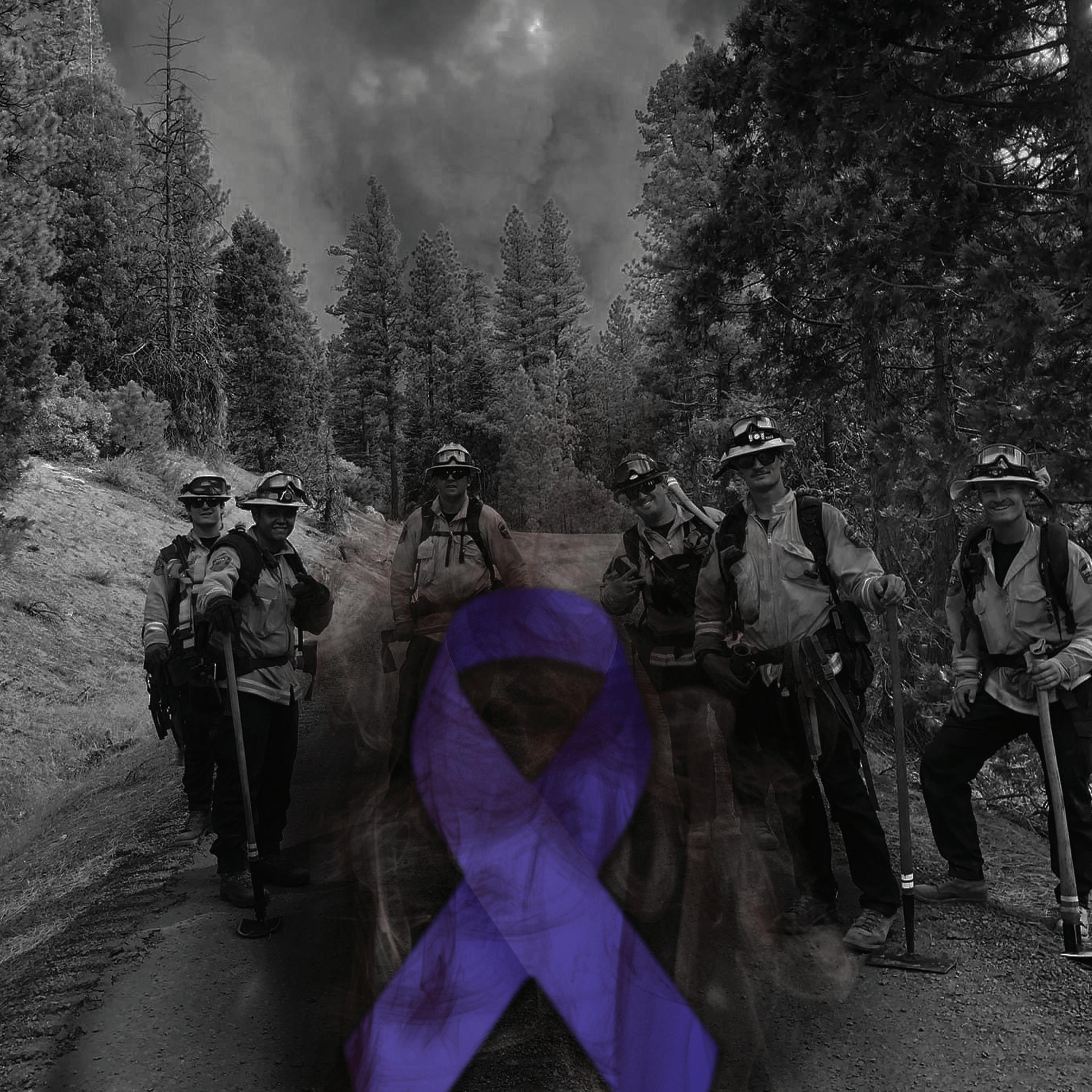
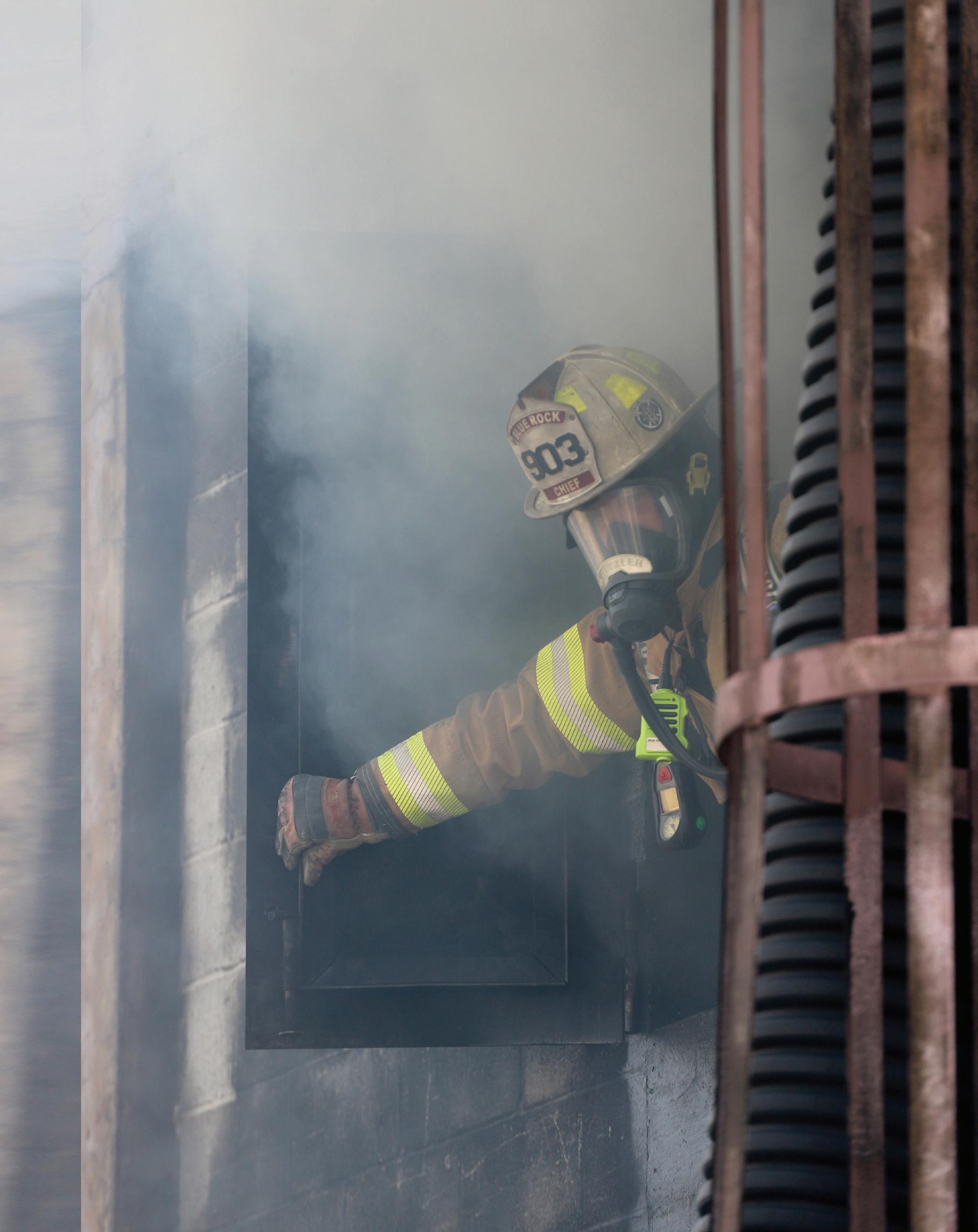
Take on the immersive firefighting simulator
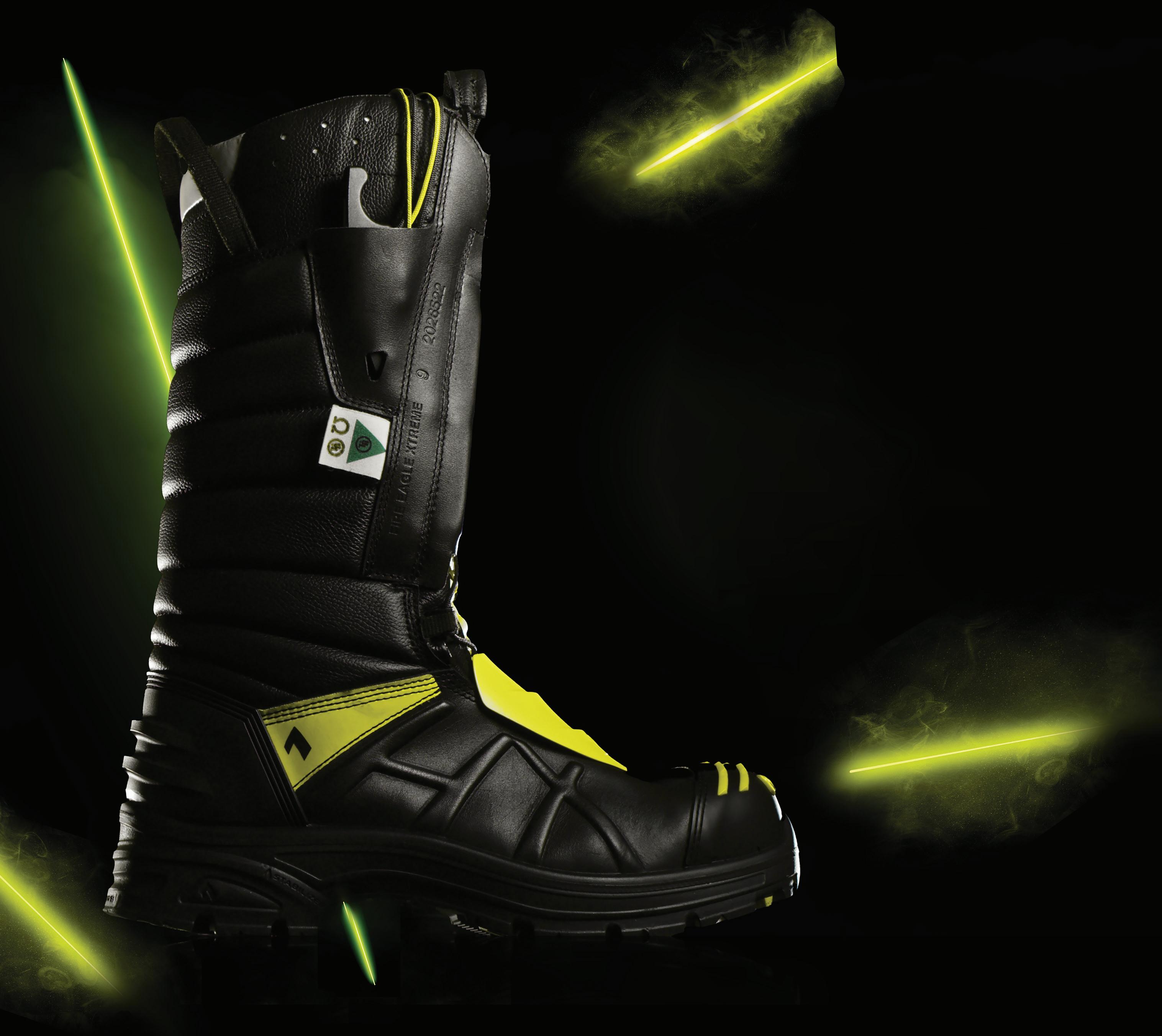





Fire Tattoos: More Than Skin Deep Perils of Morality ANIMAL MAGNETISM: THE HEALING POWER OF PETS

INTERVIEW: DENIS LEARY EMOTIONAL VAMPIRES

ARE YOU LIVING WITH CRACKED PILLARS?
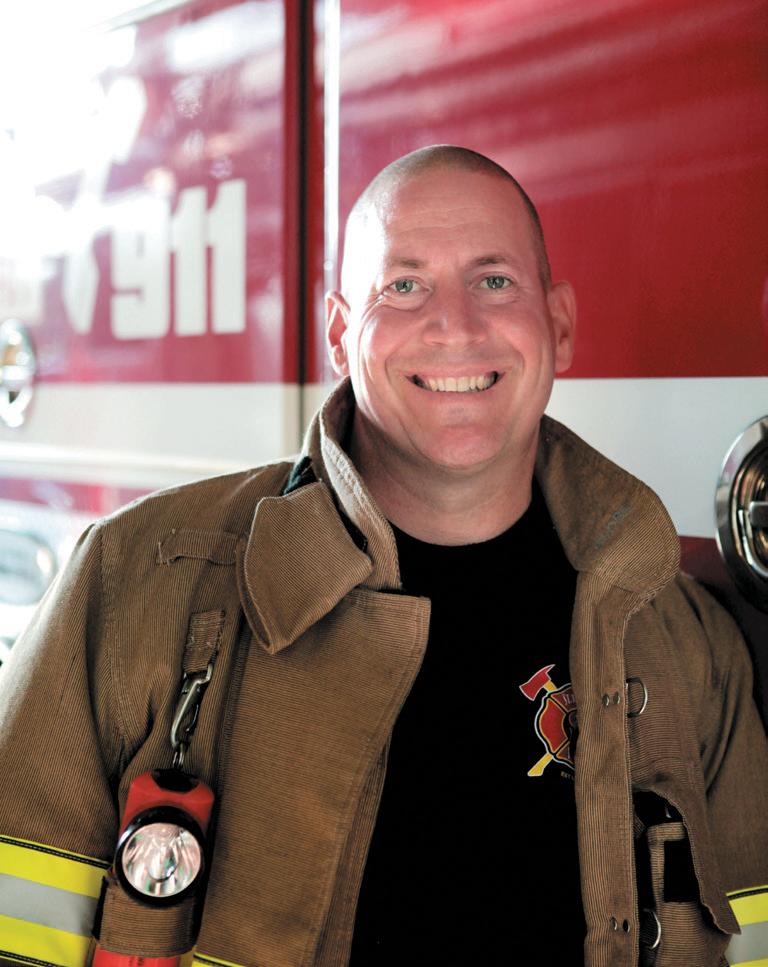
CRACKYL stands as a pioneer in reshaping the fire service industry. We are dedicated to providing firefighters with cutting-edge tools they can use every day to prioritize their health and well-being throughout their careers. Through features like daily check-ins and purposeful content, firefighters can access resources uniquely tailored to their needs, setting a new industry standard with personalized support that aligns with their interests and objectives.
We are doing two exciting new things that further that dedication to firefighters. First, the new CRACKYL App serves as a pivotal platform for engaging, inspiring, and guiding firefighters toward prioritizing their well-being while offering a transformative experience in accessing health and wellness resources. Second, our collaboration with Denis Leary and The Leary Firefighters Foundation aligns with our commitment to supporting firefighters holistically — supporting firefighters as whole people. Our partnership highlights the incredible work of The Leary Firefighters Foundation, which directly benefits fire departments and their firefighters. It also solidifies our joint effort to empower firefighters to improve all aspects of their lives. Join us on this journey to champion firefighter well-being and personal growth.

Kory Pearn
PUBLISHER / EDITOR-IN-CHIEF
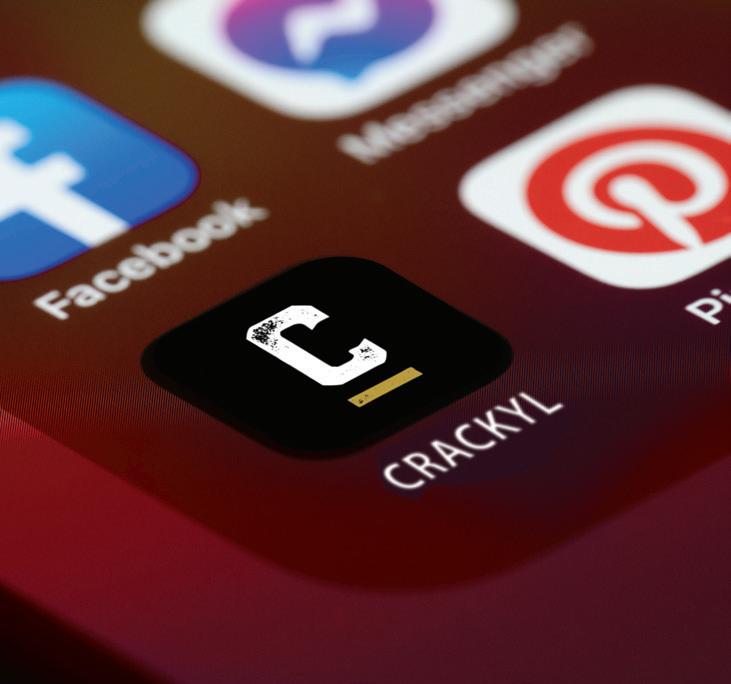
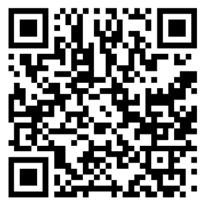

WHY THE NAME CRACKYL?
The inspiration behind the name CRACKYL comes from a feeling firefighters experience in the middle of a structure fire when a sudden calm comes over you and you hear a fire crackling all around a smoke-filled room, but can’t see it. The sound of a fire crackling is imprinted on every firefighter’s mind, and it roots us in this exhilarating and unpredictable profession. We want CRACKYL to become a sounding board for firefighters throughout their careers.
Firefighters are notorious for sitting around the firehouse, discussing their problems and offering advice. But the truth is, many of us don’t have the answers. We don’t know why we all fight about the same problems with our partners, never seem to have enough money left at the end of the month, and just can’t get along with the co-workers who are the most like us. At CRACKYL, we want to be the firefighter in the station who has a lot of those answers and provides accurate, practical, and life-changing solutions to the problems we all face.
EDITORIAL
PUBLISHER / EDITOR-IN-CHIEF KORY PEARN KPEARN@CRACKYLBUSINESSMEDIA.COM
MANAGING EDITOR LIZ FLEMING
DIGITAL EDITOR LEAH SOBON
COPY EDITOR MARTHA CHAPMAN
EXECUTIVE EDITOR RICK MARKLEY EDITOR@CRACKYLBUSINESSMEDIA.COM
DESIGN
EDITORIAL DESIGNER SARAH ROSS
EDITORIAL DESIGNER NICOLE MANNELL
BUSINESS DEVELOPMENT
DIRECTOR OF BUSINESS DEVELOPMENT DYLAN LABELLE DLABELLE@CRACKYLBUSINESSMEDIA.COM
SALES
PUBLISHER / EDITOR-IN-CHIEF KORY PEARN KPEARN@CRACKYLBUSINESSMEDIA.COM
INTERNATIONAL SALES MANAGER MOLLY JENKINS MJENKINS@CRACKYLBUSINESSMEDIA.COM
ACCOUNT & SOCIAL MEDIA MANAGER MARIA PELLETIER MPELLETIER@CRACKYLBUSINESSMEDIA.COM
PARTNERSHIPS
PARTNERSHIP MANAGER MATT RUMAS MRUMAS@CRACKYLBUSINESSMEDIA.COM
EXECUTIVE ASSISTANT RACHAEL SAVOIE RSAVOIE@CRACKYLBUSINESSMEDIA.COM
CONTRIBUTORS
BROOKE BARTLETT, KATIE BREAZEALE, KAREN F. DEPPA, MICHAEL A. DONAHUE, TONY DONG, LIZ FLEMING, NICK HALMASY, TRACY STEVENS HEJMANOWSKI, BRITTANY HOLLERBACH, HUSSIEN JABAI, ALICE JOHNSTON, RICK MARKLEY, MYNDA OHS, RYAN PROVENCHER, GERALYN ST. JOSEPH, LEAH SOBON, DANIEL SUNDAHL, DAVID JAMES VAUX
PHOTOGRAPHY
PHOTOGRAPHER STEPHEN BAER
COMIC
CARTOONIST JEFF MAKSUTA
CRACKYL Magazine is published four times a year by CRACKYL Media Inc. with copies delivered to firefighters across North America and beyond. No part of the content, including but not limited to editorial, advertising or photography, may be copied or reprinted without the permission of the publisher. ISSN # 2563-612X PUBLISHED AND PRODUCED BY: CRACKYL MEDIA INC.
SUBSCRIPTIONS
ORDER A ONE-YEAR ($39.79 USD) BY VISITING: CRACKYL.COM/MAGAZINE
FIRE DEPARTMENTS SAVE 40% ON PRINT SUBSCRIPTIONS.
TO ORDER MULTIPLE SUBSCRIPTIONS CONTACT: INFO@CRACKYLBUSINESSMEDIA.COM
SIGN UP FOR A DIGITAL SUBSCRIPTION CRACKYL.COM DOWNLOAD THE CRACKYL APP
The opinions presented in our magazine are those of the authors of the articles. We enjoy the opportunity to present a variety of viewpoints but do not necessarily endorse them.
COVER PHOTO OF: DENIS LEARY
PHOTO BY: FX
CRACKYL EXPERTS THANK
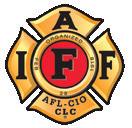
PSYCHOLOGY
DR. KRISTEN WHELDON, DR. BURTON CLARK
DR. ZACK ISOMA, PSYD, STEVE GILLESPIE
DR. JONATHAN MILBURN, DR. ANNE BISEK
DR. BROOKE BARTLETT, KAREN F. DEPPA, MAPP, JEN LEFTWICH, LMSW, CCISM
SHAUGHN MAXWELL, PSY.M
MICHAEL A. DONAHUE, PH.D
EMERGENCY MEDICINE
MICHAEL GUIRGUIS, M.D.
BEN TANNER, EMERGENCY MEDICINE PA
EXERCISE SCIENCE
ANTHONY DE BENEDICTIS, CAT(C), CSCS
TODD CAMBIO, BS, BA, CSCS
BRITTANY S. HOLLERBACH, PH.D.
JIM MCDONALD, NSCA, CPT, CSCS, TSAC-F
HUSSIEN JABAI, MS, CSCS, TSAC-F, CPT
JOE KOZIKOWSKI, NSCA-TSAC-F, PN2, PPSC
FINANCE
TRISH VAN SICKLE, LLQP, CSC, TONY DONG, MSC
MATTHEW BROOM, BBA, CFP
INTEGRATIVE HEALTH
NOAH GENTNER, PH.D., NBC-HWC
MENTAL HEALTH
ASHWIN PATEL, PH.D , ANASTASIA MILLER, PH.D.
SIMON MATTHEWS, FASLM DIPLLBLM, MHLTH SC, NBC-HWC, ICF-PCC, SARA A. JAHNKE, PH.D.
NUTRITION
MAUREEN STOECKLEIN, RD
MEGAN LAUTZ, MS, RD, TSAC-F
PATRICK MCCARTHY, MS
KATIE BREAZEALE, MS, RD, LD
SEX & RELATIONSHIPS
CARRIE FLEETWOOD, B.A., M.ED., R.P. O.A.M.H.P.
MYNDA OHS, PHD
DERMATOLOGY
SANOBER PEZAD DOCTOR, PH.D
SLEEP HEALTH
BEVERLY DAVID, REGISTERED PSYCHOLOGIST
PH.D., CLIN.PSY.D, CLIN.PSYCH
STRESS
WENDY LUND, BSCN, MSC
DONNIE HUTCHINSON, MBA, PHD
TINA BONNETT, ED.D, M.ECED., R.E.C.E., CERTIFIED TRAUMA INTEGRATION CLINICIAN
TRAINING
JOHN HOFMAN, CSCS-D, TSAC-F D, MS
JAKE PATTEN, SCCC, TSAC-F, USAW, PN-1
AARON ZAMZOW, BS-HEALTH AND WELLNESS, NSCA-CSCS, NASM-CPT, ACE-PEER FITNESS, PN1
DAVID VAUX, MSC
WELLNESS
DANIELLE COOK KAWASH, MS, RD, NBC-HWC
ALWYN WONG, BSC, DC, ART, MED. AC.




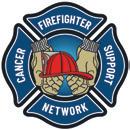
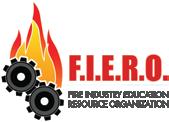


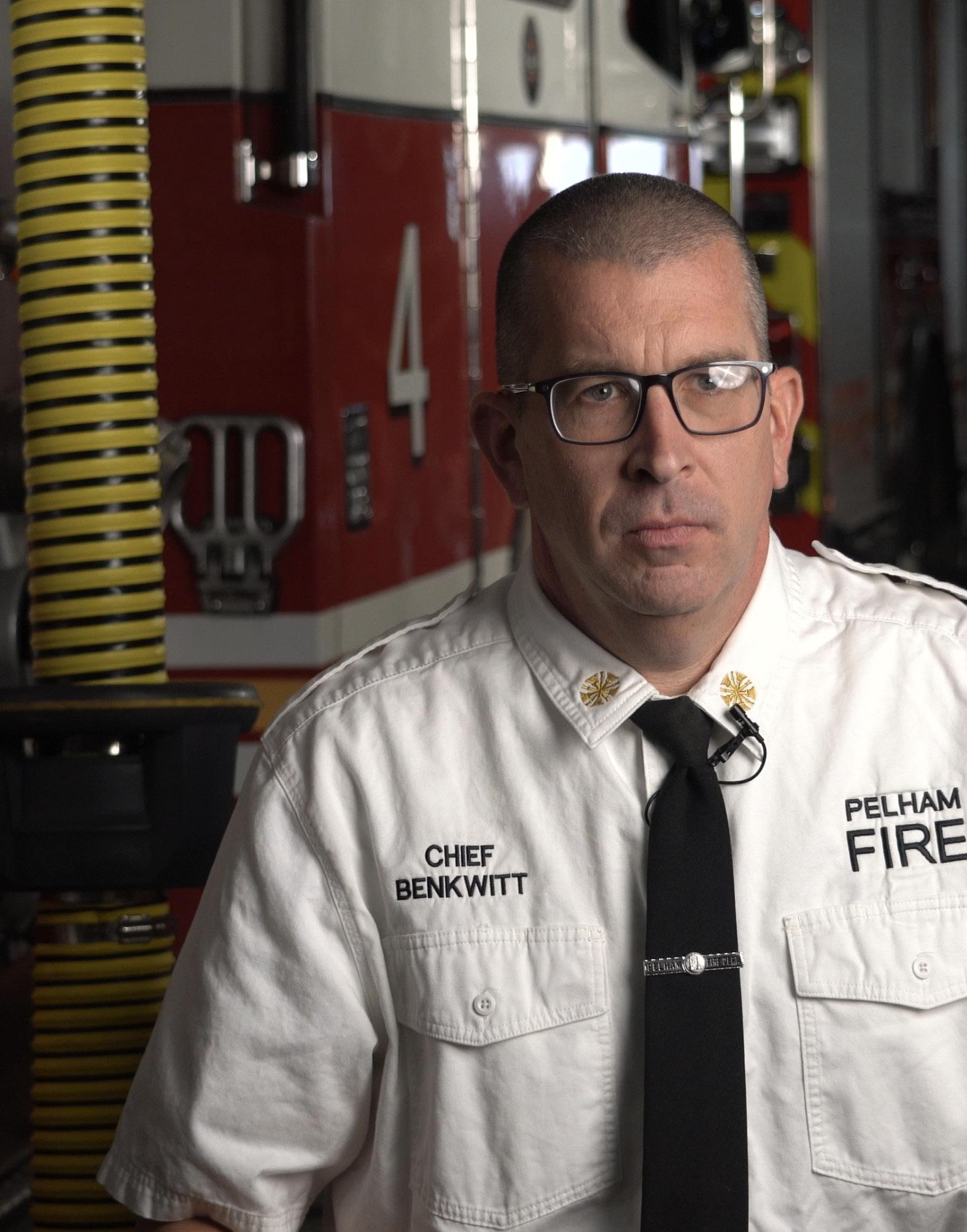
“THE PLYMOVENT SYSTEM GREATLY REDUCED THE CARCINOGENS OUR FIREFIGHTERS WERE EXPOSED TO ON A DAILY BASIS FROM DIESEL EXHAUST...”

CHIEF ROBERT BENKWITT III PELHAM FD, NY
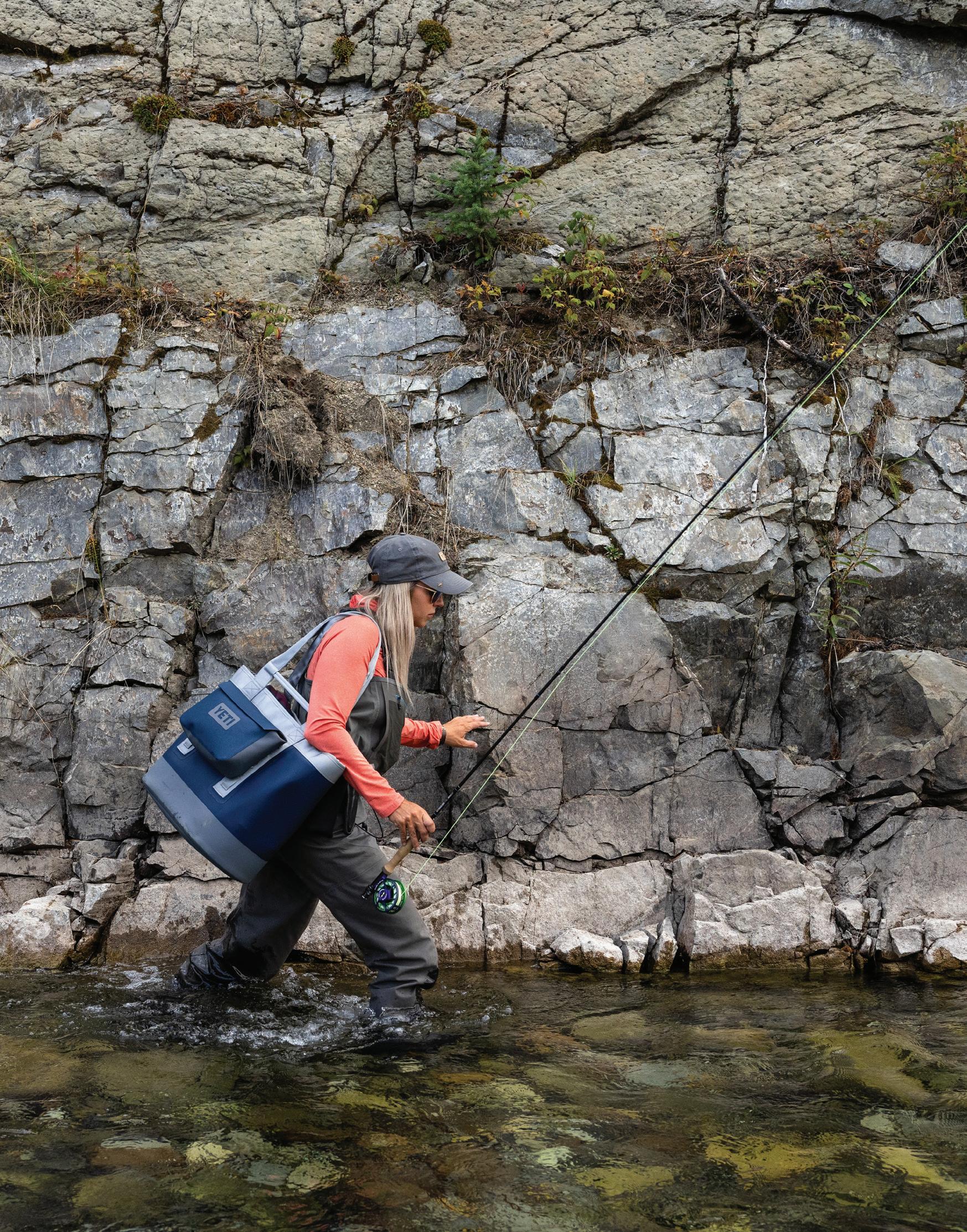



By Geralyn St. Joseph
Vampires are enjoying a surge of popularity in our culture. But romanticizing vampire behavior is frightening – even when the vampires aren’t of the neck-biting variety. They can lead us to accept all types of abusive behavior. Emotional vampires are every bit as manipulative as their bloodsucking, undead-making cousins. They are practically irresistible, and their goal is to control you and subtly siphon your energy.
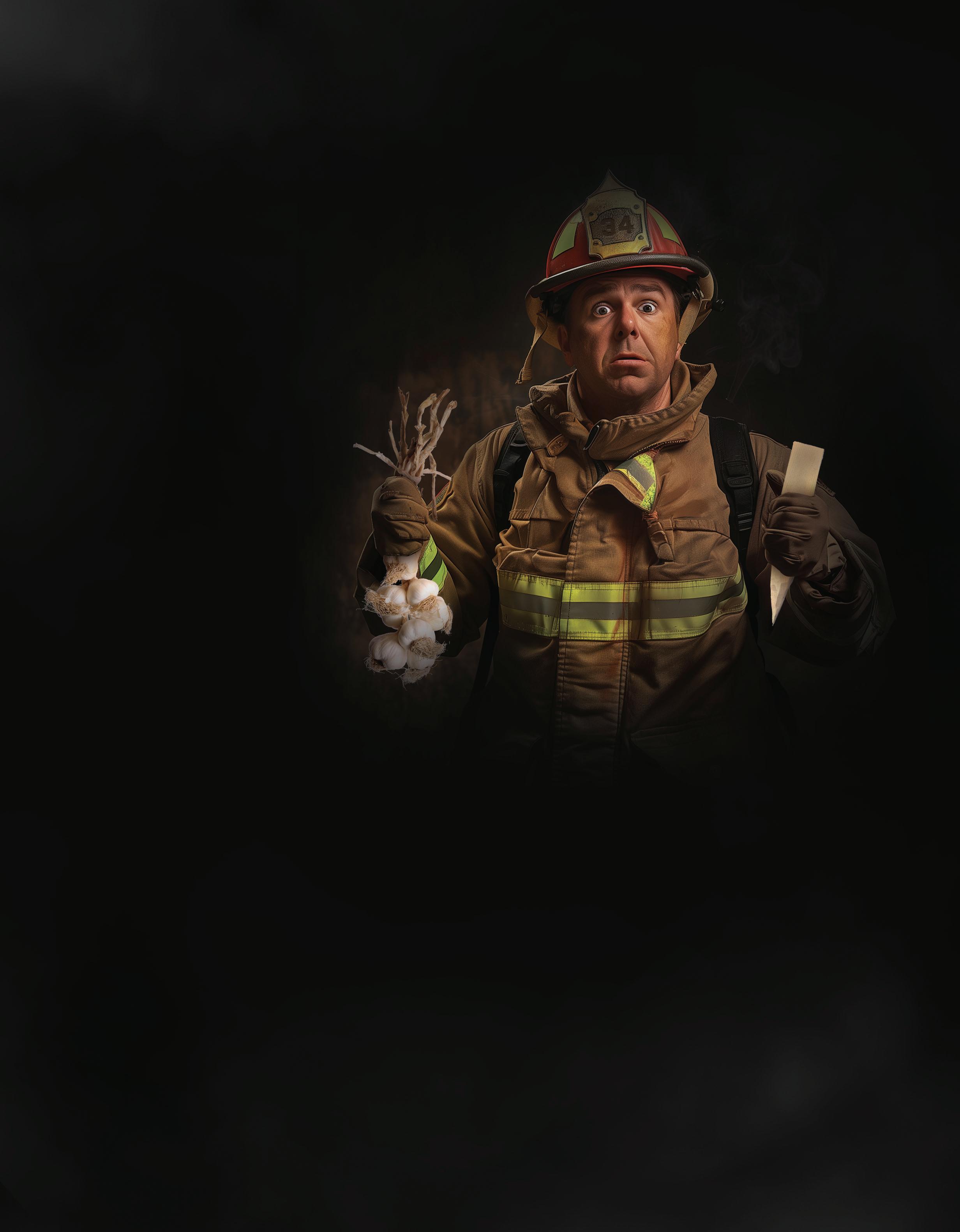
Don't let them drain your power!
YOU CONSISTENTLY FEEL TIRED AFTER SPEAKING TO OR BEING AROUND THIS PERSON.
THIS PERSON TRIES TO SINGLE YOU OUT OR ISOLATE YOU THROUGH FLATTERY, GIFTS, ETC. OR EVEN BY PUTTING PHYSICAL SPACE BETWEEN YOU AND OTHERS.
THEY HAVE NOTHING NICE TO SAY ABOUT ANYONE IN THEIR PAST.
THEY RELY ON OTHERS FOR THEIR SELF-WORTH. THEY ARE DIFFICULT TO WALK AWAY FROM FOR A VARIETY OF REASONS.
THEY TAKE NO REAL RESPONSIBILITY FOR THEIR LIFE CIRCUMSTANCES - BLAME IS THE NAME OF THEIR GAME.
Constantly down, the Victim is a whiner, and is very insecure about who they are and what they can achieve. They try to entice you into giving up some of your energy to pay attention to and encourage them. There are, of course, people who are truly insecure and are genuinely looking for help, but you’ll know the difference by the results you achieve when you offer assistance. A visible effort will achieve visible results.
For the Victim, life is something that happens to them and they take no responsibility. Someone else or something else is always to blame.
Charmers garner attention by being charming, using flattery and being entertaining clowns. They need to be the center of attention and try to achieve this by lightening the mood, even when it is inappropriate to do so. They become hurt and distressed when their tactics are questioned, drawing even more attention to themselves as their targets rush to reassure them. The Charmer knows just what to say and do to hold your attention. Attention from this type of emotional vampire can be addictive as your drive for their attention may cause you to neglect other responsibilities. You feel the pull even when you are not with them.
These emotional vampires cannot exist on their own and are so needy they constantly depend on you. Just when you think they’ve found their own feet, they quickly snap back into place – reverting to needy, clingy behavior. Because they rarely leave you for long, you have the sensation of wearing a clingy, wet shoe. You’re manipulated into believing that they need you. Although they sometimes seem to be trying to stand on their own, as soon as your attention is withdrawn, they fall and pull you back into their orbit.

This emotional vampire always has a story to tell and it’s always worse than yours. No matter what’s happening to you, only their needs are important. This person needs to be the center of attention at all times and will go to extreme lengths to keep the focus squarely on them. These are the people who always require a big entrance or exit and their behavior is typically very disruptive.
Since they are extremists, these short-tempered emotional vampires are either very happy or very angry, creating an environment where you need to stay perpetually on your toes to help regulate their emotional extremes.
While a necklace made of garlic cloves may have some effect, here are five solid strategies to keep these vampires at bay.
When someone crosses our boundaries, we experience discomfort. But unless we have healthy boundaries to begin with, it can be hard to tell when something’s wrong. Healthy boundaries are essential for healthy relationships. Emotional vampires thrive on crossing and destroying your boundaries. If you don’t have structured boundaries, you’ll find it difficult to detach from these parasites.
If you’re aware of your own needs, you will be able to discern when someone is manipulating you. If you have a need to be liked, you are more susceptible to the Charmer and the Yo-Yo. If you need to feel useful, the Victim and the Wet Shoe may be more attracted to you.
As your mom told you, ignore people who aren’t healthy for you.
When you find yourself confronted by a Drama Queen, have a Victim blame you for their failures, or sense a Wet Shoe try to guilt you into propping them up yet again, don’t react. If you find yourself cornered, try backing out of the room as they continue to talk. Point at the door and simply say, “I can’t help you.”
The emotional vampire probably won’t accept your rejection at first, but stay calm and repeat.
You do not owe anyone your energy or attention. You may have responsibilities, being a parent, a spouse, a partner or an employee. Take care of those responsibilities. You are not responsible for feeding someone’s energy without limits. That is true even for family.
Your mental and physical health are important. You cannot share what you do not have. Take care of you.
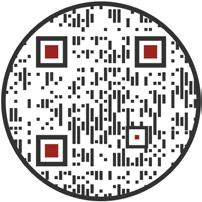
By Tracy Stevens Hejmanowski, Ph.D.
Firefighters aren’t known for wearing their hearts on their sleeves. After all, stoicism is the way of the guardian (it’s allegedly cool to be quiet). But even a civilian can see that the tattooed sleeve of a firefighter tells a story that their heart might otherwise keep secret.
And it’s not just a North American thing. Firefighter tattoos date back hundreds of years to Japanese samurai firefighters who were (not surprisingly) regarded as “rowdy, rebellious, and brave troublemakers.”
Even when tattoos fell out of favor with the Japanese government, the intricate and decorative motifs migrated to the inside of bunker coats. Those images bear a surprising resemblance to American firefighter graffiti themes of today: coveted camaraderie and loyalty to the cause, battle-worn sacrifices and victories, honor to the ascended and psychological resilience. And just like today, maybe even a souvenir from a blurry night out or a lost bet.
the ink may run only skin deep, but the imagery manifests what is housed in the heart and soul.
THE ADDED BONUS OF SYMBOLICALLY, PERMANENTLY STAINED SKIN? PERHAPS IT’S AN ACT OF DEFIANCE AGAINST AUTHORITY AND THE STATUS QUO.
Whether it be a banger of trash poker on your forearm or a tap-out session of micro-realism on your dorsal canvas (your back, duh), tattoos provide a permanent connection to significant people, places, events and memories. They portray, obviously or cryptically, the sacred duty of the fire service, its professional discipline and the co-existence of struggle and hope.
Tattoos can be a living tribute laden with loss and grief, a testament to the gallantry of the fire service, a pride in shared identity, and a heartening hat trick combined. The ongoing testaments to those who have made the ultimate sacrifice – during the 9/11 attacks, in one’s station, or intimately in one’s home – are forever memorialized for the bravery of their effort and fight.
AS YOU WELL KNOW, THIS FIGHT FOR LIFE CAN BE EXTERNAL AND VISIBLE, INTERNAL AND INVISIBLE, OR BOTH. HARROWING CHALLENGES ARE MET WITH TRIUMPH, TRAGEDY OR A CONFUSING MIX OF THE TWO.
The storied and traditional Maltese Cross often adorns the firefighter’s “outer shell” and universally reflects the ethos of the job. This signifies a willingness to sacrifice anything and everything to protect others, hopefully combined with the tempered humility of knowing the limits of one’s influence over certain outcomes. For some, tattoos that commemorate family and personal milestones complement themes reflecting the profession.
In all, they represent a respectful acknowledgment of the past, an aim to stay present and a cautious reminder for the future.
The process of getting inked is described on a continuum from peaceful to painful and ordinary to exciting and impulsive to soberly intentional. Regardless, most admit that it is undoubtedly therapeutic both in the process and the outcome. Unlike the physical health risks associated with chemical off-gassing, getting tattooed is a healthier way to defuse stress, sorrow, trauma and even joy. The ink may run only skin deep, but the imagery manifests what is housed in the heart and soul. It represents what is carried around, physically and emotionally.
And the placement? Usually meaningful too, especially if they are a part of a narrative or timeline as seen on sleeves. Either prominently displayed or intentionally hidden, placed literally close to the heart or in the rear view, the location is rarely random.
Despite the often clear symbolism of tattoos, the explanation by the wearer can depend on whether the person asking is worthy of the response as well as on the mood of the tattooee (not a word, but too great not to type).
If the response is brief, the story may just be that simple. Or, it may serve as a psychological displacement of emotional weight, like an emotional moisture barrier lying against the thermal liner that protects against potential pain. After all, firefighting pretty much kicks open the door to experiences that can weigh, prey, haunt and taunt the mind and heart.
Whatever the reason or circumstance, tattoos can intricately convey a message or remembrance, while providing an outlet for healing and hearing.
YOU’VE HEARD THE PHRASE, “A MEANS TO AN END” AND MAYBE EVEN TOSSED IT INTO A CONVERSATION. BUT HOW DOES “A MEANS TO AN END” APPLY TO YOU AND THE DECISIONS YOU MAKE?

By Alice Johnston

Let's say you get a coffee before work to wake yourself up for your 24-hour shift. The coffee was the means, and the end was to boost your energy and mood for your shift. You bought your spouse flowers as an apology following a conflict. The flowers were the means, and the end was a happier spouse. But what if you did the dishes and cleaned the house because you were hoping for intimacy from your partner? Since both those acts of service were your means and the end, well that was for you.
But is this wrong?
If you’re German philosopher Immanuel Kant, then you would say that this is morally wrong. He argued that doing anything to achieve a particular end does a disservice to both parties. Or, as he put it, “Act that you use humanity, whether in your own person or in the person of any other, always at the same time as an end, never merely as a means.”
Confusing?
Kant believed in the power of rationality, or more specifically rational thought. He focused on our consciousness and showcased the ways in which each person’s unique characteristics contribute to how they act as humans.
Mark Manson, a New York Times bestselling author, took a new perspective on Kant’s definition of a “means to an end”, arguing, “We are too obsessed with accumulating more means and are hopelessly oblivious to the ends that drive us.”
Interesting. But hang on – isn’t being selfish important for self-care? Why is it bad to have a means to an end?
At work, we do things for the right reasons, not because we are looking for thanks. This is the nature of being a firefighter. We take on this role gratefully, without any thought of being owed something in the end. But shouldn’t we carry that same standard into our home life and the people in it? Are we creating a double standard if we think that our actions deserve thanks?
The reality is that Kant wasn’t a firefighter battling a life-work balance that keeps everyone happy, supported and safe. Kant never had to worry about serving the public and his family.
WE ARE THE SAME PEOPLE AT WORK AS WE ARE AT HOME IN TERMS OF OUR BASELINE MORALS AND ETHICS
Home is a safe place where we might sometimes be allowed to feel selfish, but should our time and efforts be rewarded because those hours at home are far more limited and precious? How can we tip the scale back to doing things for the right reasons – as we do at work? And should we?
If you’ve ever heard the phrase, “Be the person your dog thinks you are”, then you have a good sense of where Kant was coming from. It’s hard because we humans aren’t perfect and the pedestal we try to climb is is high and slippery.
We know subconsciously what we need to get up and down, but that doesn’t mean we traverse it easily or without sacrifices. We take and need to absorb at the same rate – a process called neutralizing. Being selfish isn’t bad. In fact, it’s a huge part of self-care.
THE ONE AT HOME.
Having a means to an end at work is pure. At home, our means to an end is skewed because we do things in order to get what we want, to make us whole and enable us to go back to work to do things for the right reasons. It’s a normal part of our neutralizing process.
When we find ourselves teetering between doing things for the right reason rather than for our own gain,
we need to remember that we are the same people at work as we are at home in terms of our baseline morals and ethics. If you find yourself doing chores and expecting some type of gain, take a step back and evaluate the process of transitioning from your work monster to your home monster.
Kant might have been off base on some of his theories, but his evaluation of a means to an end has survived the test of time. And Manson had it right when he said that Kant’s theory had an impressive ripple effect. “Your improved ability to be honest with yourself will increase how honest you are with others. And your honesty with others will influence them to be more honest with themselves, which will help improve everyone’s lives.”
When we understand a means to an end, we can apply it to our lives and decisions. While ordering coffee for a clearer head is fairly benign, doing a favor for a pre-meditated return has a far bigger sting factor. We are good people working in a career that is full of thankless actions. The sooner we come to terms with our work life trailing behind us into our personal life, the sooner we will be able to ensure that our “ends” aren’t sinking our moral boats before they’ve had a chance to set sail.
Who knew that a German philosopher who never set foot outside his home town could know so much about why we do the things we do?
If Kant were alive today, we suspect he might suggest the following: Instead of allowing your means to an end to follow a one-sided design, shake up your approach. Clean the house without any expectations. Give your spouse flowers just because. Initiate sexual pleasure with your partner without trying to accumulate brownie points first. Most importantly, take a step back and realize that, here in the fire service, we are probably the most selfless people on the planet.
And go ahead and get a coffee for all the same reasons you had before – we understand.
EVERY PICTURE TELLS A STORY OF FIRST-RESPONDER TRAUMA AND GROWTH BEYOND THAT EXPERIENCE.
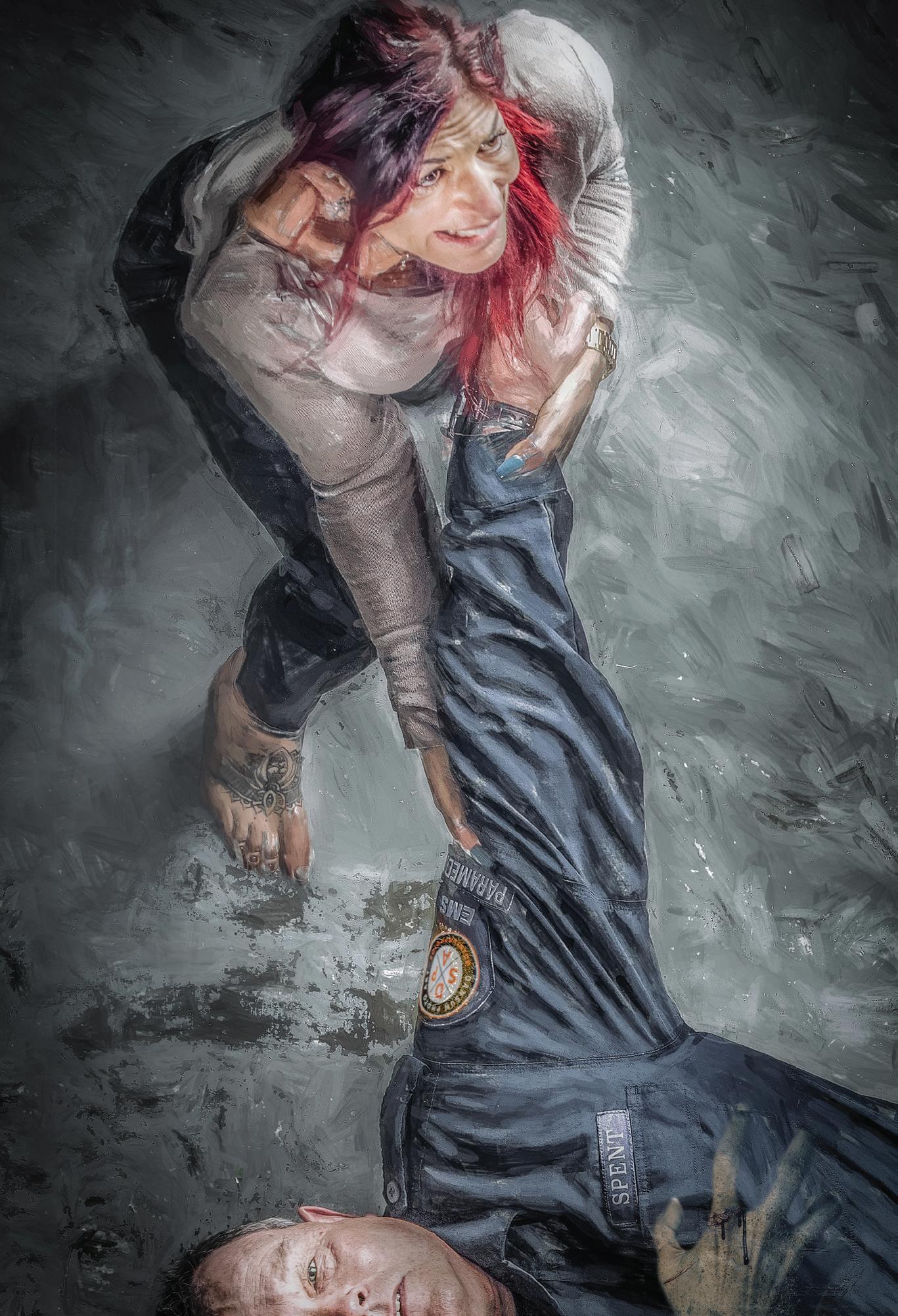



" IF I WANTED TO PURGE THE
FROM MY HEAD, I HAD TO FACE THEM HEAD-ON."

I started creating my artwork in 2014 after being diagnosed with PTSD. My psychologist said it would be a good idea to use my photography. It would, he said, help to process the complex systems of trauma that had built up in my head.
I just wanted him to give me a pill so I could feel better and get back to work. But he told me it didn't work that way, and if I wanted to purge the demons from my head, I had to face them head-on with an attitude of authenticity and vulnerability.
That sounded terrifying – but he was right. By facing my traumas and working through them in artwork, I’ve been able to purge the organic monsters that that invaded my consciousness.
Here’s what that invasion looks like for me. The process starts with a persistent emotion, thought or experience that I can't get out of my head. I think about that experience. Then an image will pop into my mind, which transforms that complex, horrid experience into an all-inclusive image that is easier for me to comprehend.
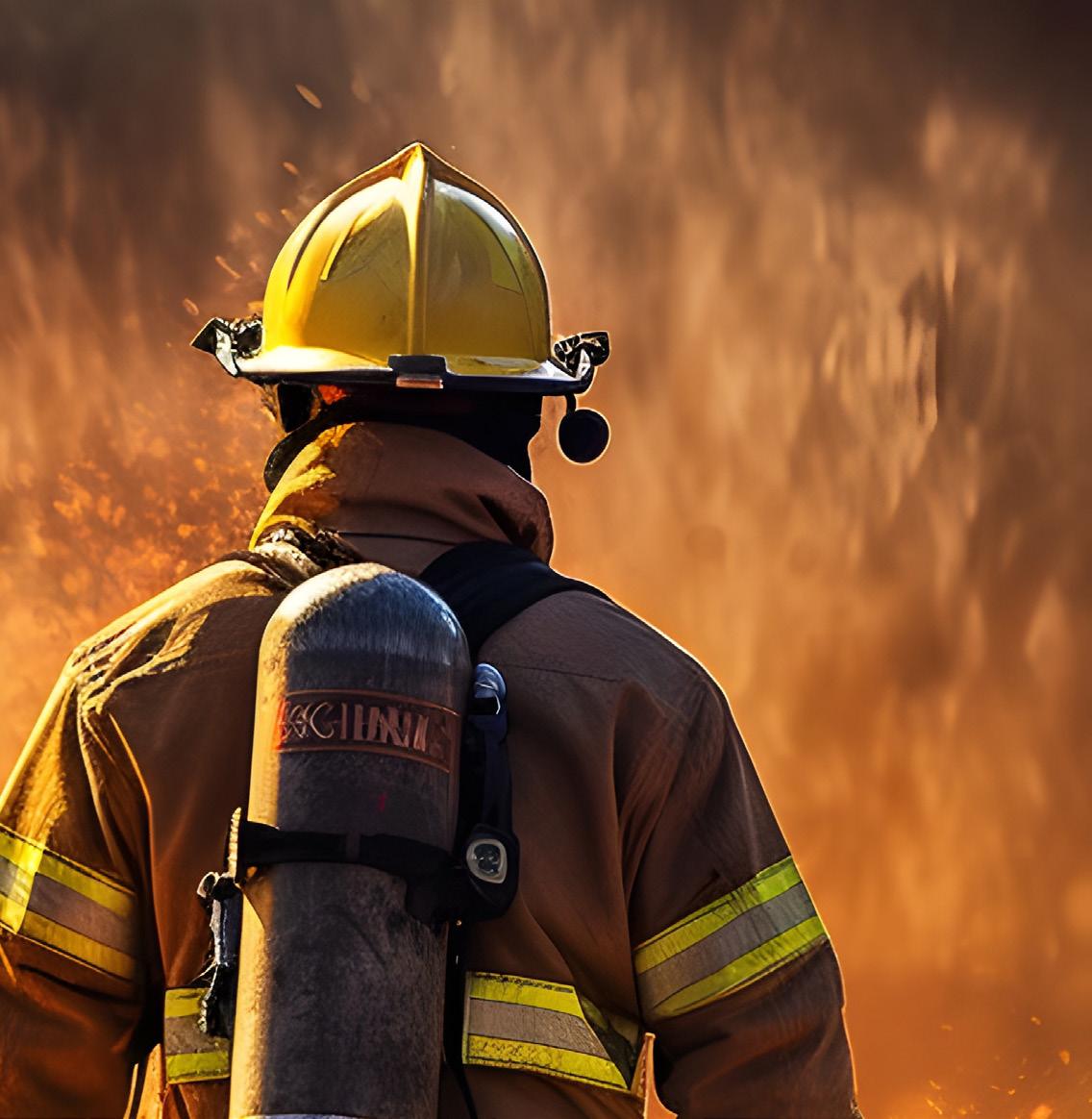

Why the University of Louisville?
• Earn up to 48 credit hours, tuition free
• Online and asynchronous - no mandatory class meetings
• Tuition is the same for all students, wherever you are in the world
• An R1 university with world-class faculty
Fast-track your career with one of these in-demand degrees:
• B.S. in Healthcare Leadership

• B.S. in Organizational Leadership and Learning
• M.S. in Human Resources and Organization Development

Scan the QR code or visit our website to learn more! TAKE THE NEXT STEP.
Combine your experience on the front lines with a degree from the University of Louisville, a powerhouse of research and innovation, and lead with expertise. louisville.edu/online
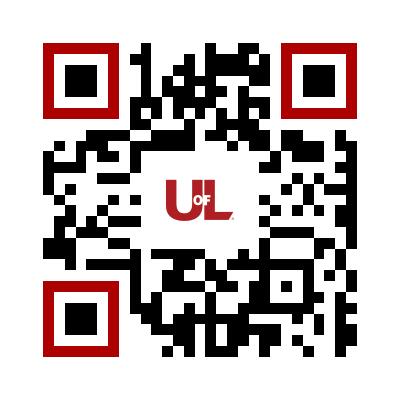




And here’s how I confront that invasion. My goal is to create artwork that matches the image in my head as closely as possible. The closer I can get to reproducing that image in artwork, the more therapeutic the process. When I'm done, I no longer have the emotions and behaviors attached to that experience. The memory remains, but the physical and emotional response is gone.
After 10 years of creating artwork and banishing my demons into images, I have rewired my brain, and have become better than I was before my trauma – and it’s all because of my trauma.
Because I didn’t think others would understand, I didn't share my initial images for months. I was fearful that there would be a backlash for portraying emergency workers in a vulnerable state. But when I finally did share them, the exact opposite happened. Others felt the same way I did: I wasn't alone, which was an incredible part of my healing journey. I felt validated, understood and supported. I still receive several emails daily from our peers who share what my artwork means to them.
In 2023, I published my fourth art book, which included the experiences of others along with my original text next to the images. My artwork has been featured in many publications and is now recognized worldwide. I travel internationally, speaking about my art and personal experiences with occupational stress injuries and post-traumatic growth.
My love of photography originated during my travels and while I was working as a teacher in various countries. As my technique matured, I developed a blend of photography and graphic art, which I call photo art. The majority of my work involves emergency services photography and l enjoy combining photography's technical and artistic elements to portray our complex experiences.
I’M PASSIONATE ABOUT REDUCING THE STIGMA OF PTSD FOR FIRST RESPONDERS AND HAVE SPENT TEN YEARS USING MY ART TO RAISE AWARENESS WORLDWIDE.

Daniel Sundahl’s journey with art has inspired him to become a counselor, and he plans to help others suffering from trauma navigate their way to post-traumatic growth. In 2023, he created The Recovery and Resiliency Foundation, a registered charity he’s developing to help those suffering from trauma.


FR station wear built specifically with you in mind. Offering superior quality, safety, durability, and performance. Protection that works with you, during any part of your work day.

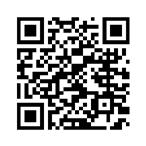










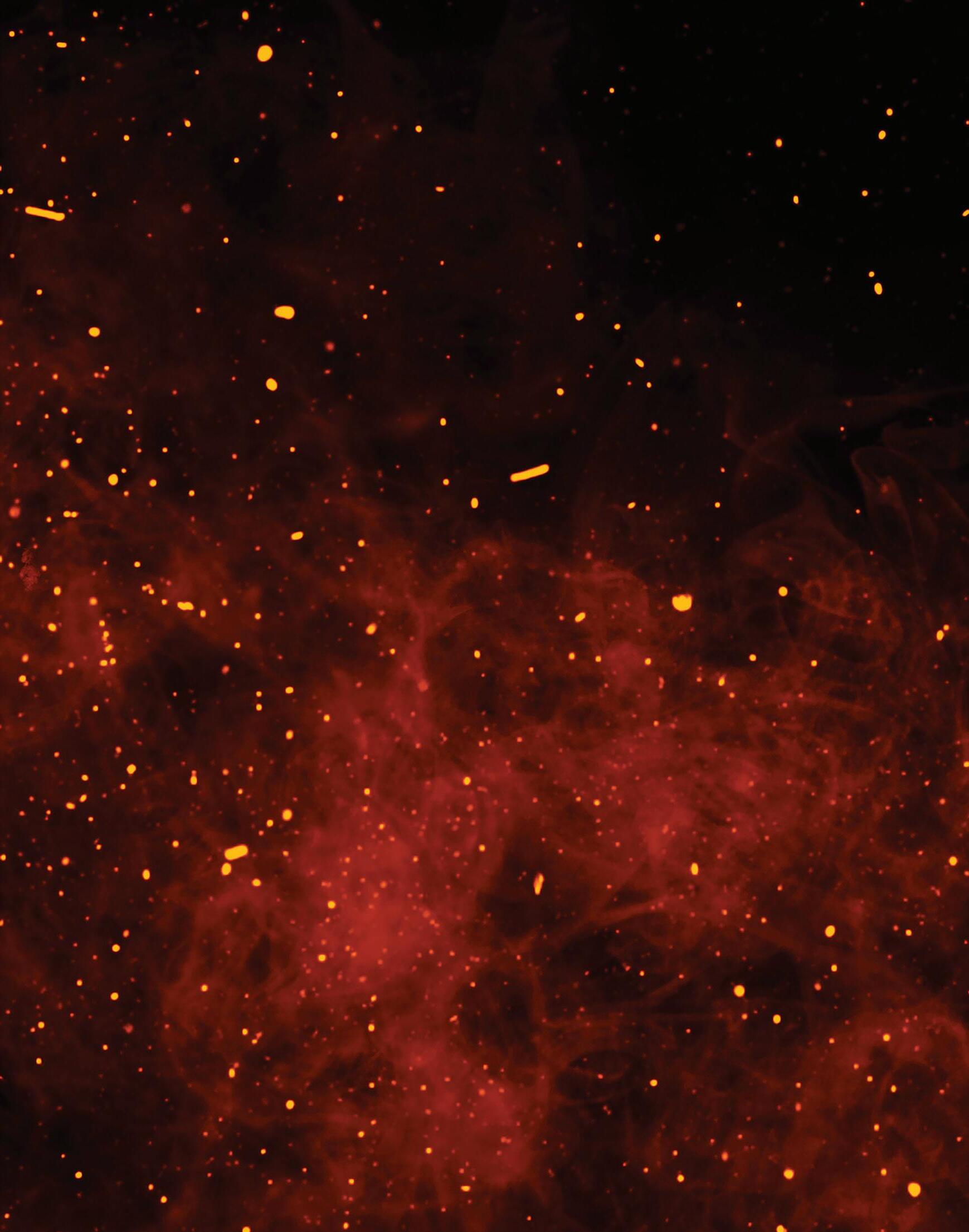
By David James Vaux, BSc, MSc, MSc, author of Stronger
“I wish I was weaker,” said no one. Ever. The artist Bansky is credited with saying, "They say you die twice. One time when you stop breathing, and a second time, a bit later on, when somebody says your name for the last time."
I BELIEVE MANY OF US EXPERIENCE A THIRD DEATH WHEN, IN OUR LATTER YEARS, WE LOSE THE PHYSICAL ABILITY TO LIVE INDEPENDENTLY AND WITHOUT CARE.
Loss of balance and strength are often simply accepted as an inevitable consequence of aging, along with fatigue and pain. But what if I were to suggest that in most cases, this is simply a loss of physical condition? What if we can do something about this phenomenon? Not aging per se, but the loss of strength which is so often attributed to it.
You may not think that this has much bearing on you right now,
We can all remember responding to heartbreaking calls in which an older person had injured themselves as the result of a fall. Aside from the obvious impact on that individual, such events can also have a huge effect on their family and the wider community. Around the globe, falling is the leading cause of death from injury in those over 65.
but what about “old” you? Will it become an issue for you in 20 or 30 years? The fact is, losing muscle mass and strength, which often goes hand in hand with poorer balance, starts in our mid-thirties and accelerates with age, leaving many older people unable to live independently.
There are several causes, driven by hormonal changes, poor lifestyle choices and lack of long-term strategies to preserve skeletal muscle.
In addition, women have to contend with the effects of menopause on their ability to maintain lean muscle mass and bone health.
Thankfully, we can offset this decrease in muscle mass, bone health and balance by ensuring that our fitness programs lend themselves to building functional muscle mass that can be quickly used when needed. In the aging game, speed is everything – that is, the speed of our muscle contractions.
There are three types of fiber within skeletal muscle: One is slow twitch (built for endurance) and the other two are fast twitch (built for short and powerful bursts of energy). The maintenance of our fast-twitch fibers will determine how our later life stands or falls. Fast-twitch muscle fibers are lost in aging much more
If we participate only in endurance exercise, our fast-twitch fibers will literally wither away or take on slow twitch characteristics, adding to the shrinking-and-slowing effect. This is risky, because losing fast-twitch fibers means losing our ability to save ourselves quickly from a trip or even to get up from the floor if we fall. We also suffer a drop in our immunity in addition to a reduction
1 You don't always need muscle failure to get stronger and build functional muscle. A moderate to hard (7 out of 10) difficulty will do the job while avoiding fatigue or injury.
2 Train major movements that require the use of muscle groups working together such as press up/pull up or squats (as opposed to exercises that isolate a muscle).
3 Adopting a stretching routine will further reduce injury risk.

quickly than their slower cousins. It’s for this reason that an older relative might seem to be aging quite well but suddenly seems to shrink and slow down almost overnight.
Both types of fast-twitch fibers are bigger, produce more force and are used only when we engage
in activity that requires more strength or power than our slowtwitch fibers can produce. Smaller slow-twitch fibers, on the other hand, are maintained by normal every-day activity or endurance exercises such as walking, jogging, cycling or swimming.
in our body’s readiness to perform its day-to-day housekeeping and recover from injury or infection.
If you’re middle-aged, the smartest thing you can do is craft a sustainable training program that ticks the box for both strength and power. Strength and power activities maintain our most precious aging asset: our fast-twitch fibers.
Staying strong in older age is one of the most helpful things you can do for yourself, your loved ones and your community.
Being healthy, strong and happy in retirement should be approached in the same way that we build a pension. The sooner we start investing, the more comfortable we will all be.
4 Sleep and recovery are as important as training for strength. On your off days, prioritize the return to normal sleeping patterns and use breathing tools to help you relax.
5 If you are going to the trouble of strength training, consider upping your daily protein intake to 1.2 to 1.5 grams of protein per kilo (2.2 pounds) of bodyweight.
6 Find ways to work on quicker contractions of your muscles as this will maintain your fast-twitch fibers. This can be quicker contractions of your normal weight training program or activities such as plyometrics (short, intense bursts of activity), slam balls, racket sports, punching bag drills or skipping.
Bonus! Strengthening your muscles will also protect your joints.
David Vaux is recognised as one of the UK’s most innovative osteopaths, with a special interest in strength and movement prescription for optimal ageing and pain management.
He began work as a second generation London firefighter, serving for 15 years on fire rescue operations and as physical education officer until he suffered a career-ending injury. He subsequently retrained as an osteopath, applying strength and movement research to his own rehabilitation while gaining two master’s degrees in the process.
David’s new rescue mission is the democratisation of strength for all, in the fight for optimal immunity, independent ageing and resilience.




Only humans with animals understand the benefits. We squawk that it’s irritating to have to take the dog out for a wee in subzero temps, hiss about how annoying the fur is, or growl about how the cat always poops right after you’ve changed her litter — but there’s a reason animal lovers tolerate it all.
Having a dog lean against you when you’re sad, hearing a cat purr in your ear when you’re anxious, savoring the satisfaction of creating a tank full of beautiful tropical fish, or even reaping the joy of watching a rodent scurry around your lap as you sit on the couch cannot be equaled.
But what about the people who own white couches? Or leave the plastic on their digital screens? They may swear that animals are too much mess. But is there a chance that they might benefit from the right type of animal?
Therapy animals are not a new concept – we’ve been using animals for care and comfort since 3000 BC when it’s thought
By Leah Sobon
that ancient civilizations began to see the value of domesticated animals for companionship. An Emergency Support Animal (ESA) can be a great source of healing and companionship. Their presence can significantly improve your life, especially if you’re a first responder dealing with the unique stresses of the job. Choosing an ESA that meets your specific needs is crucial to ensuring that you get the greatest benefit. For example, if you struggle with anxiety, a dog trained to detect and respond to anxiety attacks can be an ideal choice.
But maybe your ESA isn’t a dog …
Animals including miniature horses, pigs, or even snakes can provide a unique perspective, start new conversations and promote acceptance. They can help you step out of
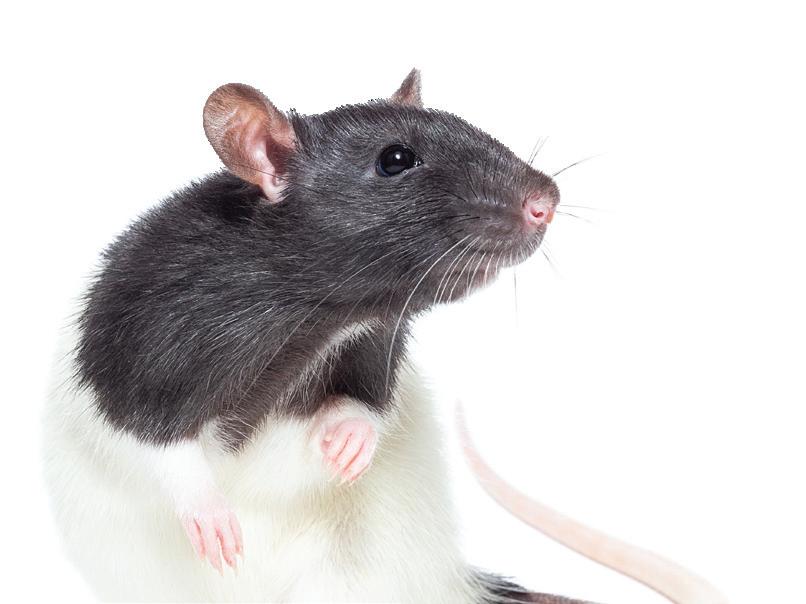



Not sure where to start? Here are some no-brainers:
Farm animals, particularly horses (whether you own or just visit them) offer some major mental and emotional benefits including meaningful daily occupation, a connection that fosters a valued relationship, increased coping skills, opportunities for reciprocity, distraction from daily problems, relaxation, feelings of acceptance and purpose, creation of healthy behaviors, and time for reflection and feedback. Goat yoga exists for a reason!
Other non-traditional mammals include rats (who are highly regarded in the rodent world), chinchillas (hypoallergenic), and even guinea pigs. They’re great options if farm ownership or visits aren't in the cards.
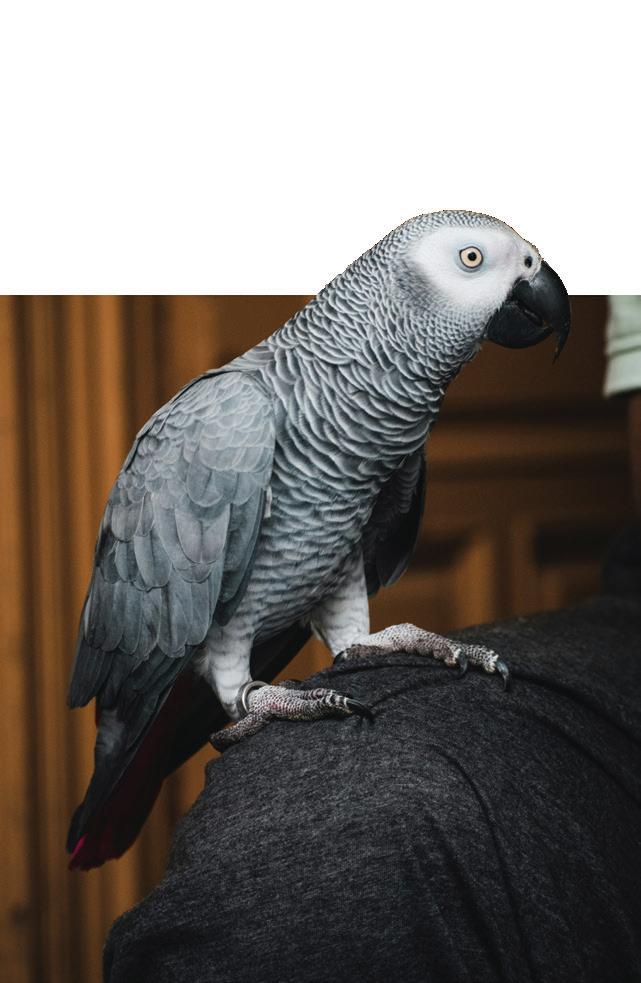

Whether you choose a parakeet, a couple of ducks or something as exotic as an African grey parrot, birds provide many therapeutic benefits. It goes without saying that when we see birds in nature singing and flying, it’s hard not to enjoy them. We know tuning into nature has direct health benefits, but why do birds also make great pets?
Intelligent as well as able to learn and remember what they’re taught, birds bond with their human owners –something we used to think happened only with dogs and cats. Birds require less from their owners and enjoy a much cheaper diet. Thankfully, they don’t mind the term “birdbrains” because they are quite the opposite.

“Why did it have to be snakes?” sighed Indiana Jones as he looked down into the deep pit of danger noodles. While most of us might share his fear of snakes, others know better and are enthusiastic reptile owners. Snakes are magnificent creatures that can provide their owners with many years of enjoyment. Geckos, tortoises, water dragons, anoles, monitors, and lizards can be — and this may surprise you — more expensive to purchase than mammals but offer many years of companionship. And watching them grow can provide some of the same satisfaction as owning more conventional pets.

of the filter or the gentle movements of a fish, the experience can be both tranquil and creative as you build yourself an aquatic paradise. If life leaves you feeling overwhelmed, try sitting in front of your tank and take some big deep breaths while listening to the natural white noise.
These "worst pets" are purely fictional and meant for a good laugh. Remember, when it comes to choosing a pet, it's essential to consider your lifestyle, capabilities, and the well-being of the animal before bringing them into your home.
While it may sound like a lowmaintenance pet, the invisible dog tends to run off and never be found, hide only one-half of your sock pairs, and leave invisible but not scentless messes all over the house.
Rocks make terrible pets as they are not very interactive, leave little piles of dust wherever they lay, and have a tendency to be quite stubborn when it comes to tricks and obedience training.
A ninja cat may seem like a great idea for a pet until you realize it's constantly disappearing, leaving behind a trail of destruction, and practicing its stealth attacks on unsuspecting house guests.
While majestic and mythical, unicorns can be quite highmaintenance pets. They demand constant grooming of their rainbow mane and can be moody if not provided with enough sparkles. Don’t even get us started on their diet.

The benefits of ESAs are well-documented. They can help reduce stress, anxiety, and depression, improve your mood and increase social interaction. But if you're dealing with significant emotional or mental health issues, an ESA is not a substitute for professional help.
Whether you start easy with a goldfish, jump right into dust baths with a chinchilla, or already have a ziplock bag full of dead rodents in your freezer for your snake, the first step
Sponge Bob would be proud if you joined the ranks of snail pet owners. Or maybe crabs (think Moon crabs) are more up your alley. If legs don’t bother you, you can jump right into eight-legged spider friends — which will certainly make you the topic of the table at work. You might just find that no one wants to come over to your place.
is to assess whether you need an animal to help with anxiety, depression, stress or are simply looking for companionship.
Just because you’ve never tried owning a pet doesn’t make it a bad idea. Uh … unless we’re talking about bears. That’s simply a terrible idea.

Keeping an alien blob as a pet may sound exciting, but good luck trying to figure out its dietary preferences, exercise regimen, or communication methods beyond gurgling noises.
Sure, they're low maintenance, but zombie goldfish tend to scare off visitors with their glassy stare and occasional attempts to nibble on fingers.
Imagine a parrot that doesn't mimic speech but screams random profanities at the top of its lungs. Great for scaring off intruders, but not so great for maintaining peace at home.
The name is cute but its messes are large. If picking up dog poop grosses you out then this will take you over the edge. And you better hope you invested in solid wood furniture because IKEA doesn’t stand a chance against this ginormous species.
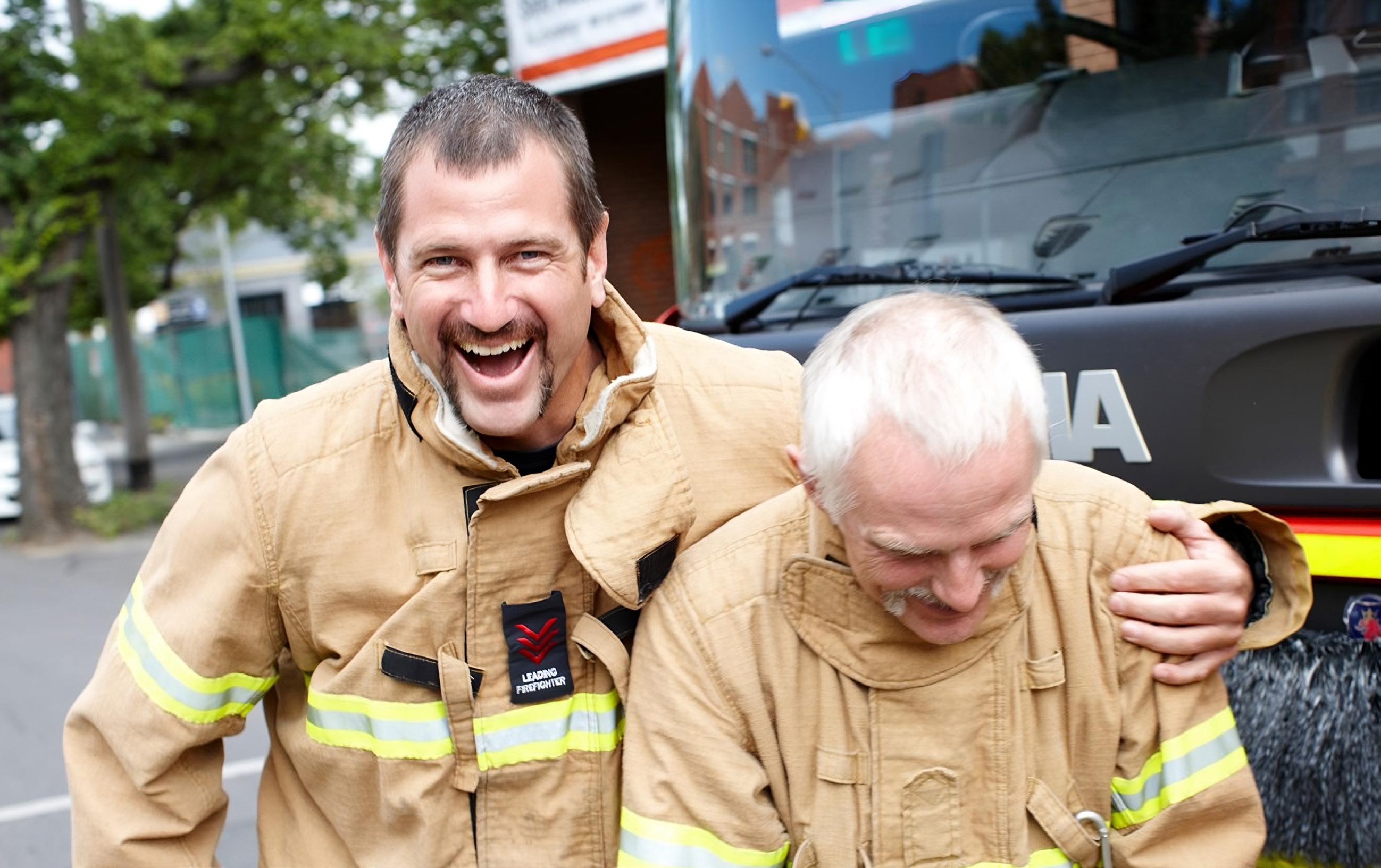
WE CAN’T THANK YOU ENOUGH.
We’re inspired by your commitment to the community. Your support of Movember is more than we could’ve asked for – and has blown us away.
And even though moustache season is over, let’s make mental health a bigger part of the day-to-day. We’re here to help. It’s the least we can do to show how much we appreciate you.

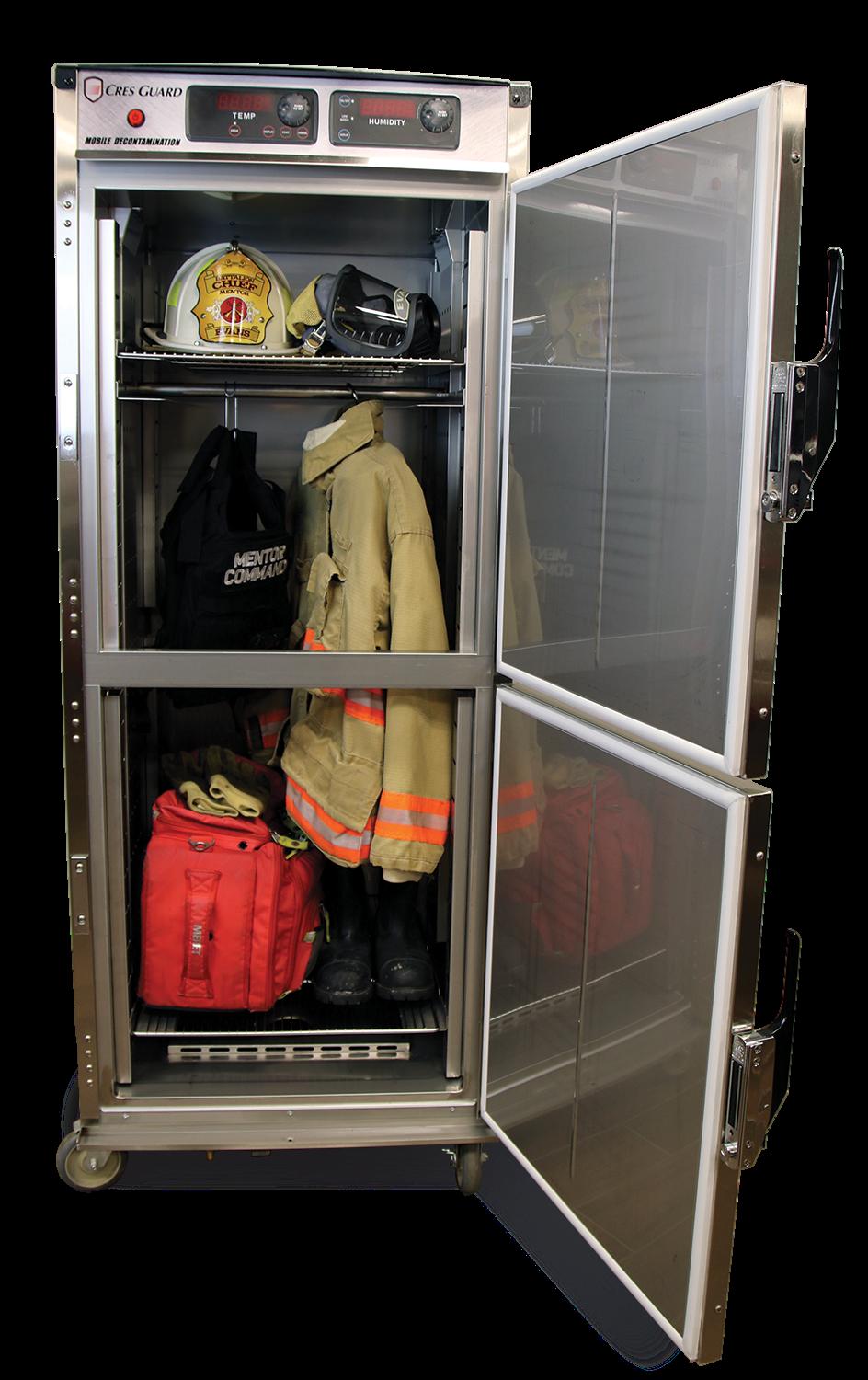



By Katie Breazeale, MS, RD, LD
We’ve all felt that mid-afternoon drowsiness and loss of energy. Some nap, others power up with caffeine. What if we combined caffeine and napping?
Coffee naps offer an effective, safe and drug-free way to boost energy levels.
It’s no secret that first responders have terrible sleeping habits, and we all know why. Night tones jolt you from sleep, propelling your nervous system from 0 to 60 in the blink of an eye. And with rare exceptions, when the call ends, most of us can't instantly shut off that adrenaline rush and slip back into wonderful sleep. Often this is repeated several times without the luxury of sleeping-in to make up for lost sleep. That mid-afternoon crash is caused by adenosine, a neurotransmitter that builds throughout the day, causing drowsiness. One cure for that buildup is, of course, sleep. A 30-minute nap will heighten your alertness by clearing the adenosine buildup. Caffeine, the stimulant found in coffee, is another rejuvenating tool – one that works by blocking adenosine from causing you to be sleepy.
THE COFFEE NAP INVOLVES CONSUMING 12 OUNCES OF COFFEE, THEN IMMEDIATELY TAKING A NAP. THE NAP CLEARS OUT THE ADENOSINE AND THE CAFFEINE FILLS IN THOSE RECEPTORS IN THE BRAIN.
Why coffee and not a cola or other caffeinated drink? Because cola and other caffeinated sodas simply don’t have the same amount of caffeine as coffee – and they contain more sugar. Those working 24-hour shifts should try to coffee nap around 3 p.m. Be sure to set an alarm for 30 minutes, and get up when it goes off — lying down longer can leave you groggy instead of rested. Scientists have been researching coffee naps since the 1990s, and the proof is there. Research supports improved alertness, increased overall health, improved mood and improved cognitive function.
In a 2020 study of caffeine naps in a simulated night shift environment, participants consumed 200 mg of caffeine and then immediately took a 30-minute nap. This group was compared with a control group that only took a nap. To simulate a night shift, the nap was taken at 3:30 p.m.
COMBINING CAFFEINE AND SLEEP CAN SET YOU ON A SLIPPERY SLOPE IF YOU DON’T DO IT PROPERLY
TIMING IS EVERYTHING
Timing is everything with a coffee nap. If you try it too close to your bedtime, it will disrupt your regular sleep. Trying it too early in the day may not work as you may not be tired enough for the nap.

CAFFEINE SENSITIVITY
Some people are sensitive to caffeine, so coffee naps can cause side effects such as dizziness, rapid heart rate, anxiety and restlessness.
The results showed improved alertness, quicker reaction times, sustained attention, verbal fluency and enhanced memory function.
Coffee naps are ideal for firefighters because 12- to 24-hour stretches allow adenosine to build up and cause you to become tired. Having a coffee nap midday can restore your alertness and improve your mental and physical performance during evening and early night hours. It will also serve as a temporary patch when you had poor sleep the previous night. Did you know that you create your long-term memories when you sleep? Naps can also help move shortterm memories from the day into long-term memories and create better memory retention, improved alertness, better decision making, quicker reaction times, perceived rate of exertion and fewer errors.
Coffee naps are on the rise as a valuable tool for first responders who are always looking for a quick fix or a magic pill. Coffee naps can help them increase their energy levels, improve their cognitive function, and improve their overall health and mood – no supplements, pills, or fads needed.
MEDICAL CONDITIONS
Consuming large amounts of caffeine can negatively impact those with certain medical conditions such as hypothyroidism, high blood pressure, stomach ulcers, anxiety and pregnancy.

By Ryan Provencher


QUESTIONS?
WORKOUT TRAINING PROTOCOL:
THIS TRAINING PROTOCOL MIMICS THE 20 MINUTES OF WORK WE PERFORM ON ONE SCBA BOTTLE BEFORE THE LOW-AIR ALARM RINGS.
PARALLETTE BAR 4-POINT PRESS
BODYWEIGHT SPLIT SQUAT
SUSPENSION TRAINER STANDING ROW
FORWARD ELLIPSE
FORWARD LUNGE
RECLINE ROW
REVERSE ELLIPSE
REVERSE LUNGE
HORIZONTAL ROW EMOTM
WORKOUT INSTRUCTIONS:
PREPARE WITH A DYNAMIC WARM-UP
PERFORM THE PRESCRIBED REPETITIONS FOR EACH EXERCISE IN 30-45 SECONDS WITH A FOCUS ON RECOVERY FOR THE REMAINDER OF THE MINUTE TO COMPLETE ONE ROUND.
RECORD ONE POINT FOR EACH ROUND COMPLETED.
OPTIMIZE RECOVERY WITH COMPREHENSIVE COOL-DOWN
MAINTAIN THE SAME TEMPO, BUT TAKE ROUNDS OFF AS NEEDED TO MAINTAIN MODERATE TO HIGH INTENSITY.
LOW MODERATE HIGH
INTENTIONAL FIREFIGHTER FITNESS:
Exercises are based on movement patterns with a tactical application for firefighters.
Workouts use interval training for comprehensive strength and energy system development.
Programs incorporate varied-intensity training principles that improve strength and conditioning while emphasizing adequate recovery between workouts.
Training cycles provide structure to optimize progress over time with flexibility to account for the stress of firefighting and shift work.
Pay close attention to how you feel during your workout, never sacrificing proper exercise technique or powering through pain.
We do not recommend high-intensity training on shift.
By Liz Fleming
Dreaming is more than just a whimsical excursion into the subconscious; it’s a vital component of the sleep cycle that is crucial for our overall health and resilience.
The study of how and why we dream offers a unique window into the complex landscape of brain health itself. While the exact mechanisms behind dreaming are still being researched, recent
advancements in neuroimaging technologies have provided valuable insights into the neural underpinnings of our sleep experiences.
According to the findings, dreams engage diverse regions of the brain, fostering connectivity and communication between different neural networks. This intricate dance of neural activity during dreaming contributes to neuroplasticity – the brain's ability to adapt and reorganize itself. As we age, maintaining a healthy sleep cycle, including regular REM (rapid eye movement) sleep and dream activity, becomes increasingly crucial for preserving cognitive function and mitigating the risk of neurodegenerative disorders.

TECH-FREE TWILIGHT ZZZZONE:
Sleep and dream experts recommend turning off your electronic gadgets at least an hour before bedtime since the blue light emitted by screens can disrupt your natural sleep-wake cycle. Create a tech-free twilight zone and let your dreams take center stage without any digital interferences.

Studies show that certain scents promote relaxation and may be helpful in lulling us off to dreamland. Lavender-scented sleep products such as pillow sprays or essential oils can be helpful.
While the cognitive and emotional benefits of dreaming are well known, the physical restoration facilitated by dreams is equally important to our overall health. During REM sleep, the body experiences a temporary paralysis known as atonia, preventing us from acting out our dreams (probably a good thing). This state allows for energy conservation, muscle recovery and the release of growth hormones essential for cellular repair.
Chronic sleep deprivation or disturbances in the dream cycle have been linked to a range of physical health issues including compromised immune function, increased inflammation, and elevated stress hormones. The intricate interplay between dreaming and physical

Lucid or day-dreaming makes you more than simply a passive observer of your own blockbuster –you’re in charge. In quiet moments, particularly as you’re dropping off to sleep, try to invite deep sleep dreams by opening your mind to replaying positive images from your day. Breathe deeply and slowly.
restoration underscores the holistic impact of sleep on our well-being.
To understand the importance of dreaming, let’s look at the intricacies of the sleep cycle.
Sleep is a dynamic process, consisting of several stages, each of which serves a distinct purpose in maintaining overall health. These stages can be broadly divided into non-REM and REM sleep.
During non-REM sleep, the body focuses on physical restoration and growth, repairing tissues and strengthening the immune system. As we later transition into REM sleep, the brain becomes highly active, creating patterns much like those observed during wakefulness. It is during this REM stage that dreams unfold, playing a pivotal role in cognitive
functions and emotional processing and regulation.
Research suggests that the emotional content of our dreams may act as a form of overnight therapy, providing a safe space for the mind to navigate and process challenging experiences, contributing to emotional resilience.
The absence of dream activity or disturbances in the dream cycle have been linked to emotional disorders, including depression and anxiety. For example, people experiencing post-traumatic stress disorder often exhibit disrupted REM sleep patterns, underlining the intricate relationship between dreaming and mental health, problem-solving and overall cognitive function.
There is also a positive correlation between dreamrich REM sleep and improved memory performance. The dream state acts as a kind of cognitive triage, where the brain sifts through the day's experiences, discarding irrelevant information and solidifying essential memories.

CHOOSE YOUR PRE-SLEEP SNACKS WISELY:
Opt for foods that boost serotonin levels, such as bananas or a handful of nuts.
For firefighters, this can help in recalling training protocols, equipment operation procedures and even something as mundane as the most direct way to get to an address. The dream state becomes like a filing clerk who organizes the brain and solidifies the wealth of information acquired during waking hours.
The intricate dance between dreaming and memory consolidation supports the notion that a sound sleep is essential for optimal cognitive functioning. Sleep, in fact, functions as a cognitive reset button, and dreaming is a crucial phase of the restoration process.
For firefighters grappling with sleep deprivation, the dream state becomes a haven for cognitive replenishment, sharpening attention, enhancing problem-solving skills, and fortifying mental resilience in the face of challenging situations.

Pre-sleep rituals that signal to your brain that it's time to transition from the chaos of the day to the serenity of dreams can be effective. Read a book, practice meditation or try some box-breathing (inhale for a count of eight, hold for a count of four, exhale for a count of eight, hold for a count of four and repeat).



By Rick Markley

THE GUY WHO CREATED CHARACTERS WHO GET US, TALKS ABOUT HOW AND WHY HE GETS US
Ask any firefighter with more than a few wisps of gray hair why they joined, and unless they followed a parent, you can bet all your chips they'll tell you: Emergency!
Johnny and Roy were wholesome heroes in the hugely popular 1970s TV series: the firefighters that parents wanted their daughters to date and marry. They inspired a generation to become firefighters and medics. They were fire service icons who were too good to be true.
Then came 9/11 and with it the fire service got a new icon, Tommy Gavin. He and his crew were too good not to be true. Rescue Me co-creator and star Denis Leary lifted the rock and showed viewers all the squirmy, icky funnylooking things crawling around underneath it. Things that those of us in the business recognized all too well: the offcolor jokes, the pranks, the substance abuse, the competitiveness, and on and on.
But Leary is more than a one-trick pony — even if that amazing trick is Rescue Me. His International Movie Database listing is a doom scroll of acting, writing and producing credits. Four Primetime Emmys and two Golden Globes are among his 19 award nominations. He’s done stand-up comedy, music (most notably I’m an Asshole), authored books (including Why We Suck and WhyWe
Don’t Suck), voice-acted in animated features and started a charity for firefighters (more on that later). And the actor who took Leary under his wing and mentored him? None other than Robert De Niro.
So perhaps it’s not surprising that Leary’s office wall sports a fullsize promotional poster for the De Niro movie Mean Streets, the gritty 1973 private detective film set in 1930s Los Angeles.
EVEN WITH A RESUME LIKE LEARY’S, YOU DON’T ROLL OUT OF BED ONE DAY AND SIMPLY DECIDE TO BECOME THE FACE OF THE POST-9/11 FIRE SERVICE.
During his hour-long interview with CRACKYL, Leary said that in the Worcester, Mass., neighborhood where he grew up, the only kids who could afford to go to college were standout athletes who landed scholarships. The rest, he said, went to work at a local soft drink plant, for the postal service, joined the police department or became firefighters. Many of his friends went into the fire service, including his cousin Jerry Lucey and childhood friend Tommy Spencer.
And if you are wondering if this is the same town that lost six firefighters to line-of-duty deaths at an abandoned cold storage warehouse fire on December 3, 1999, it is. Both Lucey and Spencer were among those who died that night.
THE GREAT THING ABOUT RESCUE ME IS YOU'RE SHOOTING THIS INCREDIBLY HEAVY SCENE ON TUESDAY, THEN ON WEDNESDAY YOU'RE FILMING A DICK-MEASURING CONTEST."



YOU NEVER GET OVER IT. YOU JUST GET USED TO IT."
CRACKYL: Did you feel like you were breaking new territory in addressing firefighter mental health?
LEARY: Yes, because we kept getting told that. Sometimes when we did recreations of 9/11, those scenes, those flashbacks — I think the process of going through it helped them to talk about their feelings. Because they wouldn't have been talking about it. They would have to explain to us how they felt, while they were doing it, it was like it bonded us. It was an experience I don't think I'll ever have again as an actor or as a writer. You'll never have something that present while you're doing it.
These guys were there to explain to us how it felt; we were able to witness how they felt. They were a great support group, but I think they felt like we were showing the world what it was really like. Both the funny parts and the really heavy parts for them. I mean even that thing when Lou dies in the final season and we're driving to spread his ashes, and the ashes explode inside my pickup truck. That was a version of what really happened to these guys.
CRACKYL: How did you pull yourself out of that shit? Because you really had to do a dive deep into some dark territory and then go home to your wife and kids, right?
LEARY: Yeah, it was tough. It was, listen man, obviously it scratched the surface, whether we’re talking about 9/11 or talking about my cousin. It's that grief, and the anger and all the things that go with it. You never get over it. You just get used to it. But it's right below the surface.
As an actor, it is a good thing to be able to access it. But yeah, it weighs you down. The great thing about Rescue Me is you're shooting this incredibly heavy scene on Tuesday, then on Wednesday you're filming a dickmeasuring contest. So the show itself would bring you out because there was never a dramatic scene that wasn't briefly followed by something comedic – sometimes in the same scene – so that always got you out of it.



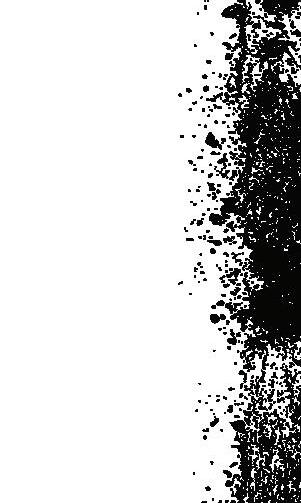
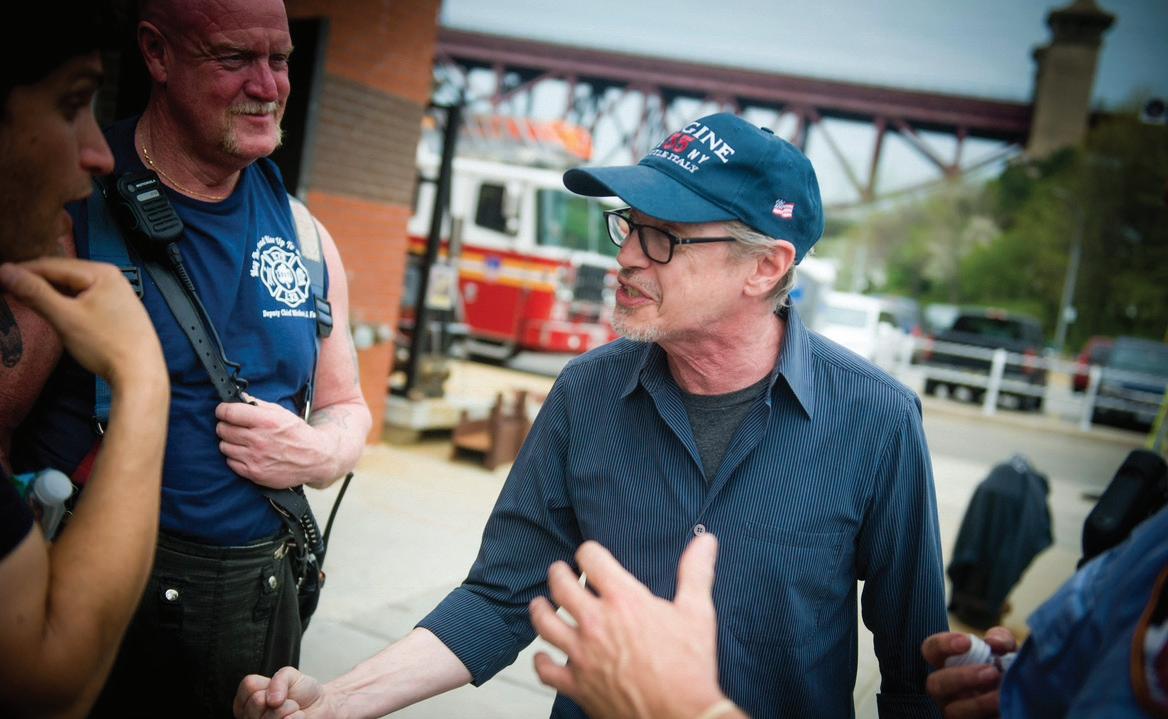

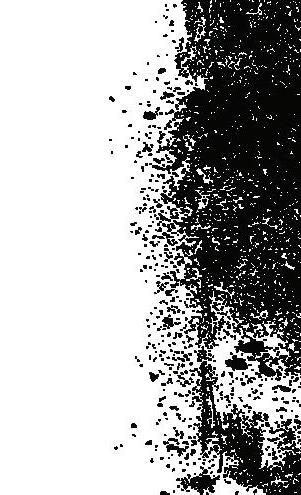

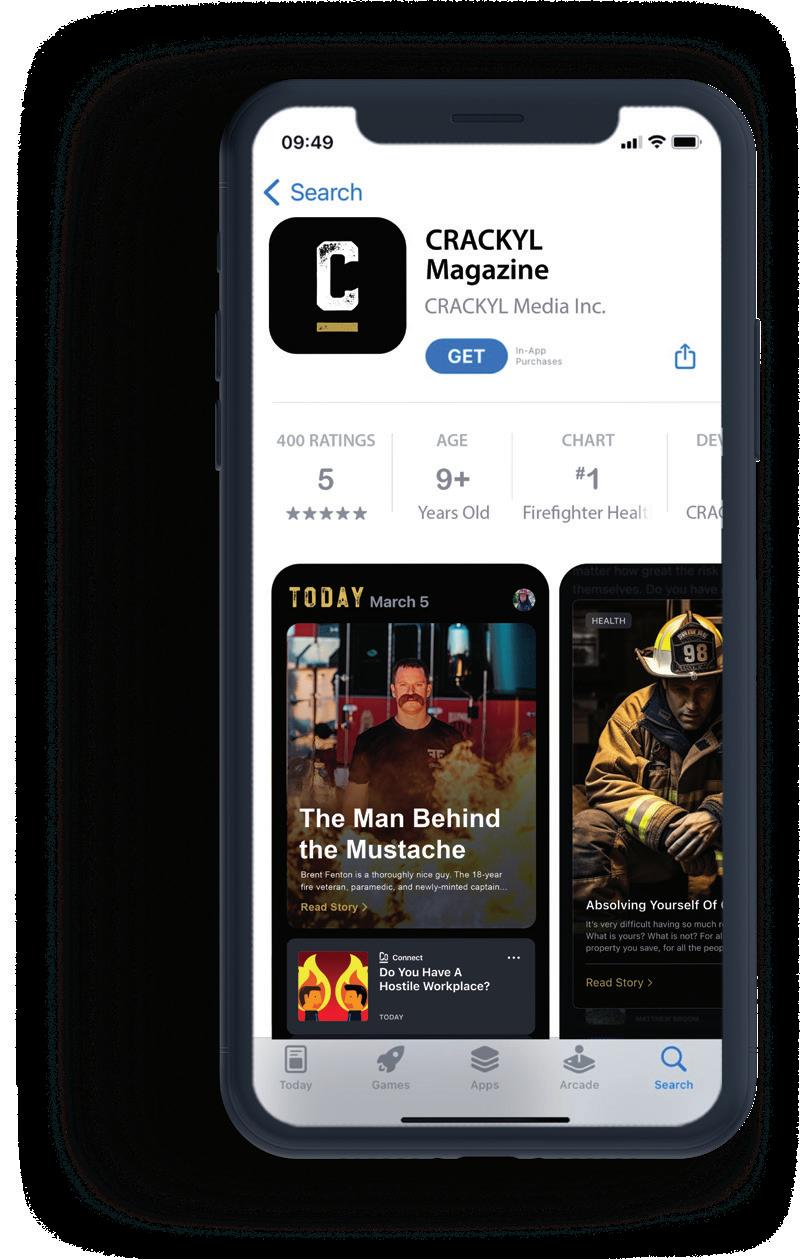


And, again, there’s more to Leary than Rescue Me. He’s a high achiever, constantly taking on big projects, and all the associated stress that comes with them. His wife, Ann Leary, is a best-selling author with four novels, a memoir and numerous contributions to big-name publications under her belt. They are kind of a power couple.
One of Ann Leary’s contributions was an essay for the New York Times , where she talked about their marital problems. That was so well received that it was turned into an episode of Modern Love , which laid bare their difficulties keeping their marriage intact, balancing careers and raising two kids. It was there that we learned about “Denis tennis”, the term his family coined because he made up whatever rules he wanted while playing tennis with them.
Spoiler alert: the Leary marriage survived, but not without a lot of hard work. Sound familiar? One sign of a strong relationship is when asked about their partner, the other grabs the opportunity to talk them up, to brag about them.
CRACKYL: Your wife did a remarkable essay for the New York Times that then became a Modern Love episode. How did it feel to have all of that exposed in such a way? This is a very personal, yet public issue.
LEARY: I was really proud of the piece that she wrote. She's a great writer. Her last book, TheFoundling , which was just, I mean, unbelievable, got five-star reviews across the board. It's an amazing piece of historical fiction. She's got a book of comic essays that's coming out this year that's just hilarious.
So I was very proud of the essay itself because it was a beautiful piece of writing. And we had survived that problem area in our marriage through therapy and a lot of work. We both looked at it the same way, which is an example of what could be right if you're open to talking about the issues.

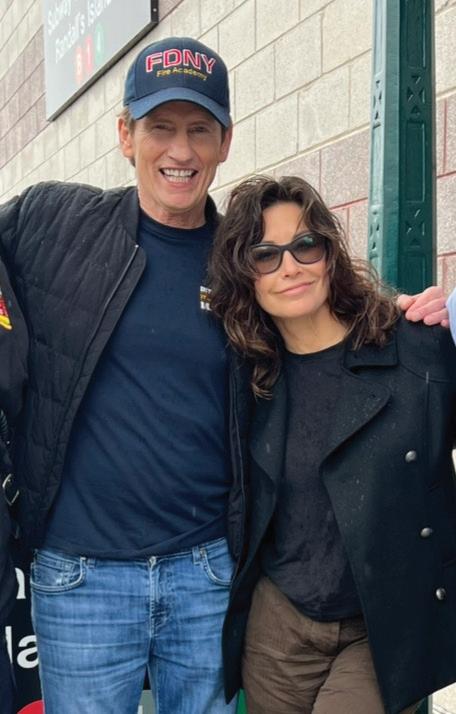


Leary sits in an interesting place in the scope of the fire service. He clearly understands it on a personal, visceral level. He experienced line-of-duty deaths in Worcester more closely than anyone should ever have to. And he experienced 9/11 and the other traumas of firefighting vicariously. Yet, as he says, he’s only fought fake fires. It gives him a perspective that many of us don’t have.
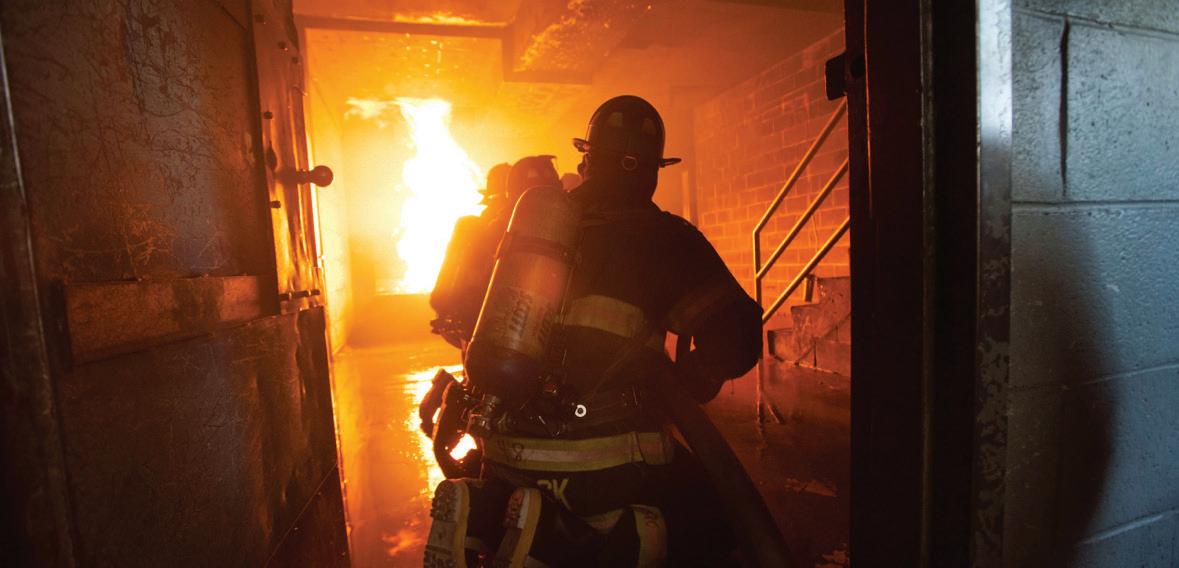
CRACKYL: In what direction does the fire service need to go collectively to make life better for firefighters?
LEARY: My good friend, Michael J. Fox, who started his Parkinson's Foundation, had a great line: “I'm starting this organization with the hope of going out of business one day because we find a cure.” About my own foundation, which is – my God, it's been over 20 years now – I used to say jokingly I love the work we do but I hope one day we don't have the foundation anymore. I hope one day city, state and federal governments step in and start to fund the people doing this noble profession in a way that means we no longer have to worry about taking care of them.
The other thing which has been a part of my foundation is to see what we can do for mental health. The profession needs to have mental health support. I mean, it goes without saying, especially in this day and age, that this should be something they don't even have to worry about, that's available to them. Something like their physical training in order to make the job right.
CRACKYL: We’ll pay for physical exercise programs and equipment but not for mental wellness programs.
LEARY: It's unbelievable. What's the physical requirement to do the job? Your brain is part of your body. So how are we not thinking about that in terms of your ability to do the job at the highest level of heroics and safety?
CRACKYL: Let's assume the problem doesn't go away. Where's the Leary Firefighters Foundationfive, 10, 15, 20 years out?
LEARY: It’s a given that we are heading in the right direction. And we’re going to keep spending money on it. My dream is that five or 10 years from now, mental health will become part of the government funding. We just have to keep spreading the word.
CRACKYL: So the Leary Firefighters Foundation is going to keep charging forward, no matter what?
LEARY: Yes, absolutely, absolutely, yeah.

The Leary Firefighters Foundation was established in 2000 by actor Denis Leary in response to a tragic fire in Worcester, Mass., that claimed the lives of his cousin, a childhood friend, and four other brave firefighters. The Foundation supports fire departments with grants that reinforce firefighter safety by providing funding and equipment. To date, the Foundation has given more than $3.5 million dollars to fire departments across the country, helping to maintain the highest level of public safety in our communities.
LEARY: Prior to his passing, Jerry was concerned about the lack of funding for training facilities in Worcester. He used his own money for firefighting courses. That’s not unusual. There are firefighters all over the country doing the same: funding their own training, outfitting themselves, or buying equipment the city or town are unable to purchase. LFF’s mission is to fill these gaps. Where public funding ends, the support of LFF begins.
Note: This interview has been edited for length and clarity.

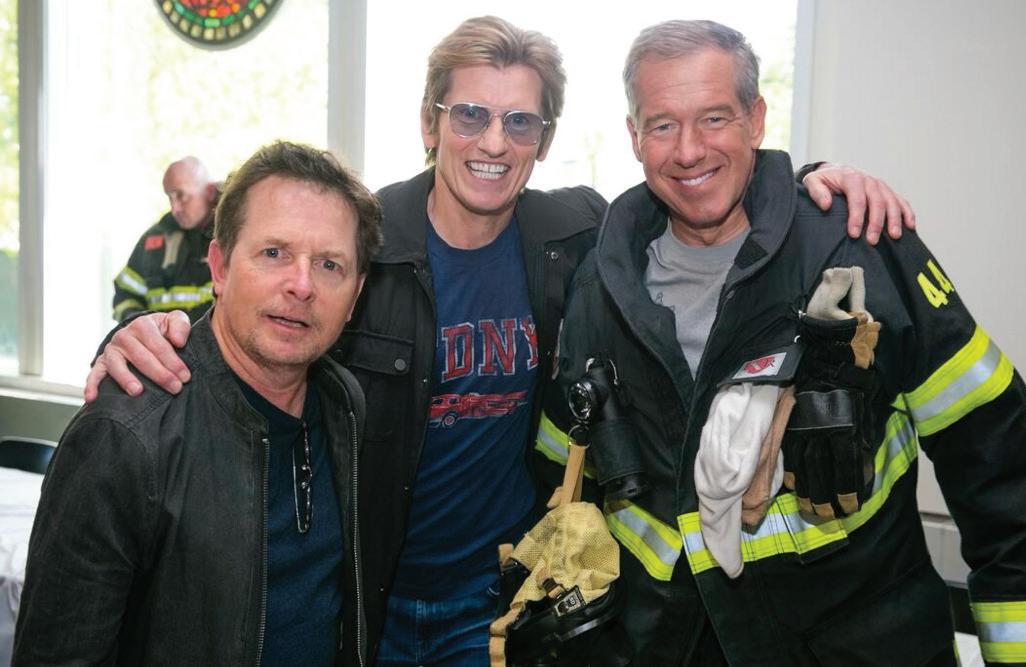
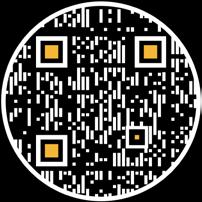








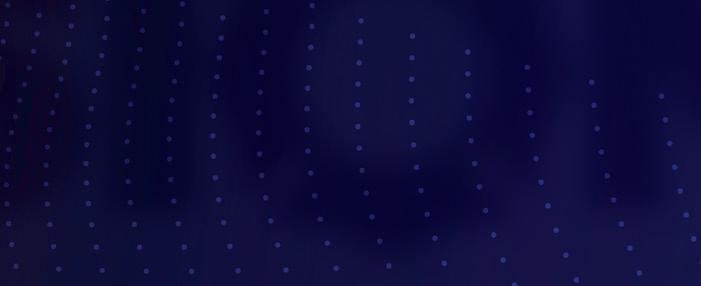



Firehouse magazine introduces FireFusion — an all-new concept dedicated to advancing the development and application of technology in the fire service. Showcasing the charm of family-friendly Charleston, FireFusion blends important topics in leadership, operations and technology with a curated experience focused on the details. Learn more and sign up for event notifications at www.firefusionconference.com. Presented by: NOVEMBER 5-7, 2024 THE GAILLARD CENTER, CHARLESTON, SC
SPONSORSHIP OPPORTUNITIES AVAILABLE
Contact: Bill MacRae | VP/Group Publisher | bill@firehouse.com






Join the FRCE in partnership with Fire Rescue and EMS Health Research Center, in raising awareness and enhancing healthcare for women in firefighting.
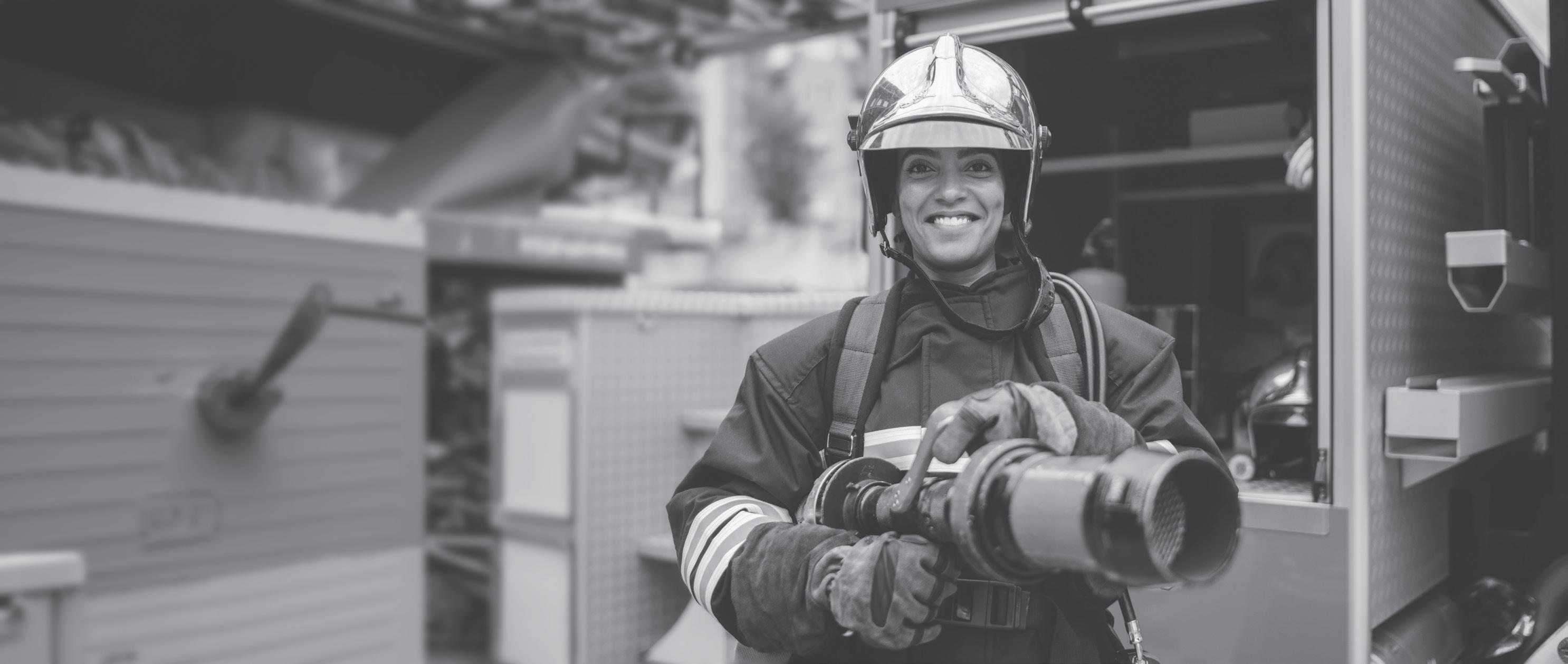



Scan the QR code to access the guide and be at the forefront of empowering pregnant firefighters with the care they deserve.
ENGAGING IN SUFFERING IS UP TO US, AND THE VERY THING THAT THREATENS US MOST MIGHT JUST BE THE DOORWAY TO ESCAPING IT.
HUMANS ARE AVERSE TO PAIN.
Touch a hot stove and you’ll learn to pay attention to whether the burner is on or not. Bitten by a dog? You’ll become more cautious around dogs. Forget a birthday or anniversary? You'll make this fatal relationship error only once. All of these situations create suffering – for the first two, the pain will be physical, and for the last, emotional.
I choose the word suffering carefully because it’s the best way to describe many of the emotional situations we find ourselves in.
Worry and concern, while moderate in terms of suffering, are still uncomfortable and, I’d wager, are feelings we’d wish would go away. Add any more pressure – for example, actual anxiety – and the need grows tenfold.
Some research shows that when we approach problems with an avoidant style, we’re at a significantly greater risk of developing mental health disorders down the road. This is true for everyone. But, firefighters who have this tendency are at an even greater risk, given that we’re guaranteed to experience stressful events.
THE HARDEST THING TO OVERCOME IS THE REALIZATION OF HOW EFFECTIVE AVOIDANCE IS FOR DECREASING IMMEDIATE STRESS.
We don’t often engage in a behavior that doesn’t work – at least not initially. In the beginning, avoidance is very effective. ("I may sprinkle an avoidance here and there, but no one will be any the wiser and I’ll be free of my suffering.") Over time, however, this approach stops working, the things we’ve avoided pile up and become something we can no longer ignore. Now, we feel overwhelmed by the sheer volume of things that need to be addressed, and all the while something even more sinister is at work.
IN THE BACKGROUND, WHILE WE'VE BEEN AVOIDING DIFFICULT ISSUES, OUR ANXIETY HAS BEEN GROWING.
When people have had enough and end up in my office, I have the unenviable job of pointing out the pathway forward. The surprise is that avoidance itself isn’t the problem, or at least not entirely. The problem is dealing with the side effects of using this strategy. That increase in anxiety must be engaged with to overcome it.
WE NEED TO CHOOSE OUR SUFFERING.
There are really just two options. The first is to continue doing what we've been doing – avoiding the situation and the need to address it. We can see where this will lead, so it’s not a helpful approach. It is, however, comfortable, predictable and certain. If we avoid a situation, we know we won't have to do anything differently. We can predict what will happen, and while we may frustrate or anger those around us, we'll feel better immediately – at least for a short while.
The second option is to engage that fear or worry directly. This requires a significant mind shift and isn’t a comfortable option. It isn’t predictable, and, in fact, there’s a chance of initial failure. There is no guarantee in therapy that the first approach will work (and if you’ve been told that by your therapist, I suggest you promptly leave). No crystal balls, no certainties and no instant cures exist. There are only pathways and procedures and a lot of scientific evidence to suggest that approaching the problem and navigating it without resorting to unhealthy behaviors can often lead to a more beneficial outcome – even if that outcome isn’t exactly what we’d prefer.
Engaging in suffering is up to us, and the very thing that threatens us most might just be the doorway to escaping it.
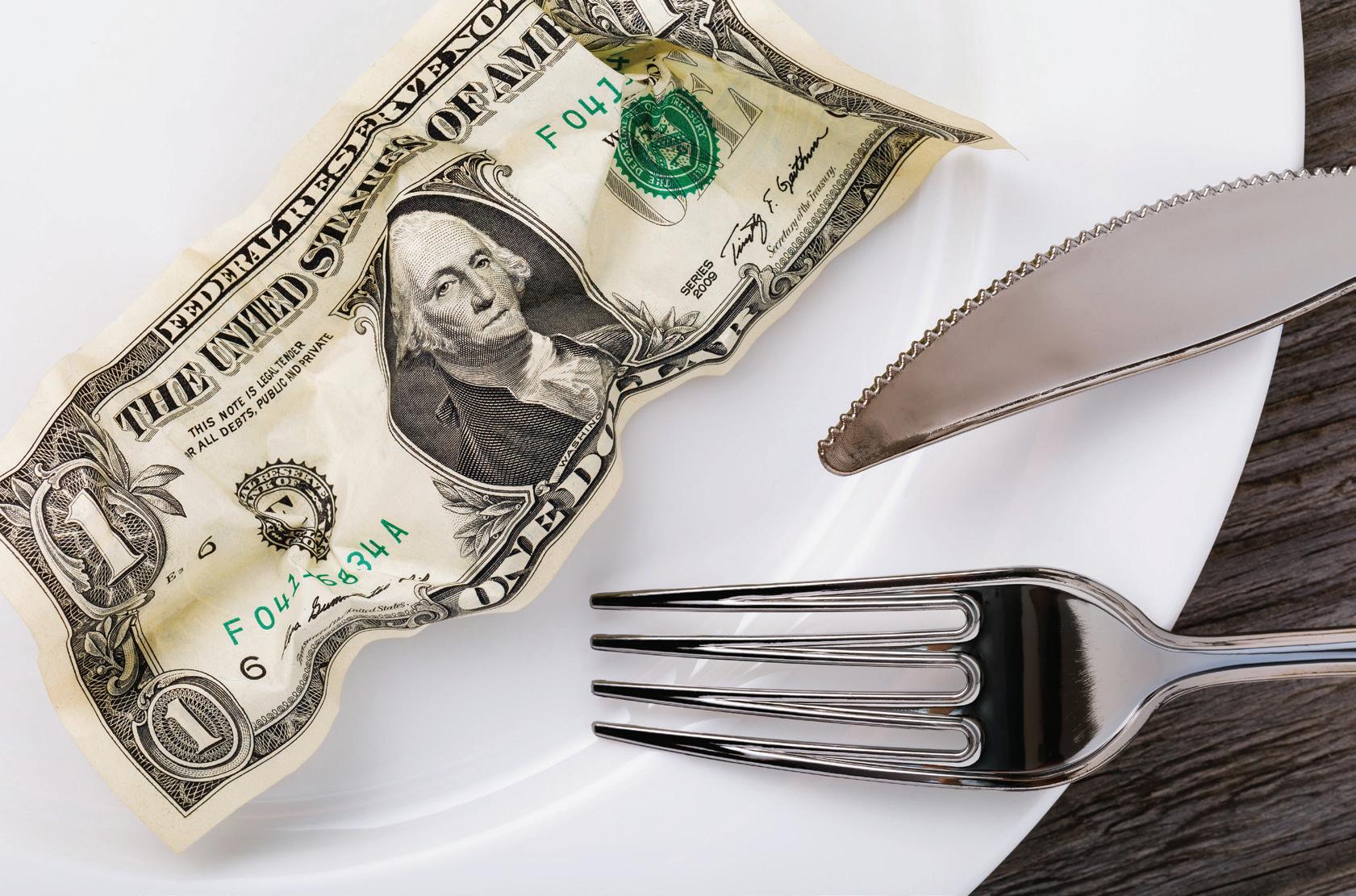
Debt is a devil — no doubts there. But are there strategies to help deal with unplanned spending, rising interest payments and that horrible sense of being in over your head? Consider the cashonly diet, a structured method to tackle and manage financial obligations using physical currency for everyday, variable expenses.
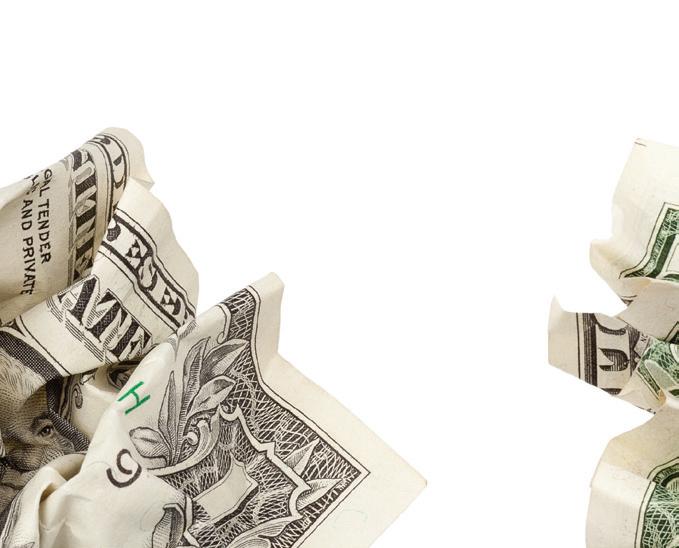
By Tony Dong, MSc
First, you’ll be working to halt the accumulation of additional debt, and second, developing a clearer understanding of your financial circumstances.
Just as unmonitored eating can lead to weight gain, unchecked spending can result in escalating debt. When you buy using a credit card, you don't get that tangible sensation of parting with money, leading to a disconnect between purchase decisions and budgetary realities.
Handing over physical currency creates a real, almost painful awareness of spending, which can instill discipline and mindfulness in our spending habits, steering us towards healthier financial behaviors.
We’re not suggesting that you should rely on cash for all transactions. Fixed recurring expenses such as rent, mortgage, utilities, phone bills, internet charges, insurance and scheduled debt payments should still be managed electronically to ensure punctuality, to avoid late fees and dings to your credit score and maintain a record.
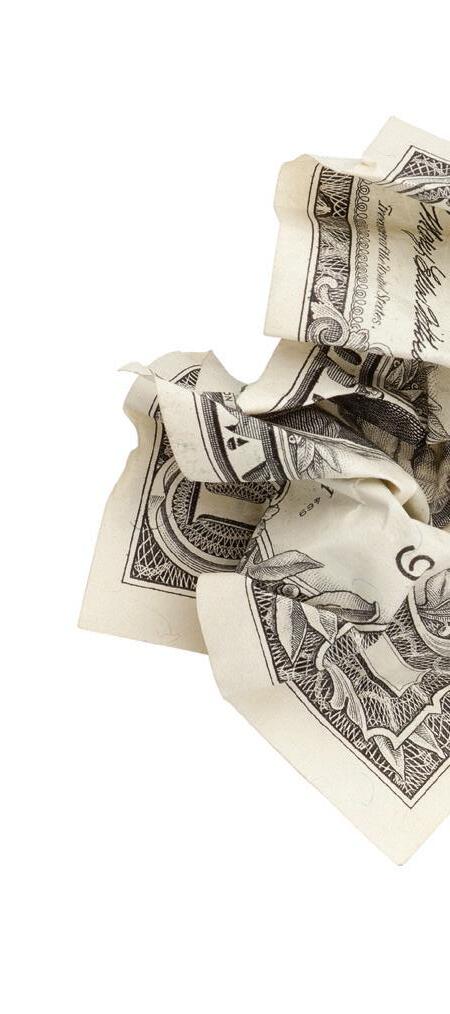
AND MORE AWARE OF YOUR SPENDING HABITS
Starting a cash-only diet requires a little preparation, but quickly becomes a straightforward way to monitor and control your finances. Understanding your financial landscape starts with a budget. For first responders, whose schedules are often not the traditional 9-5 work day, this step is especially critical.
Begin by listing all predictable and consistent monthly expenses, such as rent or mortgage, utilities, phone bills, insurance and any debt payments. Subtract these expenses from your net pay (what you take home after taxes and other deductions) and what’s left is available for everyday costs and potential savings.
For instance, if your net pay is $3,500 a month and your fixed expenses amount to $2,500, you have $1,000 left to allocate towards daily expenses and savings. With this in mind, categorize your daily and miscellaneous expenses, creating physical containers for each type. Use envelopes, jars, or any other holder you like and label each –"groceries," "entertainment," or "dining out" etc. Include categories tailored to the lifestyle of a first responder, such as uniforms, gym memberships, or even fuel for work commutes.
cash. If you have $1,000 left after accounting for fixed expenses and you calculate that you spend about $200 on groceries and $100 on work meals, put those amounts into their respective containers.
Setting firm limits for each category, will both ensure you're living within your means and show you where you could potentially save more.
The cash-only diet is all about effective cash flow management. The “dining out” container is empty by mid-month? Think creatively and cook more often at home.
The idea is to manage expenses with tangible cash, but you still need to document your spending. Keep receipts and store them in the same expense containers or create a spreadsheet to log them. It may seem like a lot of work, but that's precisely the point – if you associate spending with the headache of keeping track of the numbers, you're less tempted to spend and more aware of your spending habits.
When you succeed with the cash-only diet, you might even have some left over cash at the end of the month or pay period, giving you an opportunity to boost your financial health.
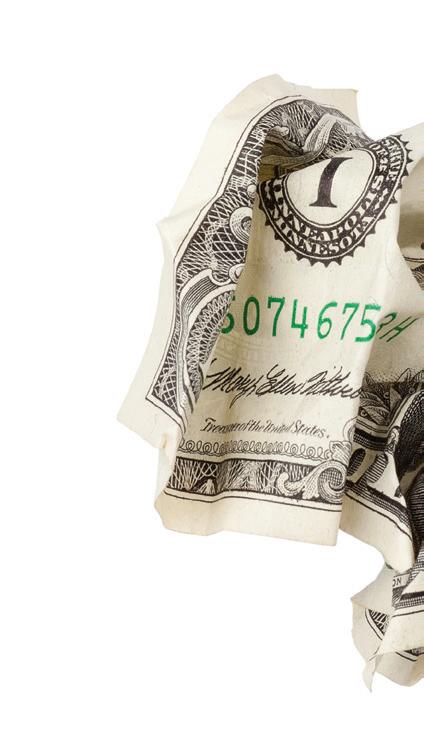
First, pay down existing debts, especially those with high interest rates (notably credit cards), which can become major stressors over time. Making additional payments will reduce the principal amount faster, lowering your final total cost of the debt.
Next, build an emergency fund. Given the unpredictable nature and occupational hazards faced by first responders (particularly important for volunteer firefighters) having a safety net is essential to cover unexpected medical expenses, vehicle repairs, or any number of unforeseen situations. Maximize the growth of this fund by placing it in the highestyield savings account your financial institution offers.
Savings Program and take advantage of similar employer-match programs. Finally, if you have a High Deductible Health Plan, contributing to a Health Savings Account can provide tax advantages and help cover future medical expenses.
There are drawbacks to the cash-only diet. Some restaurants and other businesses have now gone cash-less, so planning ahead is a must. Theft is an issue because cash, unlike credit and debit cards, isn’t covered – think carefully about how much you carry with you. Most credit cards offer user perks, including points and miles that you’ll miss, and going cash-only won’t help your credit score. That’s determined, month over month, based on how responsibly you pay off your card balances.
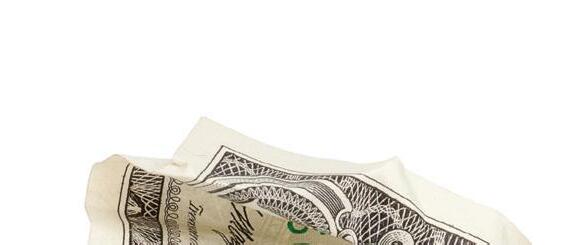
Now, distribute your remaining income – in
You can review your cash flow and spending and gain insights into whether highstress days correlate with specific spending habits. Does a grueling shift create an uptick in comfort food purchases? Recognizing patterns can help you make healthier financial (and dietary) decisions.

Invest in your future by contributing the annual maximum to a secure, tax-sheltered investment vehicle. If your employer offers a 401(k) with a matching contribution, take advantage of this free money. Contributing enough to get the full match effectively gives you an immediate return on your investment. Canadian readers might choose a Registered Retirement
Flexibility is key. A onemonth cash-only trial will give you a snapshot of your spending habits so you can see where you spent more than anticipated and where you saved. Then continue, modify or even relax certain aspects of the plan. Even if you find that a strict cashonly approach isn't entirely sustainable, you’ll have shed light on spending habits you weren't aware of. The goal isn't just to mindlessly save money, but to cultivate a healthier relationship with it, creating a more balanced and stress-free life.
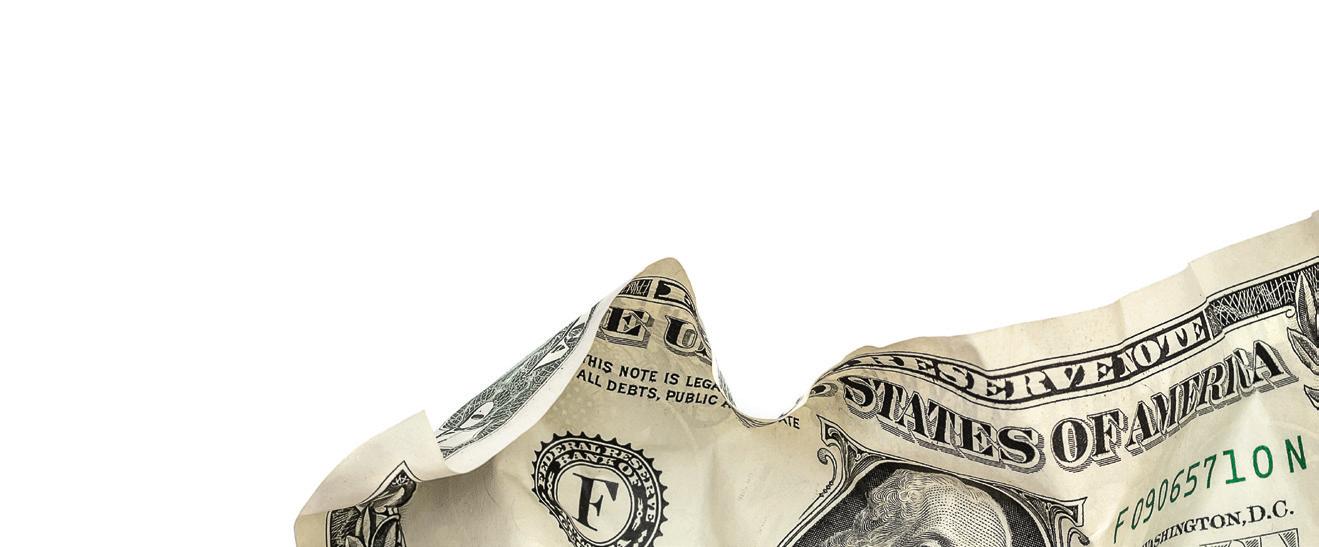




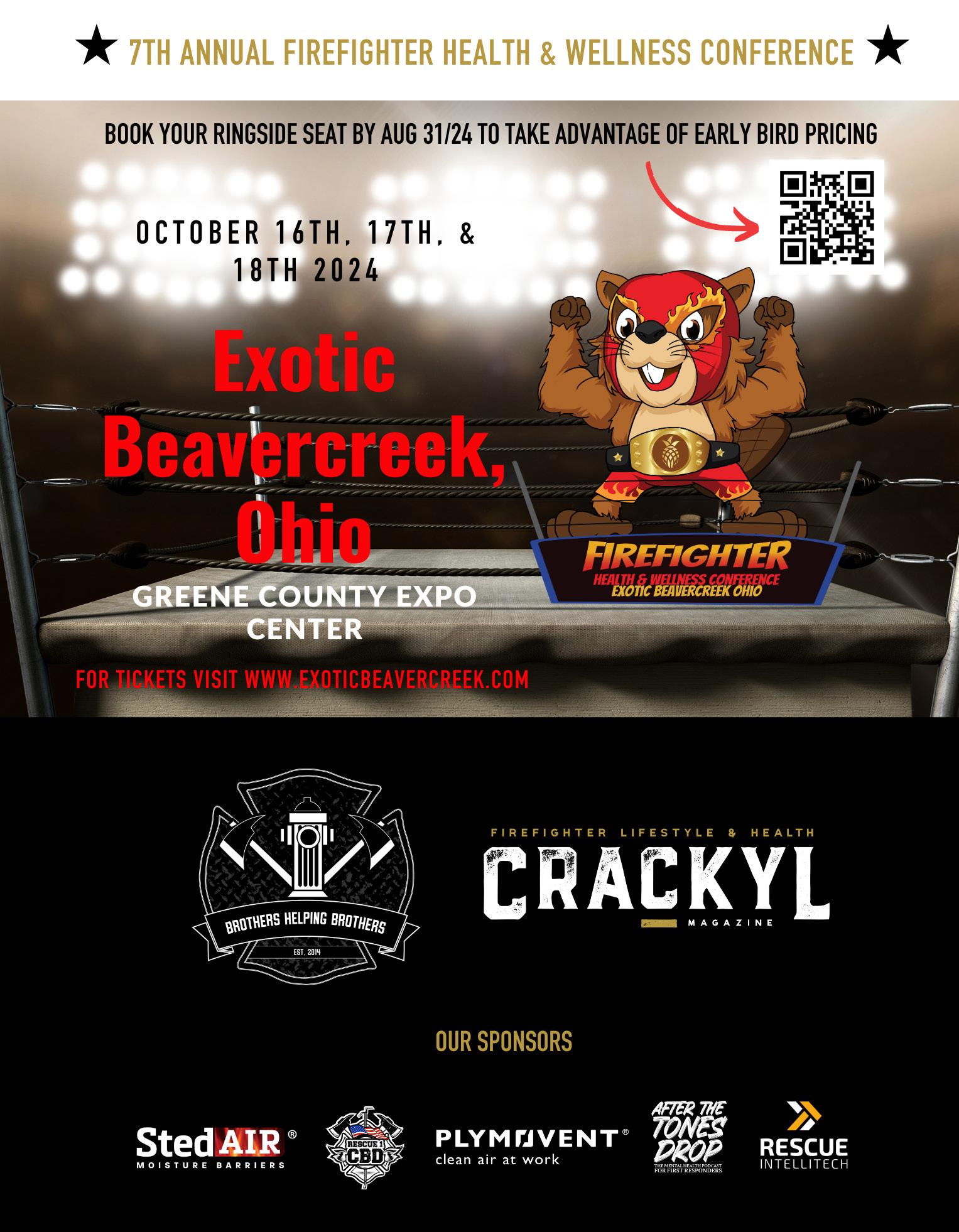
Thinking of adding hot or cold therapies to your daily routine?
Here's a rundown of some of the more interesting products on the market.
– PALM COOLING DEVICES
Narwhals are a powerful palm cooling device for mitigating heat stress during incident rehab and improving strength training performance. Designed to harness thermodynamics to supercharge the body’s natural heat offloading capacity and accelerate recovery, Narwhals are portable, simple to use, effective, and long-lasting.
PRICE: USD $495
By Apex Cool Labs | apexcoollabs.com
Constructed of militarygrade drop stitch material, the NüBreath Single Cold Plunge Tub is built to last and withstand the elements, making it the perfect addition to your backyard or home gym. With its compact size and inflatable design, it can be installed anywhere and is perfect for on-the-go sessions.
PRICE: USD $998.05
By Nubreath | nubreath.ca
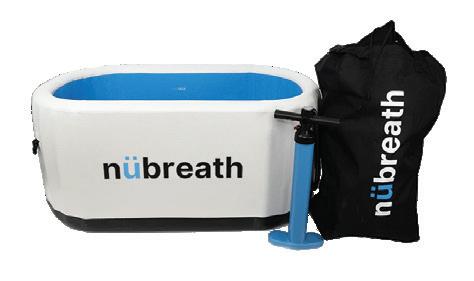


The Georgian Cabin Sauna, part of the Canadian Timber Collection, is handcrafted by Leisurecraft from eastern white cedar that is lighter in color and has tight knots in the wood. The cabin shape fits in well with all cottages and homes and comes in kit form. The metal shingle roof ensures that your sauna is dry and ready to enjoy.
PRICE: CAD $8,750
By Retreat Ready | retreatready.ca

DELUXE WOOD FIRED HOT TUB WITH LINER XL
Backcountry Recreation makes Canadian red cedar wood-burning hot tubs. They use only clear Canadian western red cedar, meaning their tubs will last longer and look better. Enjoy a classic cedar hot tub today, the simplest expression of organic minimalism.
PRICE: USD $6,797
By Backcountry Recreation | backcountryrecreation.com
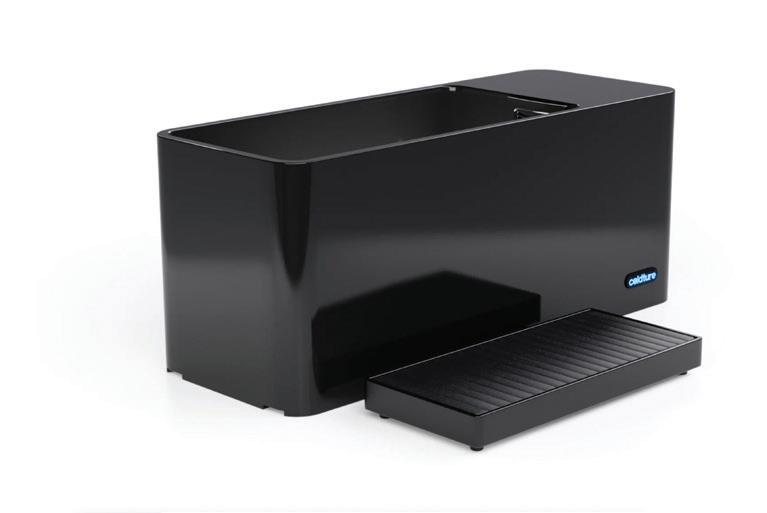
A convenient all-in-one solution that enhances your health, fits your busy routine, and looks beautiful in your home, the new Pro Plunge from Coldture offers an all-in-one solution for those who prioritize optimal health and want a sleek aesthetic with design options to match your taste.
PRICE: CAD $11,499
By Coldture | coldture.com/products/pro-plunge
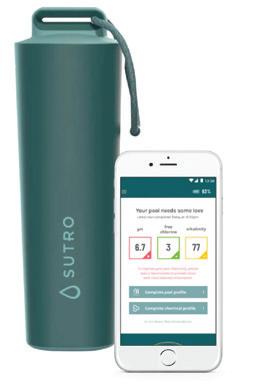
The Sutro Pool Monitor is a smart device that helps manage your pool or spa. Simple, safe, and seamless, the system allows you to measure, monitor, and get treatment and chemical recommendations to keep your water safe.
PRICE: USD $685
By Sutro | mysutro.com/products/
sutrosystem
The Viking offers a sleek and modern 95-gallon vertical cold plunge designed for both aesthetics and practicality. It features a powerful ¾ hp chiller for personal or commercial use. Foam wall construction, keeps the water cold, while in-line filtration and an ozone sanitization system maintain water quality. It's the ideal energy-efficient addition to any home or business for deep immersion and relaxation.
PRICE: USD $8,227
By Nordicwave | thenordicwave.com
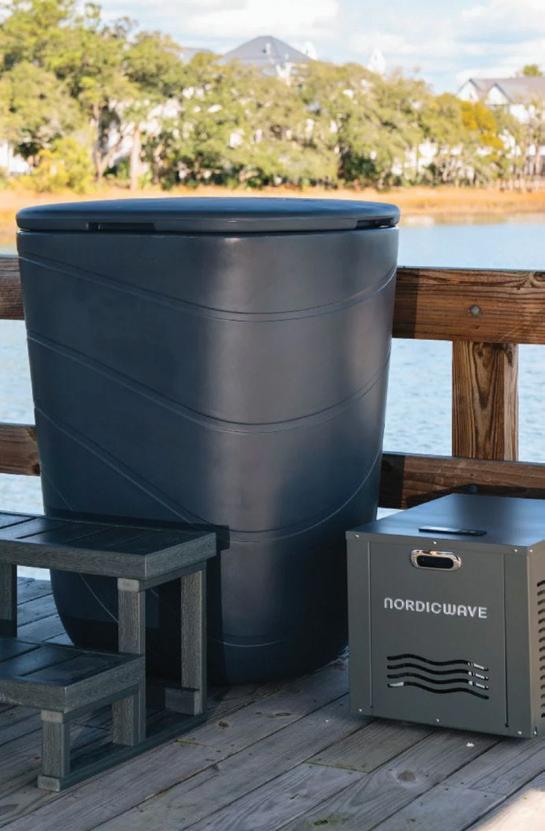
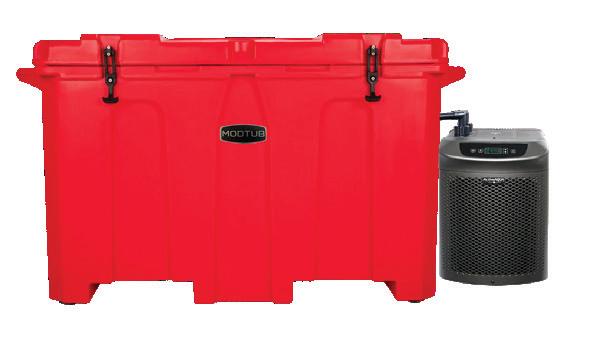
ModPlunge offers cold water therapy in your home, using the same components as brands that cost twice as much. Featuring powerful insulation, ModPlunge is made tough to handle your active lifestyle. Are you ready to embrace the cold?
PRICE: USD $3,000 By Modtub | modtub.com

Beachcomber builds high-quality products made to last. Striking the perfect balance of comfort and hydrotherapy, the compact yet spacious 510 LEEP provides two wide-bodied loungers with massage jets that target the lumbar system. This elegant hot tub just might invite a more intimate connection with your loved one.
PRICE: CAD $9,799 By Beachcomber beachcomberhottubs.com
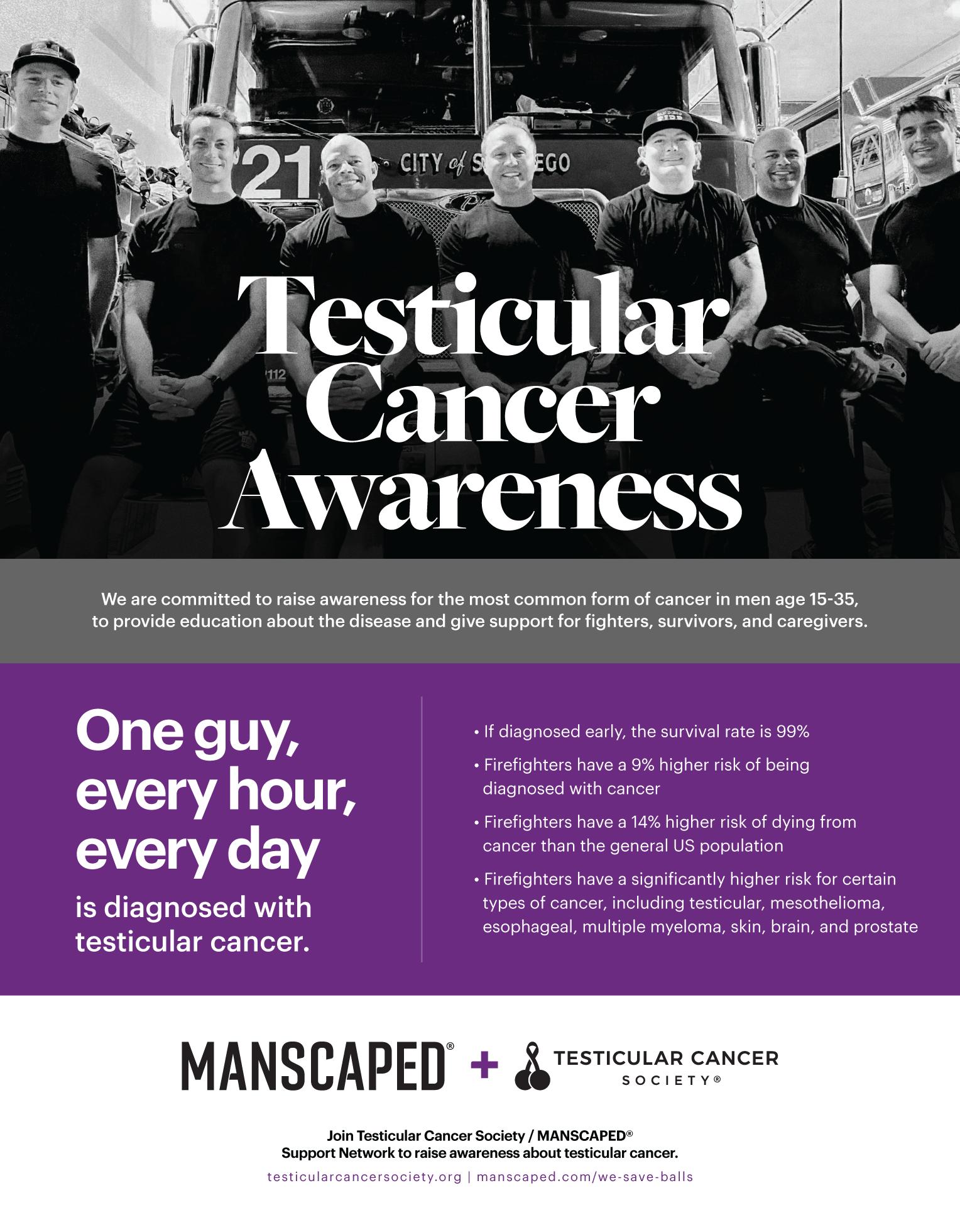

First responders enjoy 20% off sitewide, year round
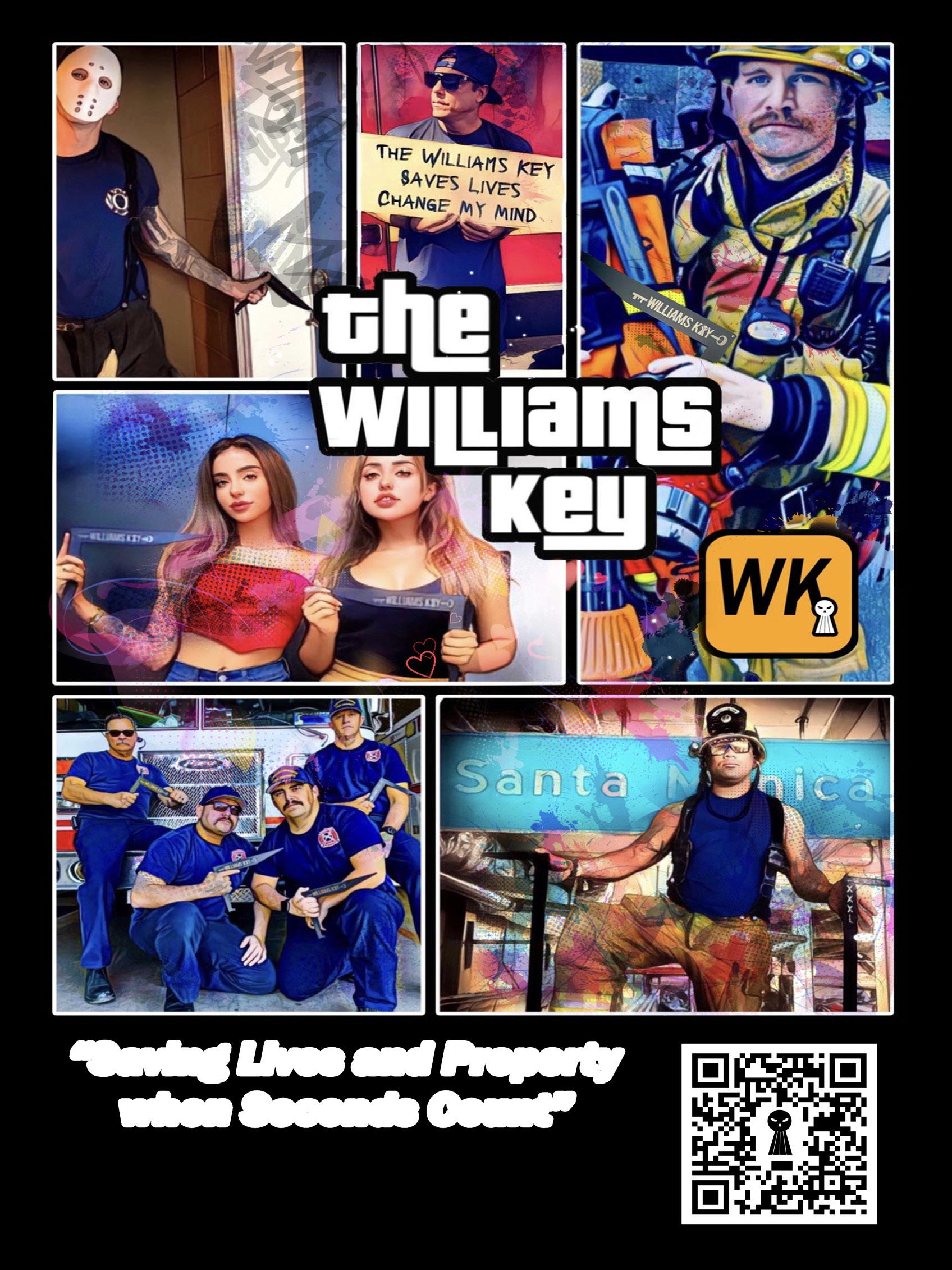

Grounding, or "earthing", isn’t a new concept – but it might be for first responders.
Your body relies on conduction. Think about that each time you touch something – whether the sensation is pleasurable or painful. Your body’s nervous system is working hard to transmit those signals from the source (for example, your hand) to your brain and back again for a motor response. Without your nervous system – aside from being dead – you wouldn’t enjoy anything.
If we take this one step further, electrical conductivity from the earth might actually have positive benefits on your body.
Examples of grounding can include walking barefoot, lying on the ground, or submerging yourself in water. Maybe you use equipment to aid in the grounding process, employing things such as mats and socks.
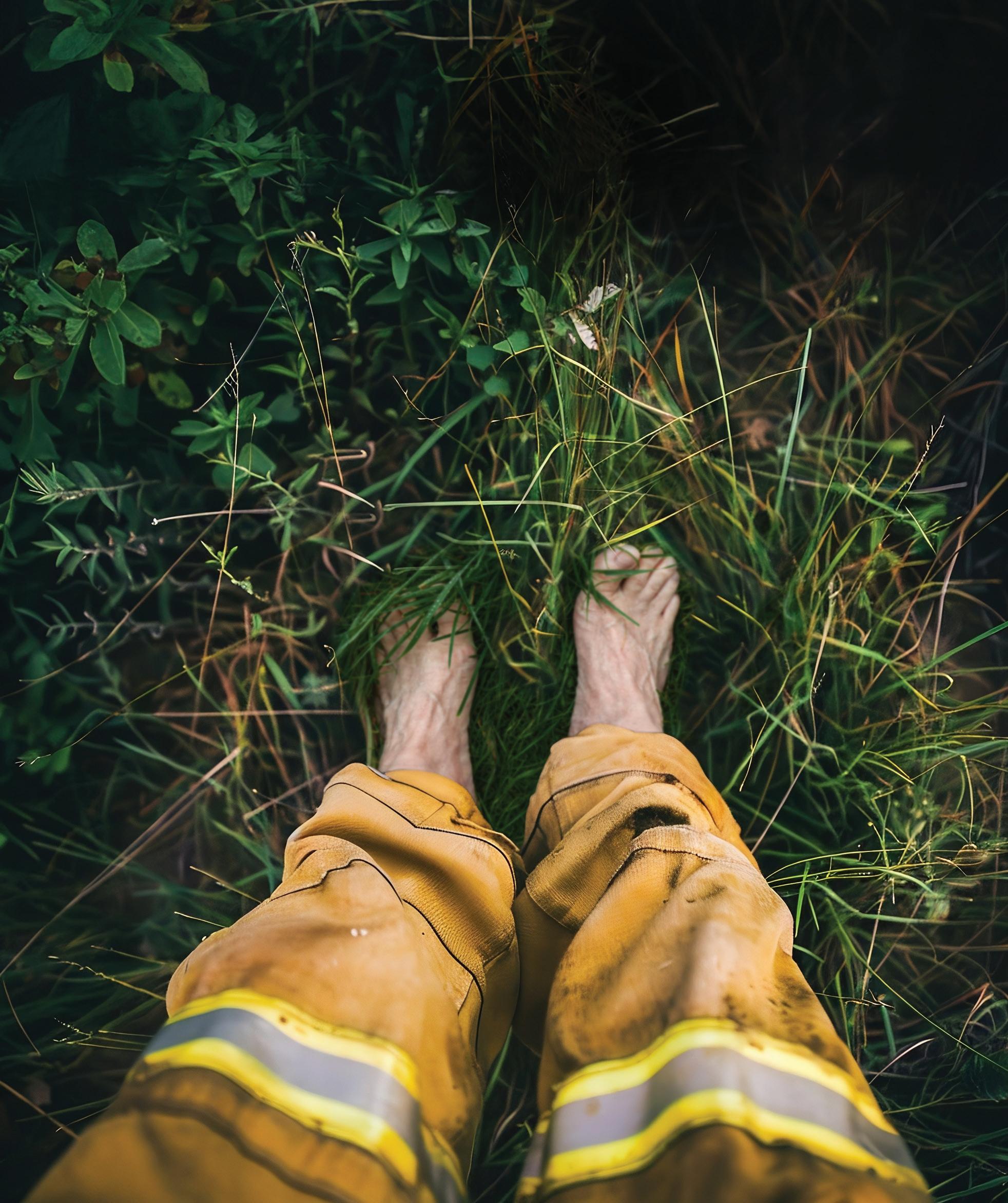
You’re probably one of many who enjoy squeezing your toes into wet sand as the waves lap up over your feet. Maybe you enjoy the feeling of the ground beneath your bare feet or in your hands when you are out adventuring in a local forest.
Without getting too hokey - there are some pretty cool reasons for enjoying these sensations.
While not backed by scientific evidence, some say grounding decreases chronic fatigue and pain, improves mood and sleep, and may lower blood pressure. (Be sure to take a look at our article, “Nature as Medicine”, CRACKYL Summer 2021.)
Find some free time, take off your shoes in a quiet outdoor area, sit or lie down and allow nature to envelope you for as long as you let it. Listen to the sounds around you, practice meditation or box breathing, and reap the benefits of the underground electrical charges.
As experts James L. Oschman, Gaétan Chevalier and Richard Brown explain, “that electrically conductive contact of the human body with the surface of the Earth (grounding or earthing) produces intriguing effects on physiology and health.”
Fun Fact: Did you know that there is a huge underground matrix uSed by plants?
Botanical experts say that a mycorrhizal network is an underground network found in forests and other plant communities created by the hyphae of mycorrhizal fungi joining with plant roots. This network connects individual plants together. A morphological or
physiological change in a plant due to a signal or cue from its environment constitutes behavior in plants, and plants connected by a mycorrhizal network have the ability to alter their behavior based on the signals or cues they receive from other plants. These
signals or cues can be biochemical, electrical, or can involve nutrient transfer. Plants release chemicals both above and below the ground to communicate with their neighbors to reduce damage to their environment.”
By Dr. Brooke Bartlett, Ph.D., Licenced clinical psychologist
I’m a trauma specialist who’s spent 10 years and thousands of hours in the research lab, in the therapy room, and out in the field specializing in working with first responders. And although I’m constantly learning new things, one fact stays the same: trauma has common themes, particularly for firefighters.
A career in firefighting is jam-packed with “big T” trauma exposure. “Big T” traumas are events that involve being directly or indirectly exposed to actual or threatened death, serious injury, or sexual violence. For example, responding to an active structure fire, witnessing the victim of a drunk driving accident die on scene, having a crew member die by suicide, or repeatedly hearing about the details of a brutal child molestation case. If left unaddressed, chronic exposure to “big T” trauma can have a significant impact on a firefighter’s physical and mental health and may lead to post-traumatic stress injury.
“Small T” trauma is also common in the life of a firefighter, but it often flies under the radar because it’s perceived as being less significant in comparison to “big T” trauma. “Small T” traumas are highly distressing events that affect people on a personal level, but that do not involve any risk to one’s life or body. Examples of some of the most common “small T” traumas that I encounter with firefighters involve conflict with partners at home, relationship loss (such as divorce), infidelity, and organizational stressors/betrayal (like missing the birth of a child because of mandatory overtime).
IN MY WORK WITH FIREFIGHTERS, I FIND THAT IT’S OFTEN A “SMALL T” TRAUMA THAT IS THE STRAW THAT BREAKS THE CAMEL’S BACK AND SENDS A FIREFIGHTER SPIRALING.
That’s because “small T” traumas exceed our capacity to cope and cause a significant disruption in our overall functioning. I’ve heard more times than I can count from my firefighters that it’s not the “big T” traumas they witness on the job that they struggle the most with, but the “small T” ones at the organizational level and at home that they feel incapable of managing.
It’s imperative that firefighters learn and use skills that support their ability to manage stressors both on and off the job, including communication, emotion regulation and problem solving.
Moreover, it’s important for public safety agencies to take a holistic approach to wellness programming by building programs that incorporate a variety of evidencebased resources to promote optimal physical and mental wellness for their personnel both on and off the job. The focus of firefighter wellness should not end when a firefighter finishes their shift: better quality of life off the job is directly tied to improved morale, satisfaction and job performance.
COMPARISON
All too often in the privacy of a therapy session, my firefighters, full of guilt and shame, express something like, “Everyone else in my crew was on that call and they all seem to be doing fine. Why am I the only one messed up by it?” Typically, they’ve already decided the only explanation
is that they’re weak, crazy, a failure — or all of the above.
The expectation that everyone experiences trauma in the exact same way is unrealistic. That’s because trauma is not merely defined by the event itself, but also by how we react to and process the event.
So, what factors determine how we react to and process trauma? I call these pre-disposing and postdisposing factors. Pre-disposing factors are those that precede the trauma, such as our experiences, values, culture and any type of personal connection we might have had at the time of the event (such as the victim looked like my wife or was around the same age as one of my kids). Post-disposing factors are those that occur after the trauma, such as the type of coping mechanisms I use to deal with the stress, my support system and my willingness to talk to others. Both are equally influential in determining how trauma will affect us at any given time. Needless to say, no two people have exactly the same pre- and post-disposing factors, so no two people on this earth experience trauma in the same way.
There’s another type of traumarelated sentiment I hear repeatedly from my firefighters: “I’ve been doing this job for 15 years without any major issues. Why is it starting to affect me now?” Or, “I’ve responded to 100 calls just like this one, why did this one mess me up?” Similar to the comparison, this question looms with the theme of perceived weakness and failure.
Not only do we each experience trauma differently, but we also
experience it differently every time. We can’t compare our reaction to trauma today to the way we reacted to trauma a month, a year, or five years ago.
This is because our pre- and post-disposing factors are always changing. For example, are you the same person as you were five years ago? Did your outlook change after you had kids? Has your mindset and approach evolved in any way from when you were a recruit in the fire academy to now? Have you accumulated new experiences and been exposed to new trauma, both on and off the job?
Changes in pre- and post-disposing factors aren’t only evident in the long term. For example, how we experience trauma when we are sleep-deprived will be different than when we are well rested. Exposure to trauma doesn’t occur in a vacuum; rather, trauma is comprehensive and our reaction to it is dependent on a variety of constantly evolving factors.
Broadly speaking, I’ve observed that many firefighters experience the same struggles related to trauma and yet they suffer in silence. This perpetuates the false belief that they are alone in their experience and are therefore defective in some way.
If you identify with any of the sentiments, know that you are far from being alone. My hope in writing this is to normalize these experiences and shed light on how common they are. The more these struggles are normalized, the less stigma there will be about experiencing them, and the more likely firefighters will be to seek support and help.
Don’t worry – you are more normal than you think.
Do a quick self-assessment.
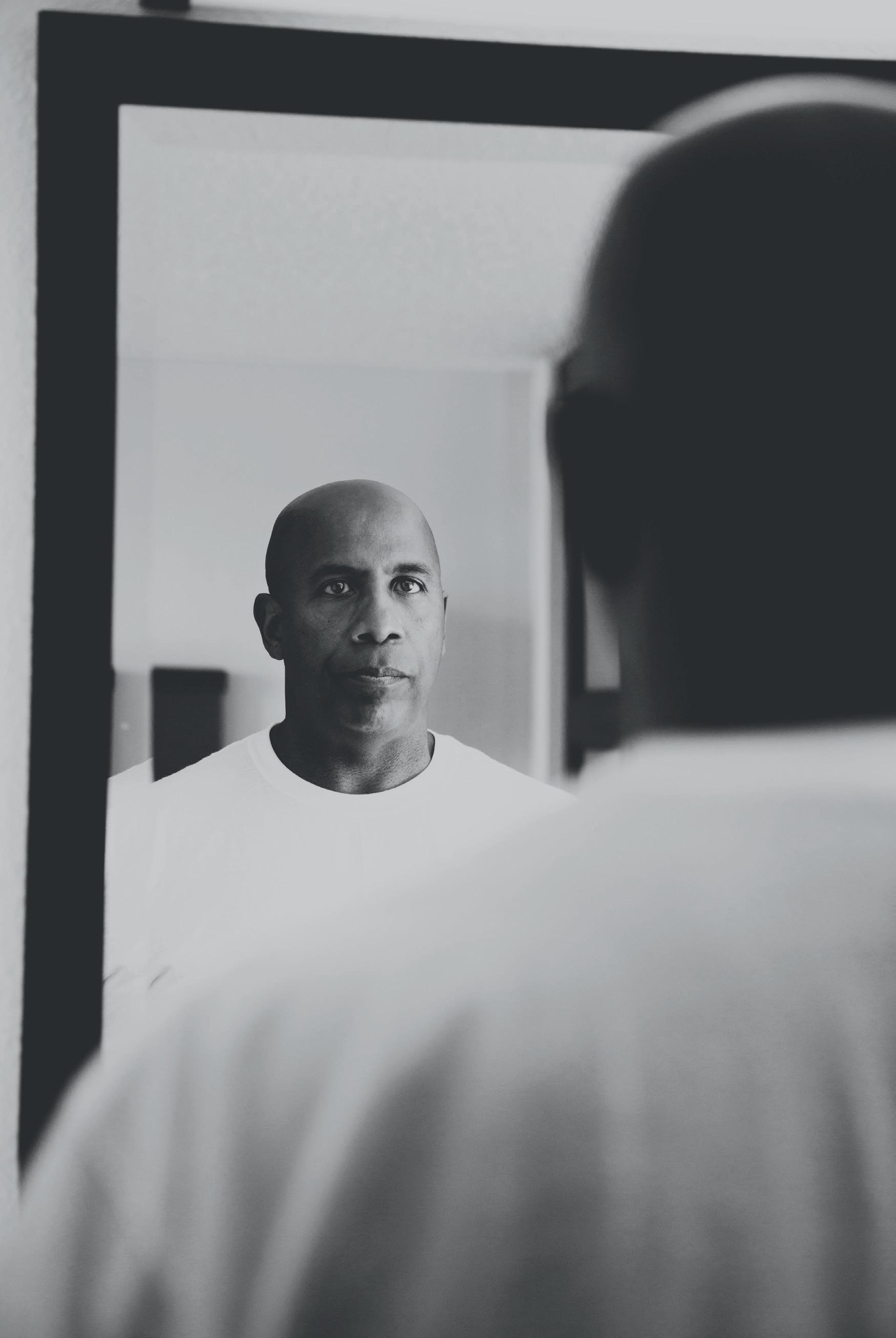
Ask yourself these questions:
Do I drink frequently, or binge drink?
Do I find myself drinking alone, or hiding it from others?
Has a friend or loved one expressed concerns or questions about my drinking?
Have I found it difficult to stop?
Firefighters experience symptoms of depression, anxiety and sleep issues at a higher rate than the general population.* Alcohol increases these symptoms and creates additional risk for other serious health conditions.
Understand and address the mental and physical effects of the job, with strategies and resources that can improve your overall health.
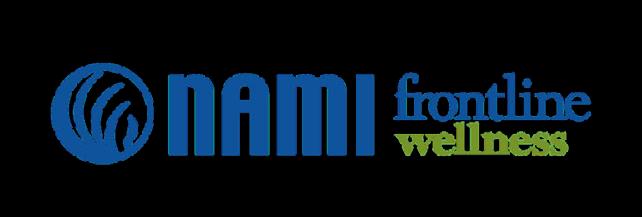

Wendell’s Mint is proud to manufacture high quality American Made challenge coins for the Fire Service community. We are honored to be your partner
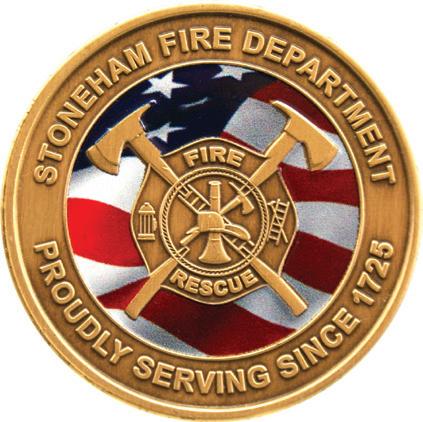
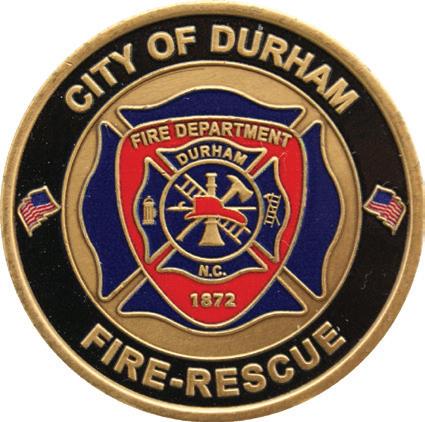
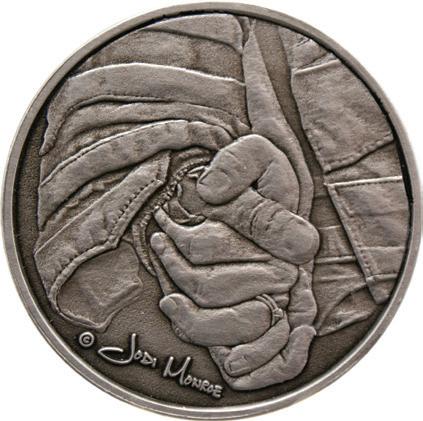
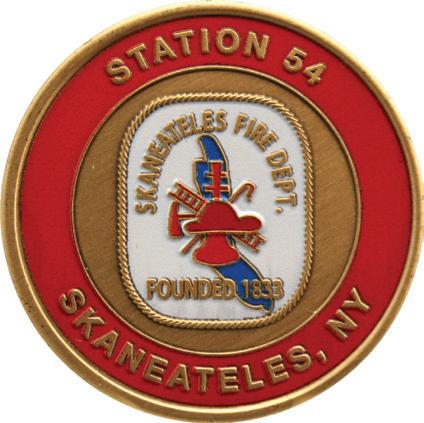
Ask yourself...
Does the company charge for artwork?
Does the company charge a premium for multiple painted colors?
Does the company charge a premium for dies based on design complexity?
Does your artwork ever leave the company’s building?
Does the company create the custom design and mint the products in house, or do they outsource to a 3rd party supplier?
Does the company mint the product in the USA, using US workers and US materials?
Does the company competitively price its coins and dies against foreign imported product?
Does the company engrave coining dies in house using CNC technology?
Has the company been in business long enough to count on?
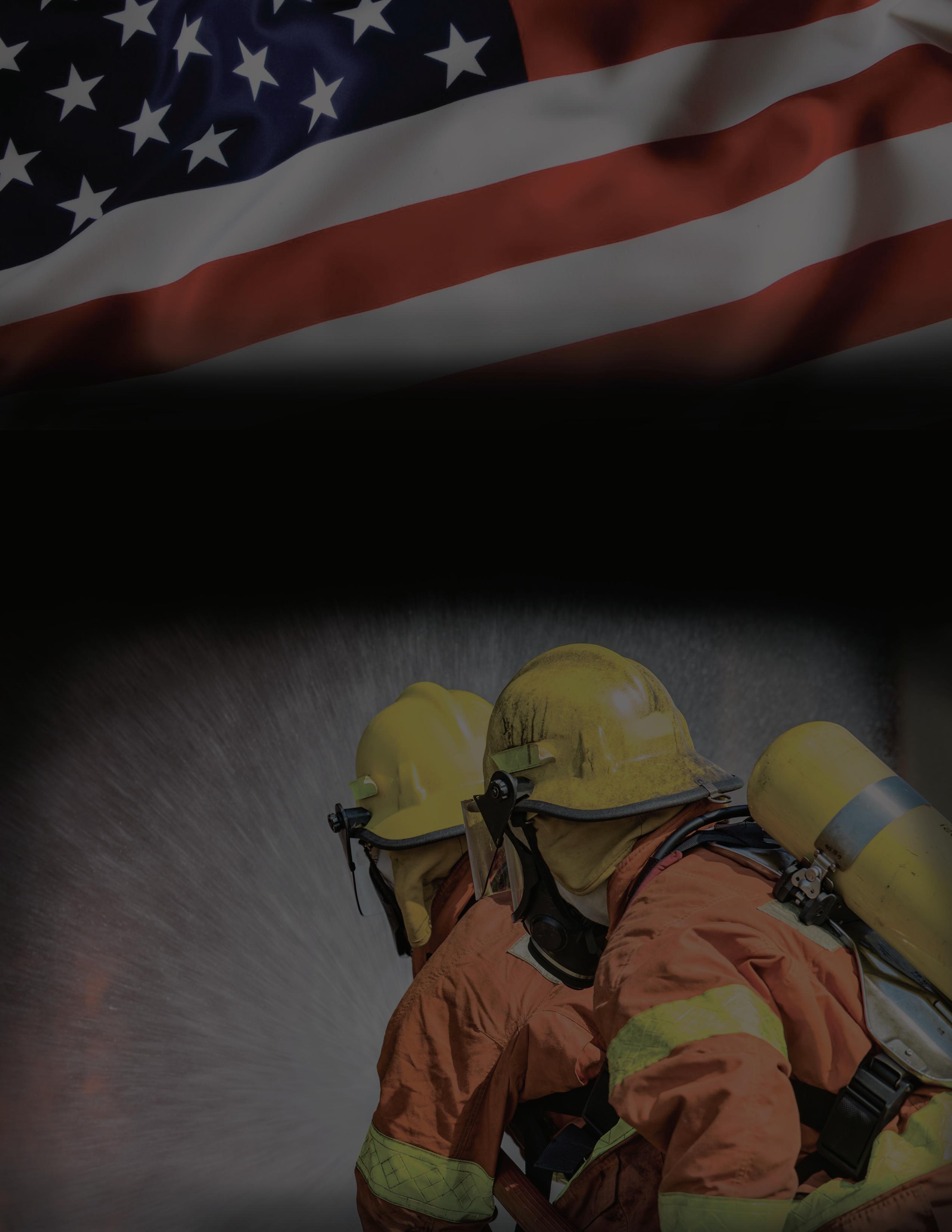
Competitor
By Hussien Jabai, MS, CSCS, TSAC-F, CPT, and Dr. Dean Culpepper
Driving lights and sirens during rush hour can create sensory overload — especially for new drivers. The same is true with being first-due on a dynamic fire, MCI or rescue scene. Stimulus comes at your brain rapidly and from multiple directions.
That feeling of being mentally overwhelmed is both uncomfortable and familiar. Can firefighters and medics truly be response-ready if their ability to observe, identify and process what is coming at them is less than optimal? Diet, sleep and exercise can be used to train our bodies for optimal performance during the high physical demands of fire and rescue operations.
BUT CAN OUR BRAINS ALSO BE TRAINED TO PERFORM WELL WHEN BOMBARDED WITH STIMULATION?
Any skill can be improved, sharpened and enhanced – or allowed to become dull and wither. Something like forced-entry skills, for example, will wane if not kept fresh through repeated practice. To manage something, we must measure it. For skills, that means assessing our
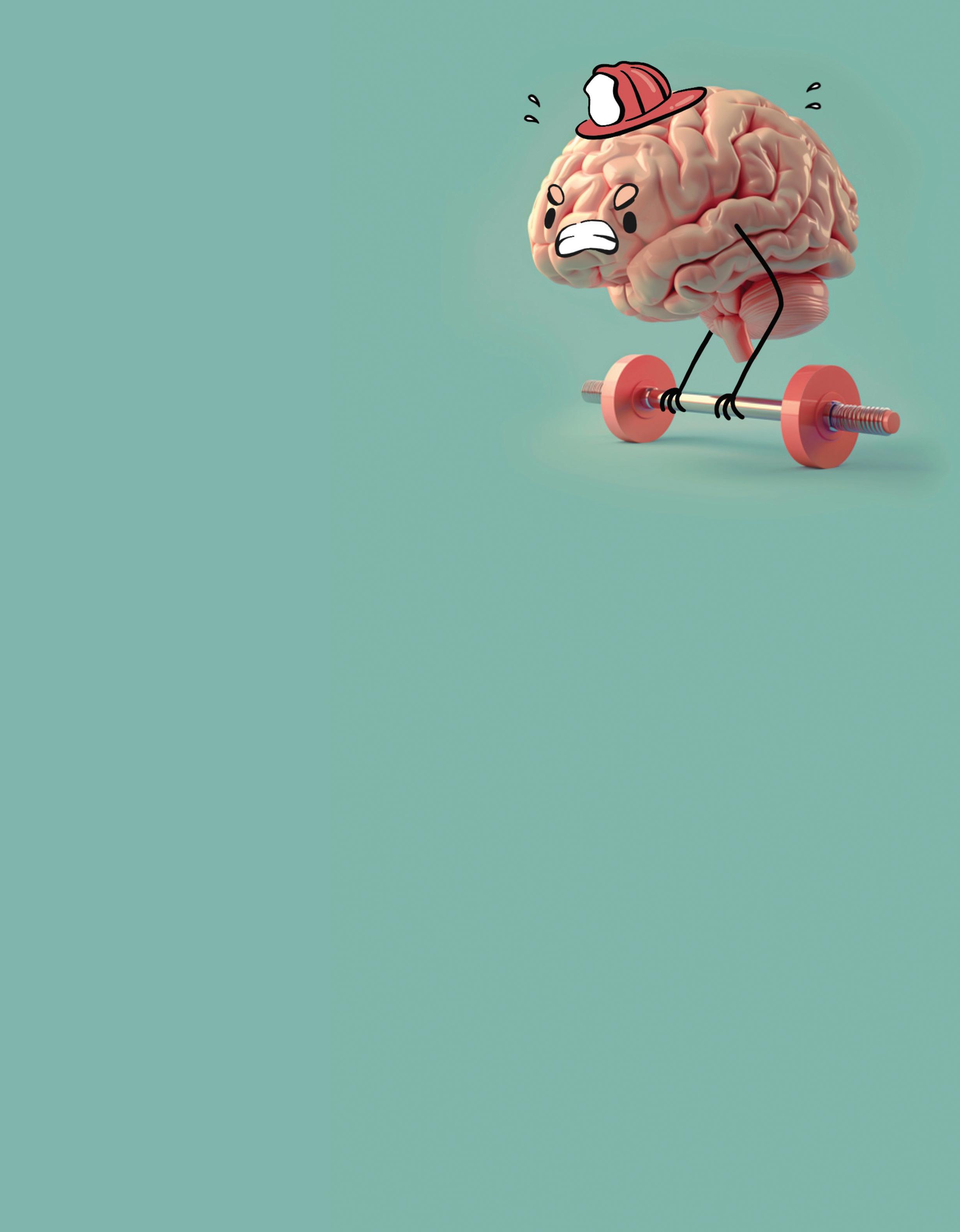
LIKE PHYSICAL SKILLS, VISUOMOTOR TECHNIQUES CAN IMPROVE HOW QUICKLY THE BRAIN RECOGNIZES AND REACTS TO EMERGENCIES.
baseline status and monitoring in which direction we are going. Are a given firefighter’s forced-entry skills as good, better or worse today than they were five years ago?
The same holds true with our brain’s ability to identify cues, indicators or markers in the field. Not everything can be picture-perfect or preventable, but we can improve our chances of responding efficiently. Much like repeatedly driving a Halligan into a door prop can improve forced entry time, science has come up with ways to improve how quickly the brain recognizes, assesses and reacts to what is going on in the world around us.
VISUOMOTOR ASSESSMENT COMBINES
THE WORDS “VISUAL” AND “MOTOR” AND INVOLVES THE ABILITY TO COORDINATE VISION WITH THE MOVEMENTS OF THE BODY.
It brings together the world of research and science to decrease response and reaction times to improve performance. Like our muscle coordination, response times can be trained and improved through specific types of practice.
THIS IS BASED ON THE SCIENCE OF NEUROPLASTICITY, AN UMBRELLA TERM FOR THE BRAIN’S ABILITY TO MODIFY, CHANGE AND ADAPT STRUCTURE AND FUNCTION THROUGHOUT LIFE AND IN RESPONSE TO EXPERIENCE.
In application, visuomotor training allows you to discipline the system to identify and process information while, in turn, mapping (or creating) and performing a physical response known as a motor response. Visuomotor training does this by increasing the load, or stress, on the brain, thus training personnel to react more quickly and efficiently.
Again, to manage something, you must measure it.
There are many ways to assess visuomotor function, one being reaction time. In many cases, a reaction-time test will show how long it takes to complete a task or make a targeted decision from the moment a stimulus or cue is introduced. To break that down even further, you measure how long it takes an individual to identify the presence of a cue, and then process
and initiate a reaction to that cue.
One way to measure these is with a light board, such as the Dynavision D2, in which one of the system’s reaction-time tests measures both the processing of light cues and physical movement in the selection of the target. Another way to analyze reaction time is to dissect the field of vision into quadrants and examine the reaction time based on where the subject is responding visually. This breakdown allows researchers to compare right, left, upper and lower quadrant performance.
The researchers at Texas A&M University–Commerce are using these technological innovations to assess the visuomotor function of tactical personnel. Co-author of this article Hussien Jabai wants to integrate this system, along with other forms of testing (such as force plate, movement analysis, job simulation and field testing) into fire and police academies.
There are parallels in sports training, particularly in baseball. One common method baseball players employ is to face pitching machines that generate different pitch speeds, angles and locations — usually at speeds much greater than a live pitcher will throw. This is designed to enhance their ability to recognize, process and respond swiftly to the complexities of a live game scenario.
By training their brains for conditions faster than what they will actually experience on the diamond, real game events will
seem to unfold more slowly since the batter is conditioned to react to faster-pitched balls. who trains to hit a 110 mph fastball will be less overwhelmed by a live pitcher throwing 98 mph.
IN FIREFIGHTING, THE OBJECTIVE IS TO REPLICATE THE UNPREDICTABLE NATURE OF EMERGENCY SITUATIONS AND PROVIDE FIREFIGHTERS WITH A TARGETED TOOL FOR HONING VISUOMOTOR SKILLS.
Unlike baseball players, firefighters cannot call a time out. The rules of the game are in constant flux, there are more on-scene distractions, there are no rain delays and the stakes are considerably higher than a notch in the win-loss column.
With firefighters, we emphasize the importance of adaptability, quick decision-making and precise execution, need for effective visuomotor skills in dynamic, high-stakes environments. Again, similar to the new driver running lights and sirens through congested and unpredictable traffic or a truck crew breaching a door at 2 a.m. with reported trapped occupants.
Measuring and training the brain will improve firefighter and medic effectiveness reduce the chance of injury. Which makes that a win — even if you don’t play baseball.
Building a visuomotor profile for cadets in comparison to existing and specialty team personnel
Analyzing if there is a visuomotor difference between job descriptions
Evaluating if there is a necessary minimum threshold for specialty teams

OF THE

Brad's book details a 40-year firefighting career, including triumphs, personal challenges, memorable individuals, and his dedication to learning.
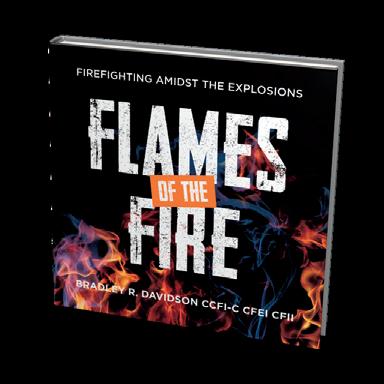
NOW


HOW TO DEAL WITH WHATEVER LIFE THROWS AT YOU
By Karen F. Deppa, MAPP, and Michael A. Donahue, Ph.D., CFPS PilotLight Resilience Resources

RESILIENCE ("RI-ZIL-YUHNS"):
THE ABILITY OF A PERSON TO ADJUST TO OR RECOVER READILY FROM ILLNESS, ADVERSITY, MAJOR LIFE CHANGES, ETC.; BUOYANCY.
Resilience is not a single, fixed trait, but a set of skills and processes for adapting and coping. It’s marked by behaviors that seek solutions, ask for help, and use available resources to bring about positive outcomes.
OUR RESILIENCE IN A GIVEN SITUATION IS INFLUENCED BY THE INTERNAL RESOURCES WE BRING TO THE SITUATION, AS WELL AS BY OUR RELATIONSHIPS WITH OTHERS AND OUR COMMUNITY OR ENVIRONMENT.
If the balance of internal and external circumstances changes, the adaptive systems we rely on to be resilient can be affected. It’s possible to show resilience in one situation and not in another.
Psychological resilience refers to the capacity to respond in healthy and productive ways when faced
with setbacks, adversity and trauma. Resilience (or the lack of it) can manifest itself in behavior, thought patterns and emotional responses.
Think about yourself. Do you address problems head-on, or would you rather avoid dealing with them? Do you tend to be hopeful and optimistic, or do you assume the worst of the situation and others? Do you go with the flow, or do situations that push your buttons bring on extremely negative responses?
The way you answer these questions can indicate how resilient you are.
Emergency responders tend to rely heavily, sometimes exclusively, on their workmates for support. And they tend to believe that others outside the service cannot understand what they do. But, emergency responders
should be looking outside their emergency services colleagues for fresh perspectives. Because a social support team doesn’t need intimate knowledge of the job to help rebuild broken pillars. And remember, resilience is situational; you may answer the above questions one way in a given situation and much differently in another.
Research points to three pillars, or factors, that contribute to psychological resilience in the emergency responder community. Think of a three-legged stool. If any one of its legs is shorter than another, it can’t balance, and using it to maintain equilibrium is difficult, if not impossible. The same concept applies to the three pillars of resilience. When one or more of these pillars is absent, shortened or weak, the resiliency roof they support will lean, sag or topple. Just what are these pillars?

The first pillar, one that deals with the assessment of our situation, can involve a tendency to think about the worst that could happen. While it can serve an important survival function, it also colors our assessment of non-life-threatening circumstances. For example, many first responders report being in a constant state of hyper-vigilance, which can manifest itself by looking for exits while dining in restaurants or constantly scanning the room for suspicious or distressed individuals. When events are recognized for what they are, optimistic realism puts us in a better frame of mind to seek solutions and positively affect an outcome. This doesn’t mean we turn into unemotional robots. Instead, we can learn and practice skills to objectively recognize and reject cognitive distortions, break cycles of destructive thought patterns, and manage the inevitable emotional reactions.
Coping capacity, the second pillar and what is known in the research as “coping self-efficacy” means believing that we can deal effectively with a stressful event. It’s associated with less psychological distress. We train extensively to develop the necessary physical skills for managing emergency events, which adds to our coping capacity. This skill set must include the confidence to successfully intervene when possible, as well as the ability to recognize and come to terms with events beyond our control. Every emergency event comes with a certain level of stress. How we channel that stress, whether as a challenge or as a threat, directly impacts our coping capacity. We must be cautious not to become overconfident. Failing to include a realistic perspective of our capabilities and limitations sets us up for disappointment. When we don’t live up to our own expectations, self-perceived failure can lead to maladaptive behaviors, such as depression or excessive risk-taking. Underconfidence is equally harmful, leading to feelings of being overwhelmed. Thus, we must train to address the worstcase emergency incident, but retain a realistic assessment of our capabilities. Changing how we think about stress and understanding how we put our personal values into action can contribute to our coping capacity.
Research demonstrates that social support, the third pillar, is critical to well-being, whether in the lay public or emergency responder community. Feelings of belonging and supportive relationships with family, friends, peers, supervisors and others are associated with higher levels of life satisfaction and well-being, and decreased risk of depression, PTSD, stress, and other behavioral health problems.
The unifying thread among these three pillars is that resilience skills can be taught and learned. By learning, consistently practicing and reinforcing the three pillars of resilience so that they become habits, we can improve our chances of preventing behavioral health problems, increasing well-being, and contributing to a more effective response force. Understanding the nature and importance of these pillars helps us recognize when one or more is not holding up its end. We can seek the help needed to get our pillars aligned — and that is how we define resilience.
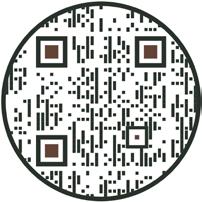
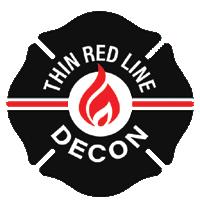

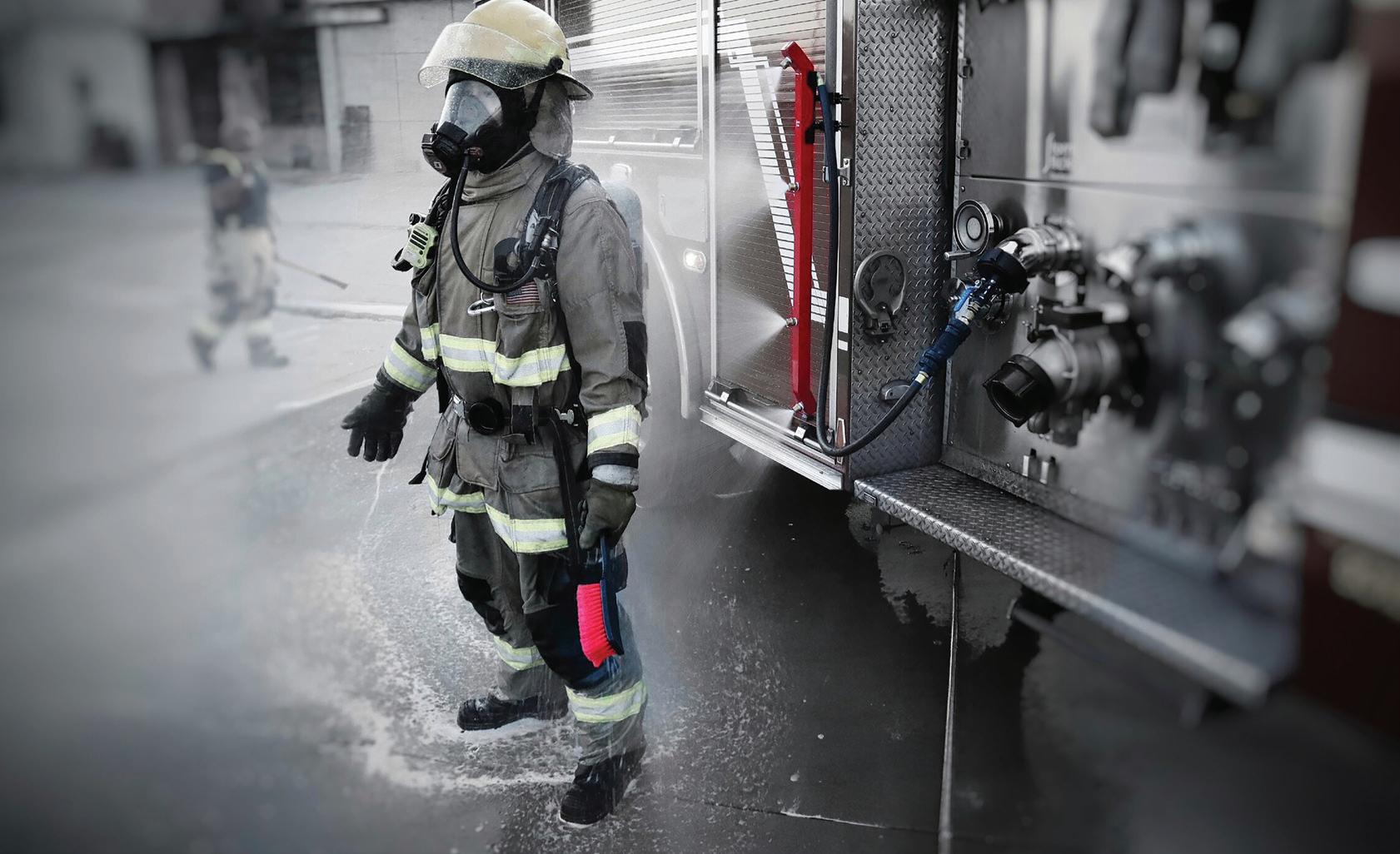
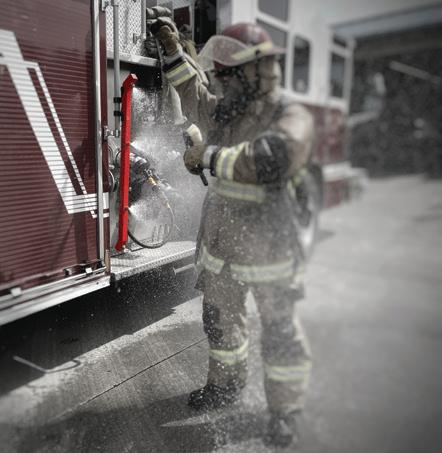
No one understands the safety needs of firefighters better than the firefighters themselves. These firefighters have taken matters into our own hands to create powerful, innovative and effective products designed to do what they know needs to be done.
A group of active veteran firefighters from Phoenix, Arizona set out to find sciencebased solutions to reduce rising cancer rates among firefighters. They took a broad range of data then worked with engineers, machinists, and industry experts to design and manufacture the StormStick Decon System. Utilizing some of Arizona’s busiest fire companies, they extensively tested the system for over a year using virtually every type of real-world fire situation. The result is a premium system that is both usable and incredibly effective.
This patented detergent-based rinse system is proven to rapidly remove most of the hydrocarbons, heavy metals, particulates, and soot that water alone cannot. It is the most effective and usable preliminary exposure reduction system available.
Developed by firefighters from Sweden, the DOT System is a series of fire gear decon bags and accessories designed to encapsulate contaminated gear after a fire to minimize exposure to harmful contaminants. The DOT System, like Responder Wipes, is a “Healthy Firefighters” approved product and a part of an overall recommended protocol to protect firefighters from occupational cancer and other illnesses. The components are highly durable polyester reinforced polyvinyl chloride and are designed to be re-used for years. They can be easily cleaned in an extractor or washing machine and hung to dry quickly, minimizing environmental impact. Two of the bags also have welded seams and gas-tight zippers ensuring they won’t offgas!
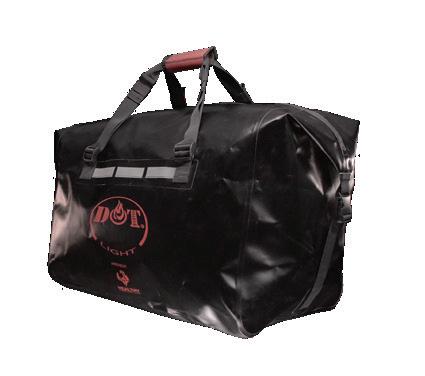
The Clean Getaway Hose Cleaner was designed by a Philadelphia firefighter to simply, efficiently, and effectively clean hoseline BEFORE restoring the apparatus and departing the scene. The portable, battery-powered unit utilizes pumper-supplied water via standard connection 1.5″. Its motor-driven brushes and pressurized water jets effectively remove soot and particulate-borne contaminants from hoseline. The cleaning efficacy of the Clean Getaway hose cleaner has been verified through multiple studies done in consultation and cooperation with textile experts at North Carolina State University.
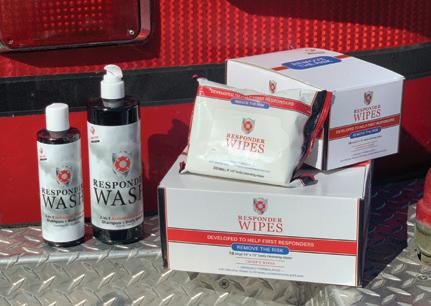
Responder Wipes, co-developed by a fire chief from Texas, are formulated with Micellar Water, with cleansing compounds that dissolve dirt, oil, soot, and other hydrocarbons. Micelles gently lift away toxins and contaminants, sweep impurities from pores and effectively hydrate your skin.
Available in three sizes, they contain no aloe or alcohol and have been shown to be not only powerful and safe on skin, but also biodegradable. They’re the thickest on the market with plenty of cleansing solution to leave you fresh and clean, and are “Healthy Firefighters” approved! Be sure to try Responder Wash, an activated charcoal shampoo + body wash recently added to the product line.
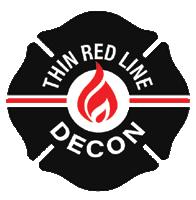
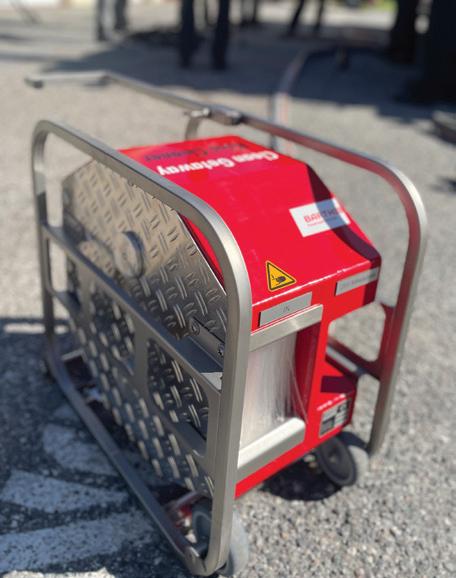
There is no silver bullet when it comes to mitigating exposure to toxins, so it’s important to utilize every piece of equipment available. You clean your gear, you clean your tools, you clean yourself, but do you clean your radio strap? Traditional leather or nylon radio straps can be nearly impossible to decontaminate. Their absorbent materials can harbor carcinogens and pathogens.
SaferStraps is a better option for you! Designed by Florida firefighters for firefighters, SaferStrap radio straps are fully sealed to ensure they are waterproof and can be completely decontaminated. They are made with 3M® High Vis for maximum safety, are heat resistant up to 310° before softening, and are durably constructed to withstand extreme elements.
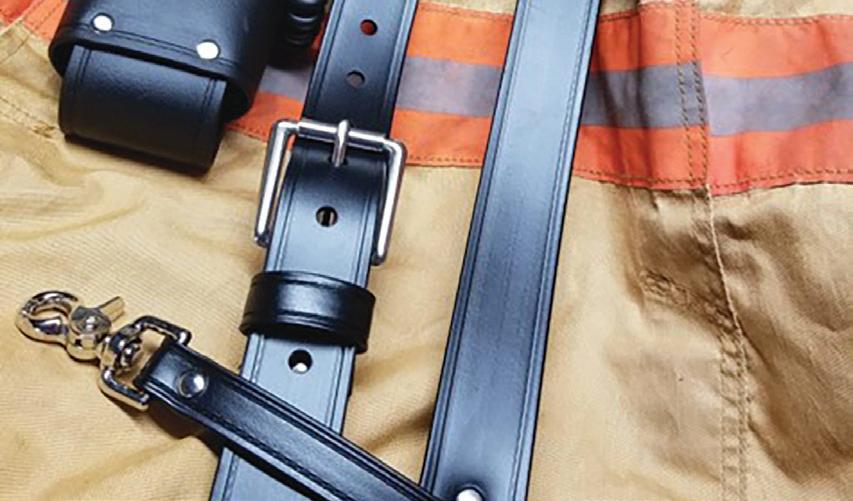
Thin Red Line Decon was born out of a desire to make it easy for firefighters to be clean. It is understood that firefighters face a higher risk of occupational illness. Multiple studies suggest that dermal absorption is a greater route of exposure than inhalation or ingestion. Studies have also suggested the fireground mitigation efforts are effective at reducing the number of toxins after a fire.
However, there is no silver bullet. There are many ways to reduce the risk of occupational exposure. Thin Red Line Decon makes it easy – we bring all the BEST products together for you – products developed FOR firefighters BY firefighters. Everything you need to be clean – on-scene, back at the station, and in between!
To learn more about these products and more visit THINREDLINEDECON.COM
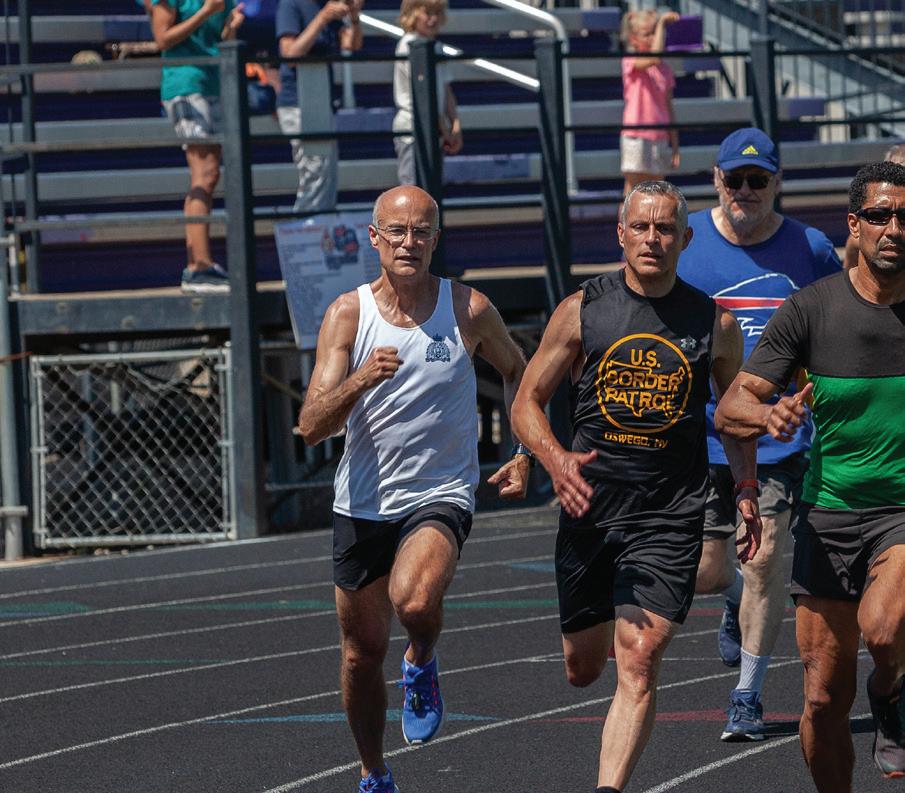




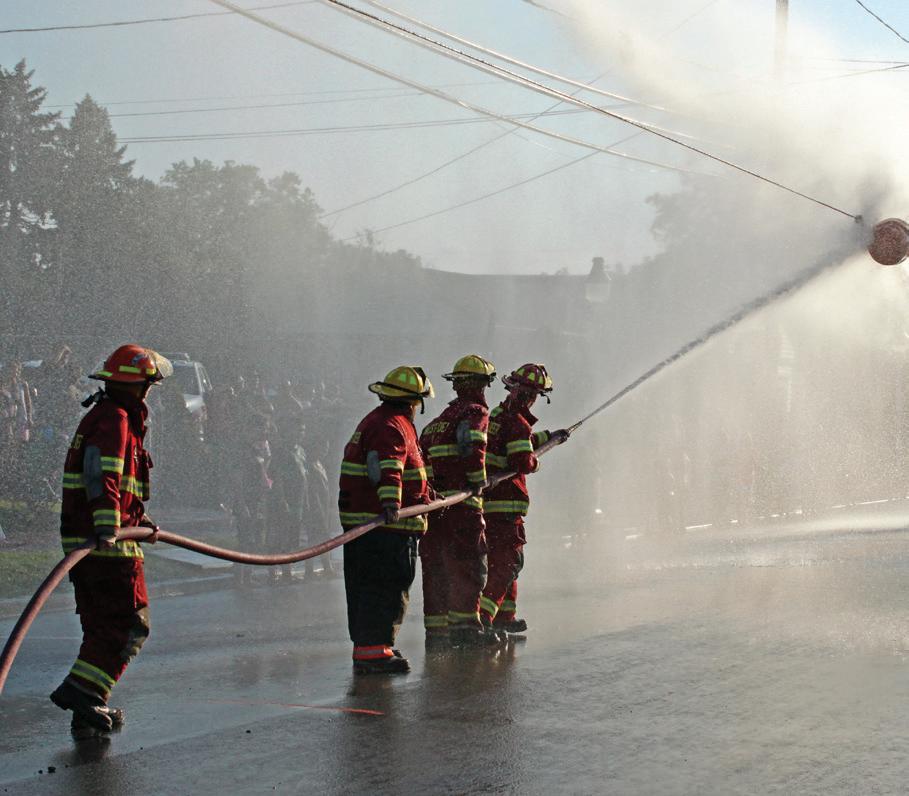

Join 3,000 fellow first responders to July 15 - 21, 2024
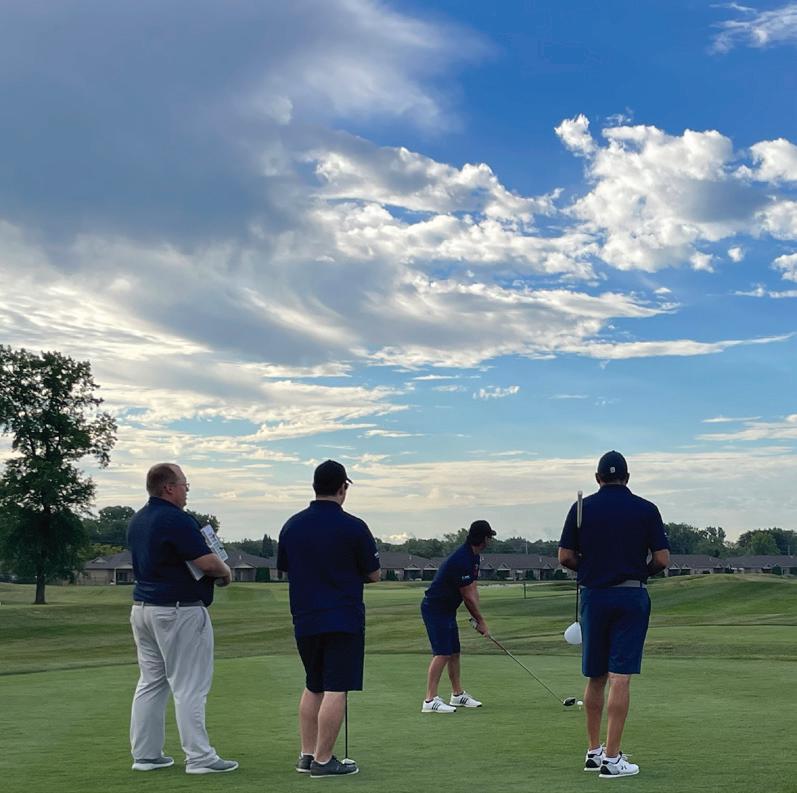

Located just north of Pittsburgh, Butler County, PA, is proud to be the host of the 2024 Games, which promotes physical fitness and community among first responders, protective service personnel and their agencies. Registration is now open!
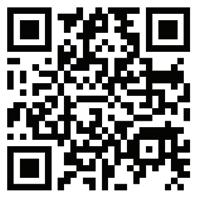
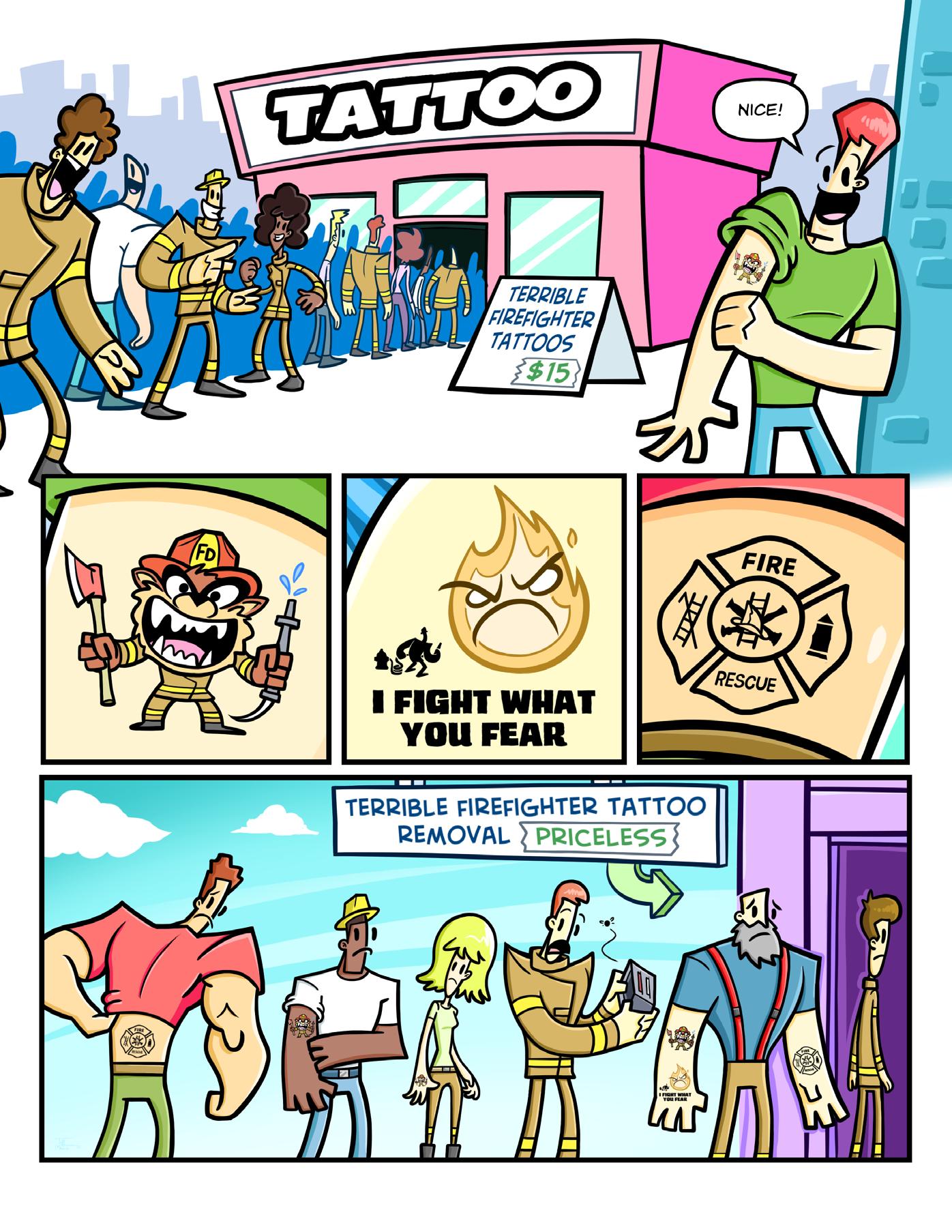
By Liz Fleming, Host of iHeart Radio's Liz Fleming Travels
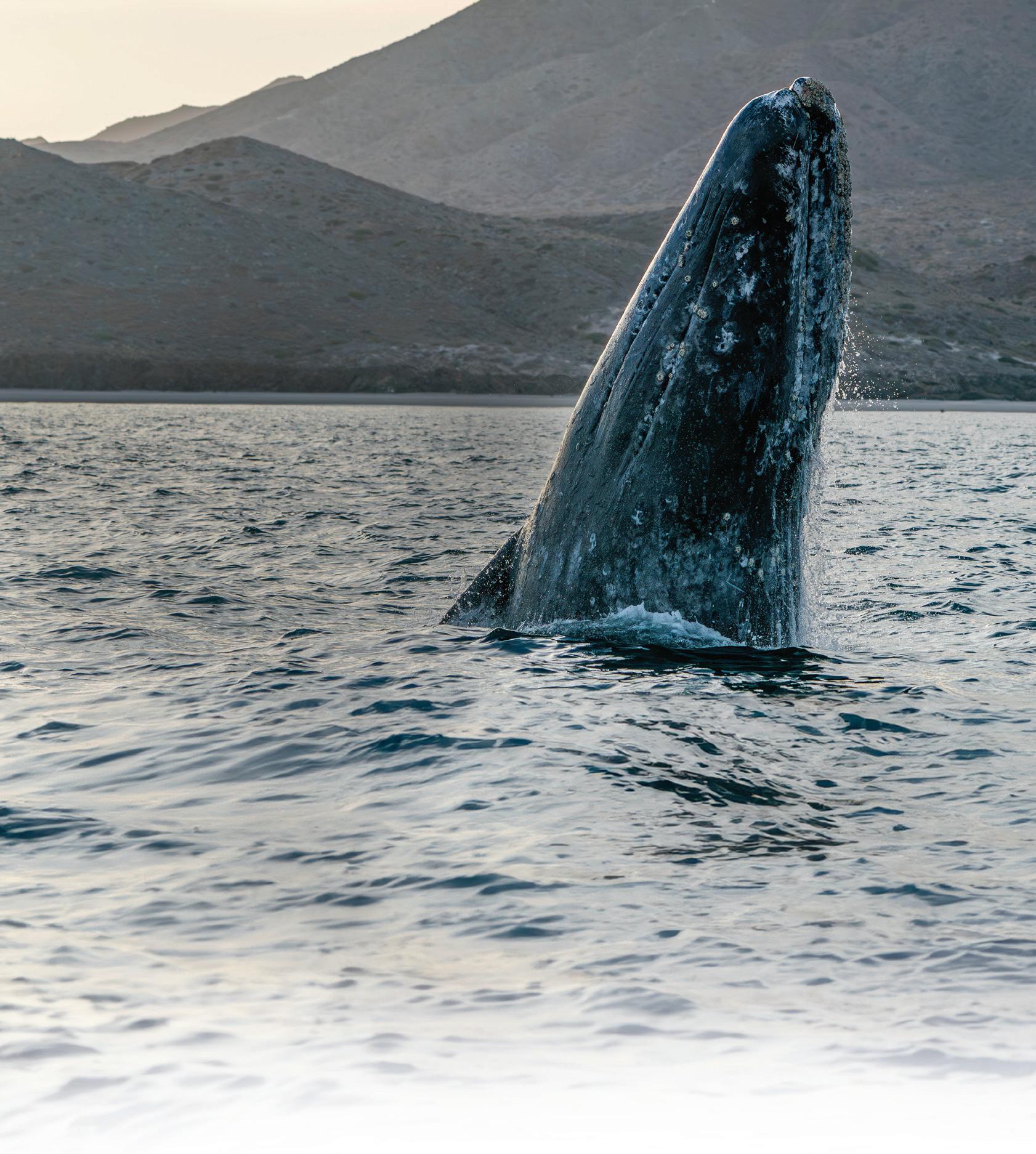
Writer Mark Twain sure had it right when he said:
”TWENTY YEARS FROM NOW, YOU WILL BE MORE DISAPPOINTED BY THE THINGS YOU DIDN’T DO THAN BY THE ONES YOU DID.”
That’s the attitude that fuels adventure travel of the sort that UnCruise trips are all about. If you’re tired of all-inclusive resorts, packed pools and busy beaches, an expedition cruise might be exactly what you’re looking for.
Our UnCruise adventure was an exploration of the Sea of Cortez, located on the west coast between Mexico and the Baja Peninsula. Our home for a week was a sturdy little ship called the Safari Voyager, designed to accommodate a maximum of just 70 guests. The cabins were small but comfortable with large windows
that looked out on the water that surrounded our ship on all sides. We felt truly alone on the ocean, communing with sea life and the sun. And it was pure magic.
Our group quickly became a friendly team, as we ate, laughed and adventured together. Each day was a different set of excursions and experiences that introduced us to a part of the Pacific that Jacques Cousteau once referred to as the “aquarium of the world” as well as to the arid desert lands at its shore – a stunning contrast. The UnCruise system made it all easy.
When we boarded, we were provided with our own underwater gear –mask, fins and snorkel – in a mesh bag labeled with our stateroom numbers. A wetsuit in our size was provided, along with a hanger on which to store it in the wet gear area. This thoughtful organization
meant that no scrambling around was ever necessary when it was time to hit the water. Though we’d snorkeled many times, other guests hadn’t, so patient instruction was offered in everything from how to peel into and out of a snug wetsuit, to how to clear your mask’s lens and breathe air, not seawater, through your snorkel.
All that gear was key to our best adventures. We began with a shallow water exploration of a reef, simply to get everyone feeling comfortable, but we quickly progressed to deeper water, where we explored a rocky wall and a shoreline alive with an explosion of brightly colored fish, sea stars, anemones and even camo-green moray eels oozing out from under rocks to open their horror-movie mouths. It was mesmerizing – but just a warm-up for the main snorkeling event at the sea lion colony.
Sea lions, we learned as we waited in wet-suited anticipation, come in three varieties – babies, females and great big scary roaring males. Our guide explained:
“THE BABIES ARE LIKE PUPPIES WHO WANT TO PLAY WITH YOU, NIBBLE ON YOUR FINS AND NUZZLE UP AGAINST YOU.
"The mothers don’t worry about humans and they’re happy to let you play with their babies. The males don’t care about either the females or the babies. What they care about – and they care very much – are their rocks. Male sea lions are very territorial so if you come too close to the rocks where they’re sitting, you’re asking for trouble. Don’t look them in the eye as that’s a sign of aggression but just get out of their area. You’ll know they’re angry when they start to bark.”
We slid into the water, vowing to give the males all the rock-room they wanted.
Within minutes, we were surrounded by slippery, graceful, playful sea lion puppies, swooping past, circling back and then popping up in front of us. Unlike their grumpy dads, sleek sea lion puppies, which are about the size of a large dog, have no personal space concerns – the closer they can get to you, the happier they seem. An hour of playing with them flew by and no one wanted to get back into the boat when the guides began herding us. It was as if, during those magical moments in the water we’d crossed the normal barrier between species and become puppies ourselves.
You might have thought that experience would have been enough to make the whole Baja Cali Sur (south) experience worth the flights to get there, but UnCruise had much, much more in store.
One cool morning, we boarded sturdy pangas (open fishing boats) captained by local pangueros (fishermen/captains) for a one-of-akind whale watching expedition.
For most of us, seeing a single whale, even at a distance, is mindboggling. But to see over a dozen grey whales blowing, breeching and even raising their glorious tailflukes high into the air is something to be remembered forever. Apart from cries of “Over there!” and “At three o’clock!”, there was an awed silence in the boats as we witnessed these giants – many as big as school buses – rolling in the deeps. Though our captain did his best to position us where we could see clearly, the whales were never chased or harassed and no boats ever crowded them or each other . Respect for the natural world is paramount with UnCruise and the pangueros.
After two surreal hours of watching for blows and breeches, we docked and gathered in a local restaurant, sharing a lunch of fresh-caught seafood. One UnCruise guest was so thrilled by the whales that she bought a bottle of tequila and shared shots with the group.
“THIS,”
SHE SAID RAISING HER GLASS,
“IS A LIFE MOMENT THAT NEEDS TO BE CELEBRATED. TO THE WHALES!”
From the largest denizens of the deep to the tiniest creatures of the tidal pools, we explored all that the Baja had to offer. While the whale watching and sea lion swim party were doubtless the most spectacular events of the trip, we also spent a sunny morning ashore, riding burros (donkeys for our non-Spanish speaking friends) and horses along a rocky path that led us past a small, unexpected pond oasis ringed with palm trees tucked into the brush. On other days, we wandered with our guides along the shoreline at low tide, searching the shallows and finding an orangey-brown octopus here and a tiny, silver puffer fish there. We hiked along high ridge lines, learning about the various prickly cacti that lined the paths until we reached impossibly high peaks for sweeping views of the ocean below.
One afternoon, we loaded ourselves into double kayaks and paddled through the waves to see a colony of blue-footed boobies
(NOTE: THE SEXIEST BIRDS IN THE MATING GAME HAVE THE BRIGHTEST-COLORED FEET. MAYBE IT’S TIME FOR NEW KICKS?)
and their ever-present friends, the pelicans, always poised to dive into the water for a fish-feast. Every day was the perfect mix of serene paddling, walking, snorkeling and swimming, punctuated by interesting info from our well-informed guides. There was always lots of time for peacefully contemplating life as we watched a sea turtle languidly swimming past the Zodiac. Every meal was a casual, wearwhatever’s-still-clean, laughter-filled affair in the communal dining room, where we regularly switched seats, always ending up beside someone interesting. The food was excellent, the service superb and the atmosphere never less than welcoming and fun.
If this sounds like your kind of trip, give some thought to the rest of that Mark Twain quote. Rather than staying safely in our comfort zone, Mr. Twain encouraged us to, “throw off the bowlines and sail away from the safe harbor.”
It’s the perfect advice for anyone yearning for a little adventure.

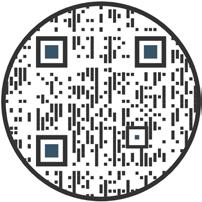
With FirstNet and Family, first responders and those in public safety get the missioncritical wireless network and prioritized connectivity of FirstNet – never competing with commercial traffic. And your family can save 25% off* your AT&T lines on the world-class connectivity of AT&T. All on one bill, with one point-of-purchase and U.S.-based service and support.
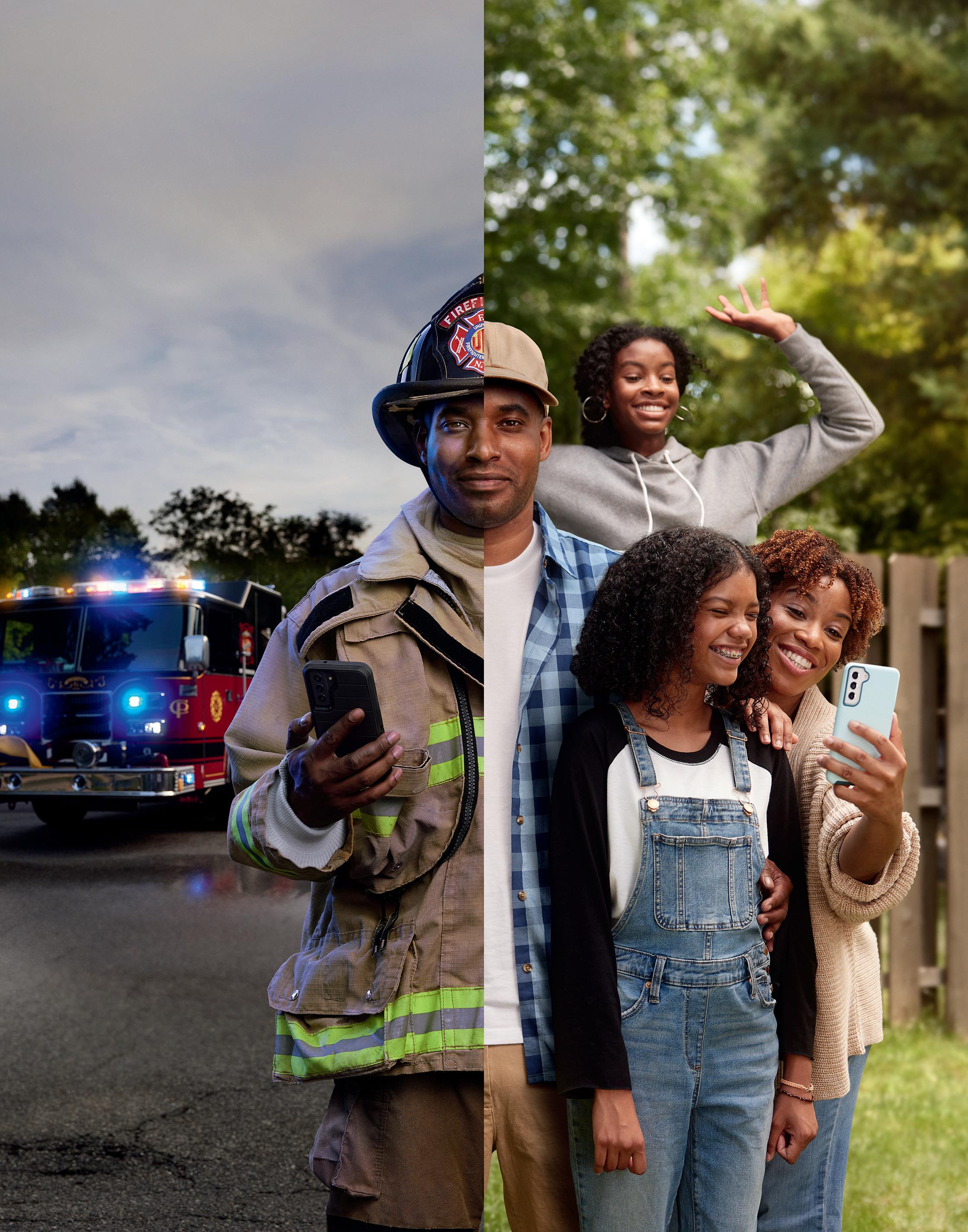
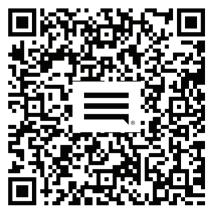

The NVFC First Responder Helpline, offered through Provident, provides PTSD and mental health services to every NVFC member and their household family.
Find 24/7, confidential counseling, resources, and referrals to assistance for a range of issues, including:
• Stress management
• Depression
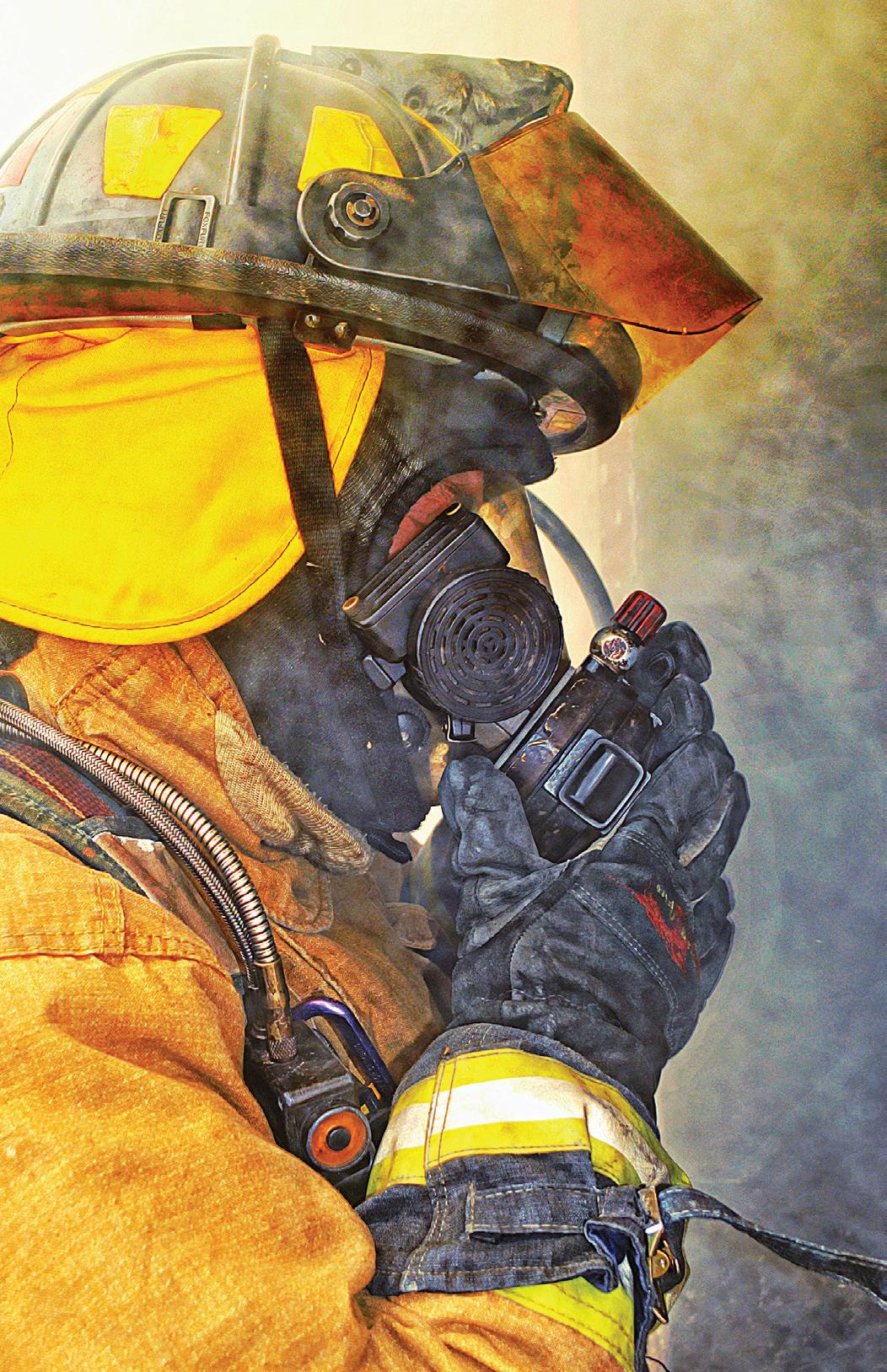
• Family conflict
• Anxiety
• Relationships
• Financial or legal concerns
• Substance misuse
• Grief or loss
• Problem gambling
• Child or elder care
Follow these steps to access the NVFC First Responder Helpline:
If you are an NVFC member, login to the members only web site and look under membership benefits to find the number.
If you are not an NVFC member, join for just $21 at www.nvfc.org/join to access the First Responder Helpline benefit.
NVFC members and their household families can call the First Responder Helpline to speak with master’s level clinicians with an average of five years of experience specially trained in assisting and supporting first responder groups. Up to five coaching sessions are included.
In addition, consultations and referrals are available for everyday concerns including childcare, eldercare, adoption research, a 30-minute legal consultation, and referrals to consultants to assist with financial concerns.
The NVFC First Responder Helpline is brought to you by:
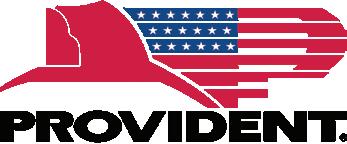

By Mynda Ohs, PhD

It’s 8 a.m. and my husband is on his way home from a 72hour shift at the fire station.
I’m nervous because I’m not sure what mood he’s going to be in. The kids and I went through the whole house and cleaned it. I did my inspection to make sure nothing was out of place. I’ve called him to get a feel for his mood, and he said they ran five after midnight, which means he will be tired and cranky. Probably a good idea if the kids and I go find something to do.
I REALLY WISH HE COULD JUST BE MORE PRESENT WHEN HE’S HOME AND NOT ACT LIKE THIS IS A FIRE STATION.
If this sounds familiar, you may be part of a first responder family. What many don’t understand
is the work brain/home brain concept and why what I experience happens in so many homes.
While in work brain, your body is in a hypervigilant state caused by the increase of the adrenaline and cortisol you need at work to make you operational, task driven, emotionally detached, energetic, focused and alert. Your work brain believes “If I stay ready, I don’t have to get ready.” The home brain is the complete opposite. What goes up must come down, so the family tends to get a different version of you: one that’s more tired, irritated and emotionally unavailable.
The problem is that it takes your body 18 to 24 hours to switch out of work brain – and that can cause a lot of problems at home. Many spouses think that when
you walk through the door you can switch over immediately.
As a former first responder myself and fire spouse of 28 years, I talk to firefighters about the job and I’m often told “I don’t take work home with me.” My response to them (and to you), is this: you do indeed take it home. You just aren’t talking about it. If it takes you 18 hours to transition, what brain are you in when you walk in the door? That’s right, work brain, which means you’re going to interact with your family like a firefighter. I know in my house that doesn’t work out very well.
There are other behaviors that are great at work but not at home. Recognize any?
At work, time is of the essence. We learn early in our career to get on and off scene as fast as possible for a better patient outcome. But at home, when your family wants to tell you something, you may catch yourself thinking: “Hurry up. What’s your point?” or “What do you need from me?” This can leave your family feeling as if you’re uninterested or trying to minimize what they have to say.
At work, it’s all about safety and scene control. If you aren’t in control of your setting, someone could get hurt. In my house, this behavior can create significant tension because it feels as if my husband doesn’t trust me or the kids. I now understand that this response is about fear and the thousands of slides you have stored in your memory bank about everything bad that could happen to the ones you love the most.
When firefighters train, we use scenarios to play out the various situations we might encounter. You throw everything possible at the problem, figure it out and always win. Then real life happens, and things don’t go your way. Are you wired to feel good about losing a patient or a house fire? No, of course you aren’t. When you get home, you may be defensive with a significant other or be unwilling to take responsibility for even the smallest issues.
Be honest and talk about your thoughts and feelings. Hiding them just makes matters worse.
Find coping strategies that work for you and your family. For example, you might choose to work out before you get home, or run a few errands to give you time to gain space between your two brains. Talk to your family before you come home, make a list and have a plan.
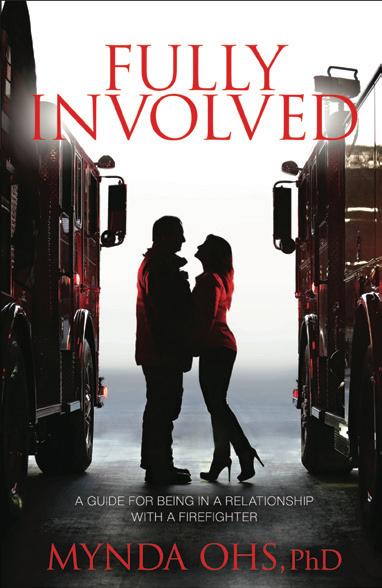
At the fire station everything you do is scheduled: cleaning, training, eating, and working out. When you show up for work your entire workday is planned for you. Not much organizing needed on your part, but you still accomplish a lot. As a family, you can create schedules, but life always seems to get in the way. Some days, that schedule gets thrown completely out the window. This can create a lot of anxiety for you – which might look like anger to your family.
One reason many of us go into the fire service is the family vibe and camaraderie we find there. But many firefighters live in a constant state of guilt and fear, struggling to decide who they’re going to have to let down today. Do I say no to overtime? Should I skip an after-work activity, or tell my family I can’t be there for a baseball game, birthday party, or anniversary?
Read books, listen to podcasts, talk to peer supports, or see a therapist. Don’t wait till your relationship is in trouble to find a good culturally competent therapist.
Say thank you often for the support and sacrifices your family makes daily.
Join fire spouse and mental health clinician Mynda Ohs as she uncovers and showcases the realities of being in a relationship with a firefighter. In Fully Involved, Ohs shares 22 years of marriage advice and experiences practical to first responders and their relationships. Mynda's book deals with the challenges faced by first responders when they're away from home. It offers both personal and professional insights, self-care and communication tips, and inspiration to help offset the strains and loneliness of being married yet feeling single at the same time.
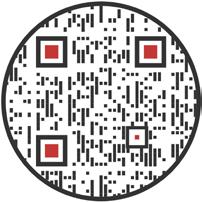



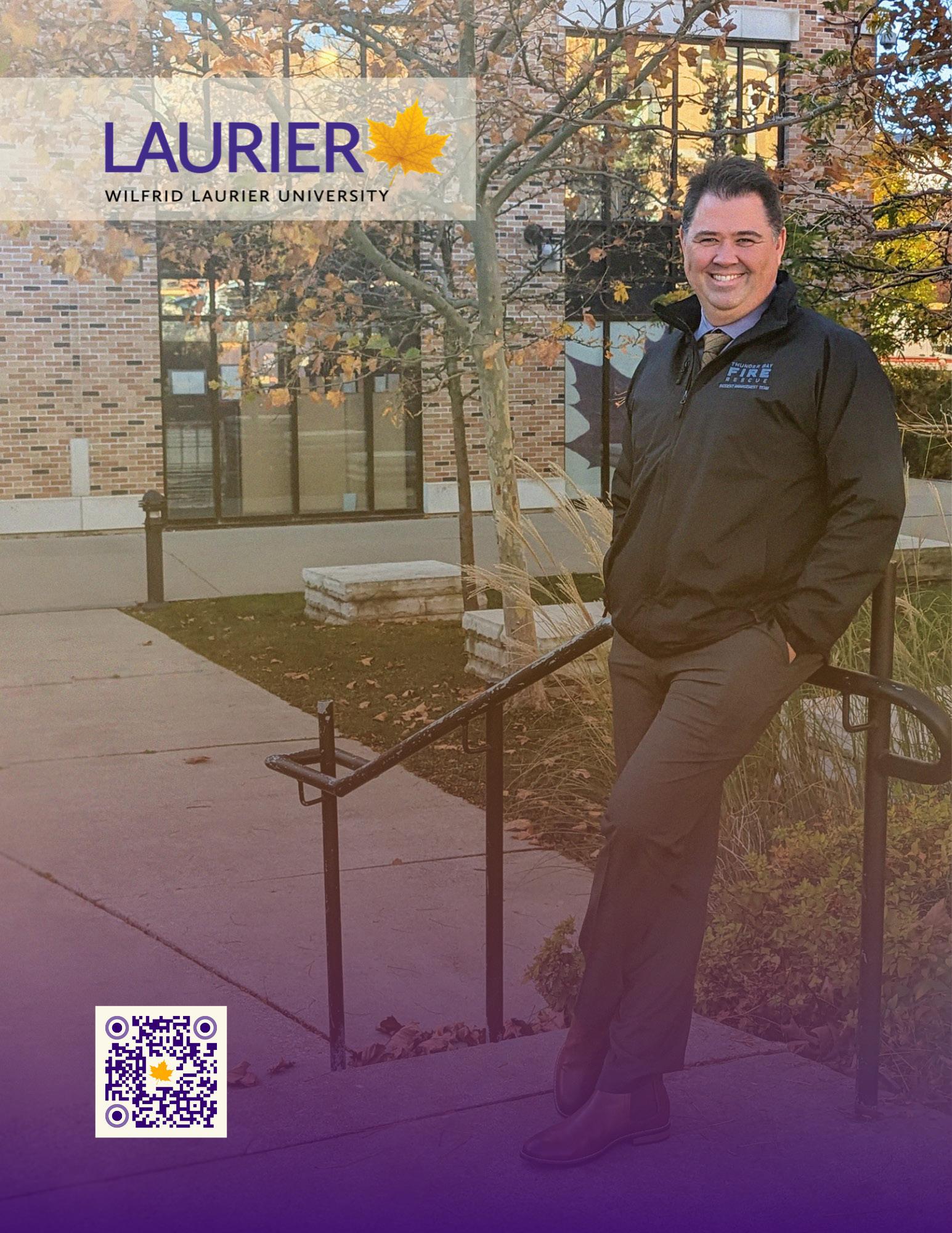
Online Undergraduate and Graduate degrees Learn from anywhere in
Earn your Degree in Public Safety from Wilfrid Laurier University!
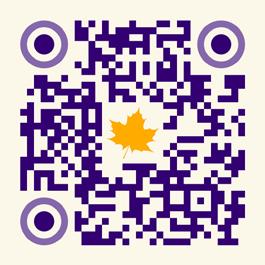
Q. What were your takeaways from the program and how has your Master of Public Safety degree impacted your career?
A: The ability to see things from a different perspective; the willingness to admit you don’t know everything; and the capacity to be more open in taking ownership of an error and correcting it. In a role like mine, everyone expects you to be assertive and willful, but that’s not always the way it has to be. The program taught me there is more than one approach. Overall, it’s made me a more well-rounded person, and a better firefighter and officer.
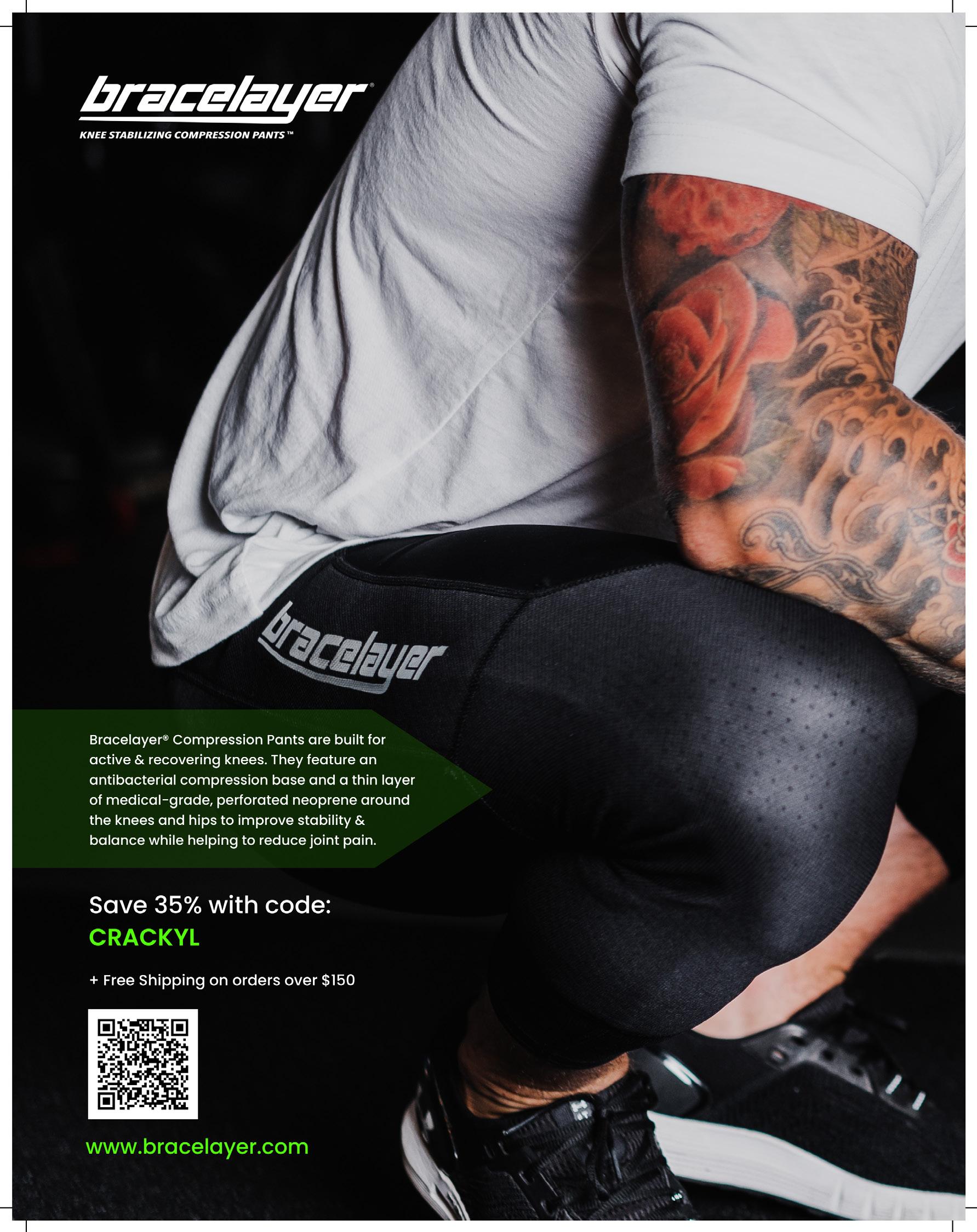

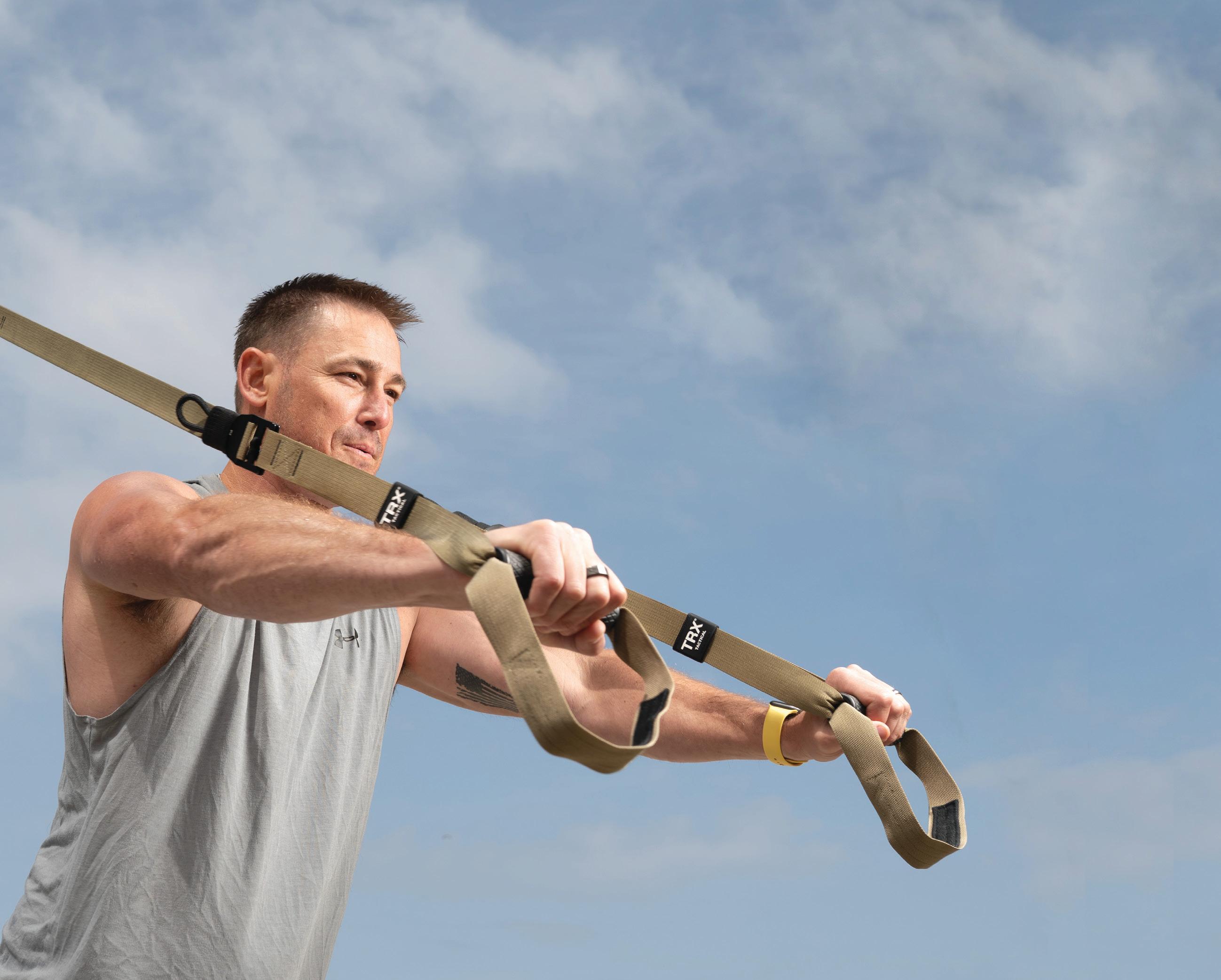

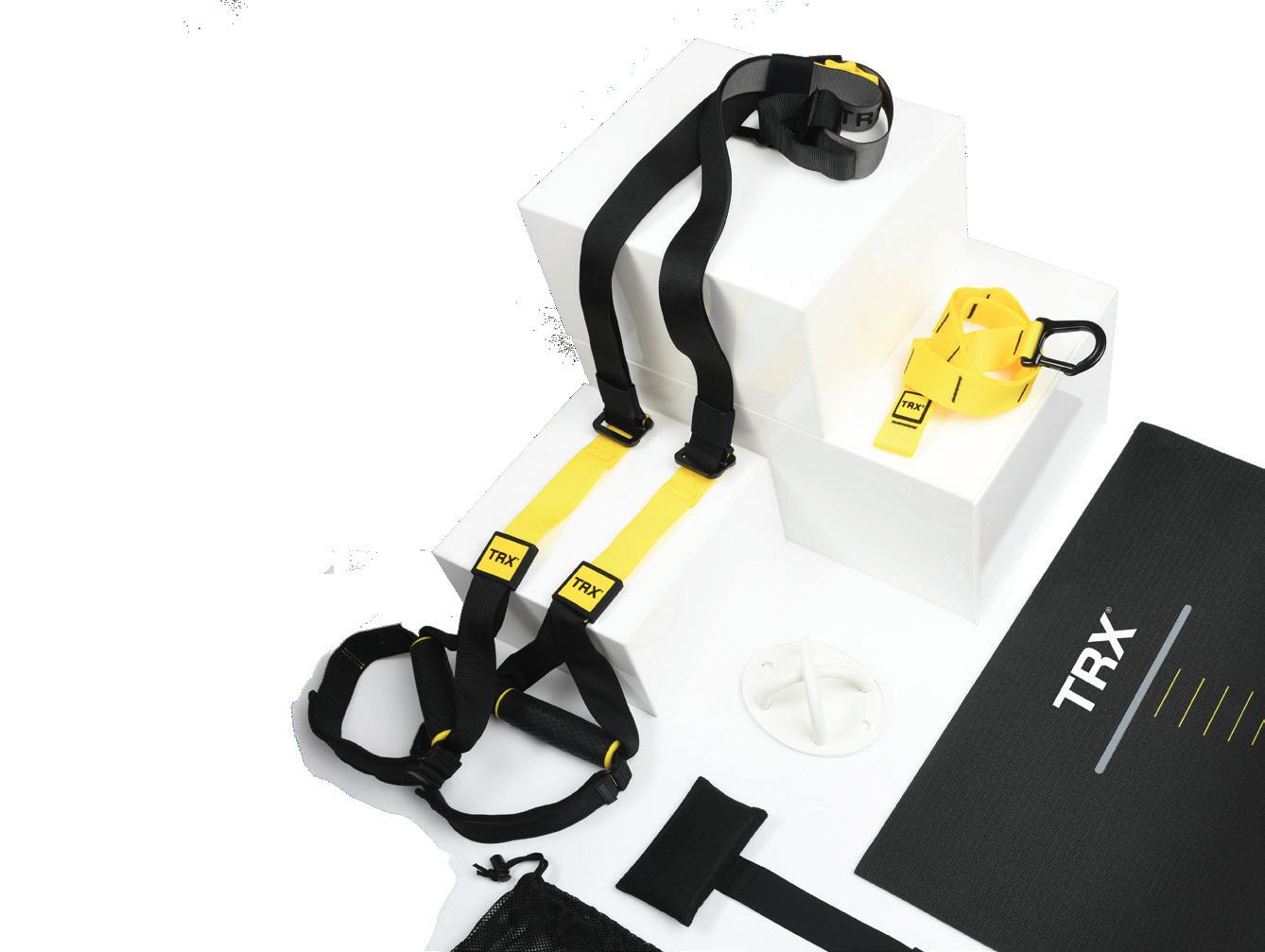



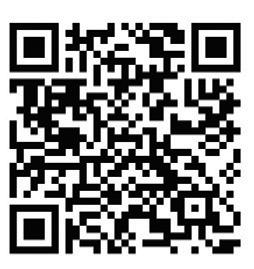







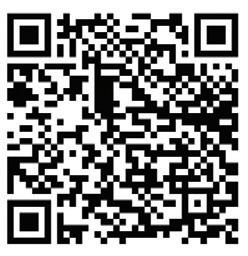

“Drinkthismucheveryday.”
“Don’tover-hydrate.”
By Brittany Hollerbach, Associate Scientist, Deputy Director Center for Fire Rescue & EMS Health Research, NDRI-USA
“Remineralize.” “Filteroutallimpurities.”
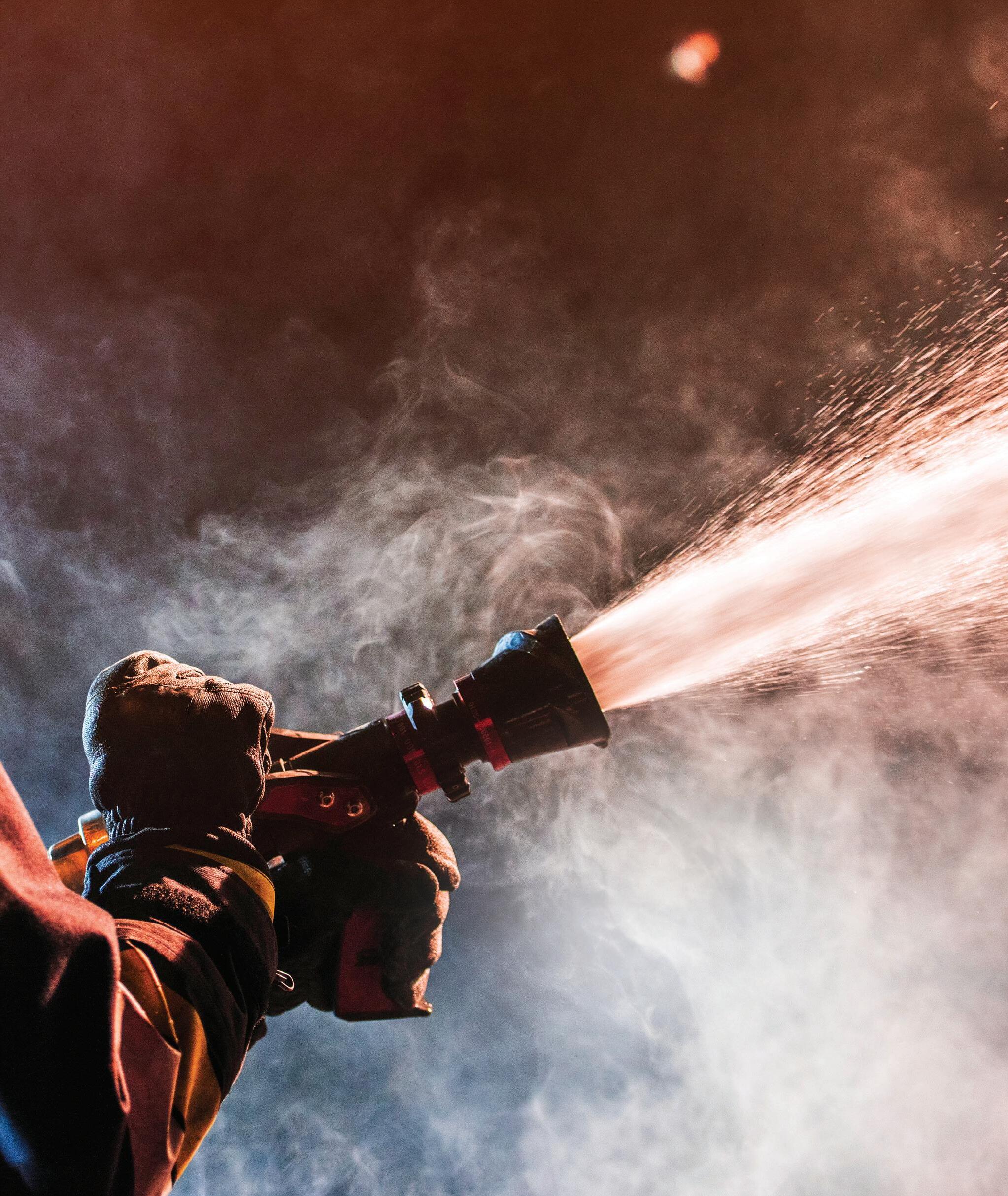
Asking about the safest and best way to stay hydrated is like drinking from a firehose.
“Nevertouchtapwater.” “Tapwater’sbest.”
The National Academy of Sciences recommends men have a daily fluid intake of 13 cups, that’s 104 ounces, 3.1 liters or just shy of a gallon.
For women, the number is nine, which is 72 ounces, 2.1 liters or just over half a gallon.
Other groups push those numbers a bit higher, and those who are physically active (say, on a busy rig) may need more. Remember – these are guidelines and each person’s fluid needs vary from day to day.
Water becomes bubbly through the process of carbonation, which involves dissolving carbon dioxide gas in water under high pressure. When the pressure is released, bubbles form, lowering the pH of water from 7 to 4, making it more acidic. Should we be concerned that seltzer and soda water may harm dental enamel or bone health? Research has not shown conclusively that carbonated beverages are associated with dental decay unless they also contain sugar or other sweeteners like high fructose corn syrup. Nor have they shown an association with decreased bone
mineral density. There, the high phosphorus content specific to dark cola soft drinks is the culprit – not the carbonation. Still water is absorbed more quickly than sparkling varieties but once absorbed, the effects and benefits are the same.
Cold water can have a waking effect and make you feel more alert, but it’s a matter of choice. If you prefer colder water, you’re likely to drink more of it. Fluid ingestion should match sweat losses during exercise and the drink should contain carbohydrates and electrolytes to assist water movement in the intestine and to improve palatability.
Get hydrated before strenuous work such as fighting a house fire, and rehydrate after extreme physical activity. Drink whatever temperature of water you prefer.
Every year, millions of people living in the United States get their tap water from a public community water system. According to the CDC (Centers for Disease Control and Prevention), the United States has one of the safest and most reliable drinking water systems in the world. EPA (Environmental Protection Agency) regulations and treatment requirements for public water systems such as filtration and disinfectants like chlorine prevent waterborne pathogens, such as viruses, from contaminating drinking water. Studies done on bottled water have found it’s no cleaner or safer than well-regulated tap water. Bottled water is simply more expensive and promotes plastic waste, itself an emerging drinking water threat. (Fascinating fact: at the height of the pandemic when bottled water sales surged, news reports revealed both Pepsi and Coke used municipal water for their bottled water products.)
PURIFY OR REMINERALIZE?
Unless you’re using well water, you probably don’t need to strip your water of its natural minerals. But, says one researcher, if you do use reverse osmosis (especially in the case of well water), it may be necessary to remineralize your water as you are losing some of the natural minerals such as fluoride. And different reverse osmosis systems have different levels of efficacy for different chemicals. Be aware of how effective these devices are for what you are trying to remove.
There is a lot of information on the web about adding unprocessed or unrefined salts (such as Himalayan salt) to distilled, structured water or the reverse osmosis water you drink. Check the science and don’t just dump table salt in your water bottle. (Need tips for remineralizing water? Visit thewatergeeks.com/ how-to-remineralize-ro-water)
PLASTIC OR SOME OTHER STUFF?
People often say they prefer the taste of bottled water but may not be making the healthiest choice thanks to contaminants in the plastic bottle. And then there’s the issue of waste, even if the bottle is recyclable. Companies tout PET plastic as 100% recyclable, versatile and made to be remade.
But a 2011 study from the University of Cincinnati found there may be BPA (Bisphenol A) in different types of water bottles and as new types appear constantly, it’s hard to know whether or not they shed chemicals. Some non-plastic products claim to be BPA- and phthalate-free, but like “PFAS-free” bunker gear, we just don’t know everything about the chemicals contained in the stainless steel or epoxy used. Until we know more, BPA- and phthalate-free is probably the way to go.
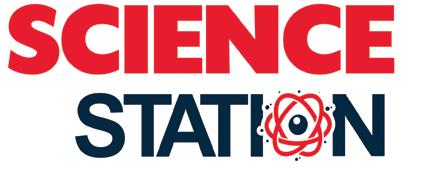
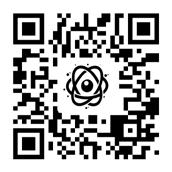
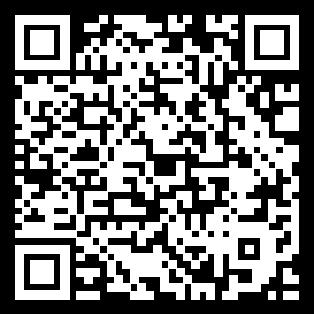
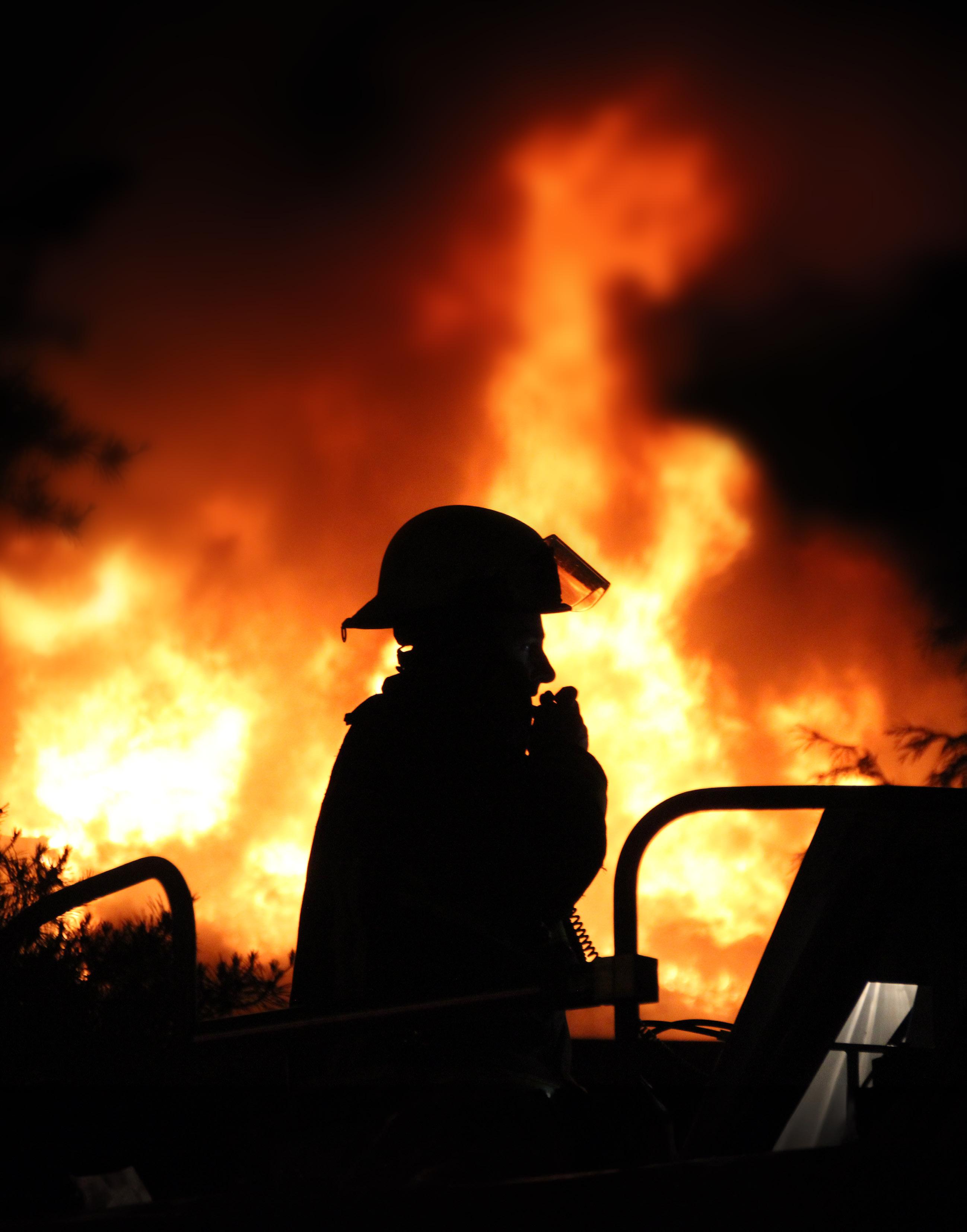

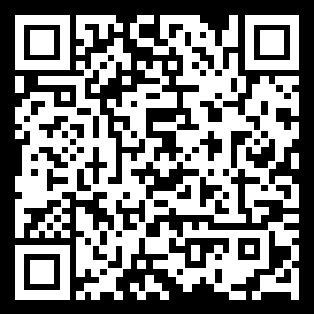


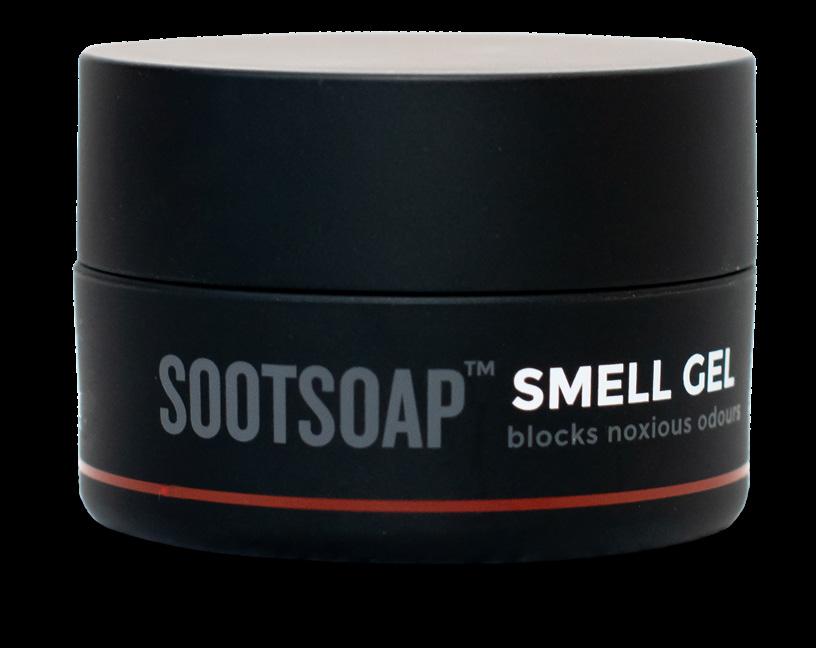
Does NOT contain toxic camphor, petroleum or turpentine by-products
FIRST RESPONDER APPROVED
Give your nose a break.
SOOTSOAP SMELL GEL is an all-natural, safe solution for blocking even the most noxious odors on the job.
“I had no idea what I was using was toxic! Smell Gel is amazing - not only is it SAFE, it works great. I will be carrying it with me at all times.”
— MIKE T., FIREFIGHTER, ON
“I was attending a sudden death investigation to assist the coroner. Deceased male had been undiscovered for seven days ... THIS GEL IS AWESOME.” — POLICE OFFICER DARBYSHIRE
GET THE NEWEST INNOVATION FROM THE MAKERS OF SOOTSOAP PERSONAL DECON PRODUCTS!
Have you ever been on a social media bender in the wee hours of the morning, watching a smoothie swirl round and round in a blender? Sure you have. We’ve all been there – but very few of us have made them.
Smoothie bowls, especially those rich with superfoods, have a diverse range of health benefits. Whether your goal is heart health, immune support, reducing inflammation, or weight loss, rest assured there is a bowl for you. And getting started is easier than you might think.
Grab your blender, make a shopping list and have fun with your fruit choices. Here are six recipes to get you started. Don’t forget to get assorted toppings for each bowl such as chia seeds, your favorite healthy nuts, coconut and berries.



Spirulina is responsible for the vibrant blue/green color that we see in smoothie bowls. From the genus arthrospira ("arthro" roughly means "joint," and "spira" meaning "spiral"), this aquatic superfood contains fat-soluble vitamins (A, E, and K), fatty acids (DHA, EPA), betacarotene, and other minerals.
1 cup frozen banana
1 cup frozen mango
¼ tsp blue spirulina powder
¼ tsp green spirulina
Splash of milk (optional)
1 Blend the frozen banana, frozen mango and blue and green spirulina until smooth & creamy.
2 Add a splash of milk for moisture if desired.
3 Serve with desired toppings.
ANTI-INFLAMMATORY
SMOOTHIE BOWL
Turmeric comes from the root of the curcuma longa plant, part of the ginger family. It’s known for both its antioxidant and antiinflammatory properties. Some studies even suggest that turmeric helps with memory loss. This is a first responder super duper food.
1 cup milk of choice
3 to 4 ice cubes
1 tsp vanilla
1 tsp turmeric powder
2 tsp freshly grated ginger chai tea spice
1 to 2 tbsp honey
1 scoop low-sugar vanilla protein powder
1 Blend ingredients on high.
2 Serve with desired toppings.

JOINT HEALTH
SMOOTHIE BOWL

Beets are a cheap, easy-to-cook, vibrant superfood that have heart-healthy components such as nitrates and fiber. And flaxseed contains omega-3 fatty acids, lignans and fiber which help with controlling high blood pressure and high cholesterol. When these two get together, your cardiovascular system reaps the benefits tenfold.
½ cup roasted beets
1½ cups frozen raspberries
½ frozen banana
1 tbsp ground flax
½ cup milk of choice
1 scoop of low-sugar vanilla protein powder
1 Blend ingredients on high. Add more milk for a thinner consistency.
2 Serve with desired toppings.

Kale and spinach might get stuck in your teeth, but their health benefits can’t be ignored. Kale is vitamin-rich, high in antioxidants, low in calories, is a cholesterol-lowering agent, and contains anti-cancer compounds. Spinach also has cancer prevention and blood pressure-lowering properties, thanks to its fiber content, vitamins, iron, and calcium. When kale and spinach are combined with fruit you can’t taste them. You’re welcome.
1¼ cup milk of your choice
1 cup spinach and 1 cup kale
1 frozen banana
½ cups frozen pineapple
1 tbsp nut butter
1 scoop of low-sugar vanilla protein powder
1 tsp cinnamon and 1 tsp honey
1 Blend ingredients on high.
2 Serve with desired toppings.
OXIDATIVE

If you remember your grade 10 chemistry, you’ll recall that free radicals (oxygen-containing molecules) can create big reactions in your body. This is called oxidation – and oxidative stress occurs when free radicals and antioxidants are out of whack. An excess of free radicals can contribute to a vast number of diseases - especially cancer. Thankfully, nuts are antioxidant mega machines that help neutralize free radicals.
1 cup Greek yogurt
½ cup milk of your choice
2 frozen bananas
3 tbsp almond butter (or nut butter of your choice)
1 tbsp cocoa powder
1 Blend ingredients on high.
2 Serve with desired toppings.

Bone health shouldn’t ever be trendy. Managing your bones will pay off until your last day on the job and well into your retirement. Keeping bones in tip-top shape means watching your calcium intake. Do you know how much calcium you need in a day? Experts suggest no less than 700 mg a day, but this amount is based on your personal needs – so chat with your MD.
1 cup strawberries
1 cup frozen mango chunks
1 frozen banana
1 cup plain 2% Greek yogurt
1 ½ cups chopped fresh fruit (such as bananas or blueberries)
2 tsp chia seeds
1 tsp cinnamon
1 Blend ingredients on high.
2 Serve with desired toppings.
HEALTH
BOWL
